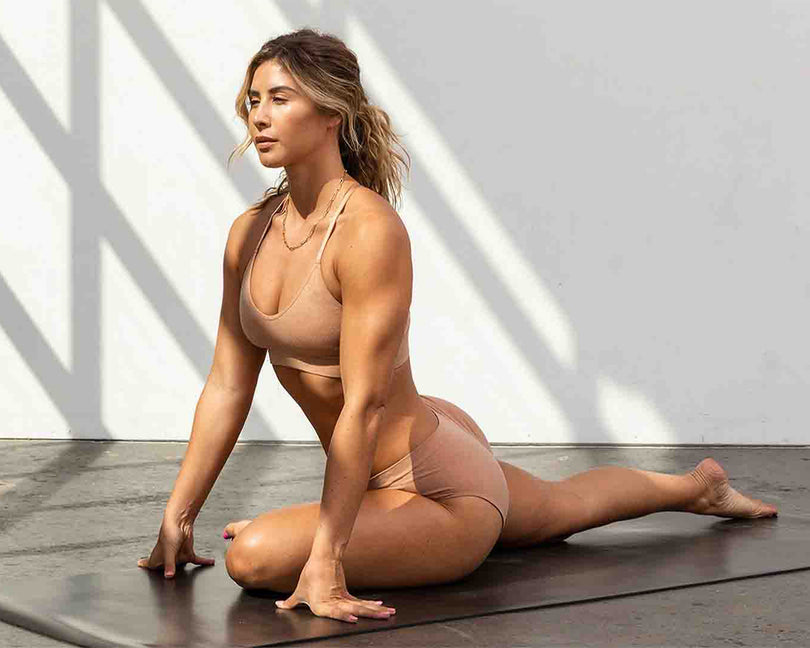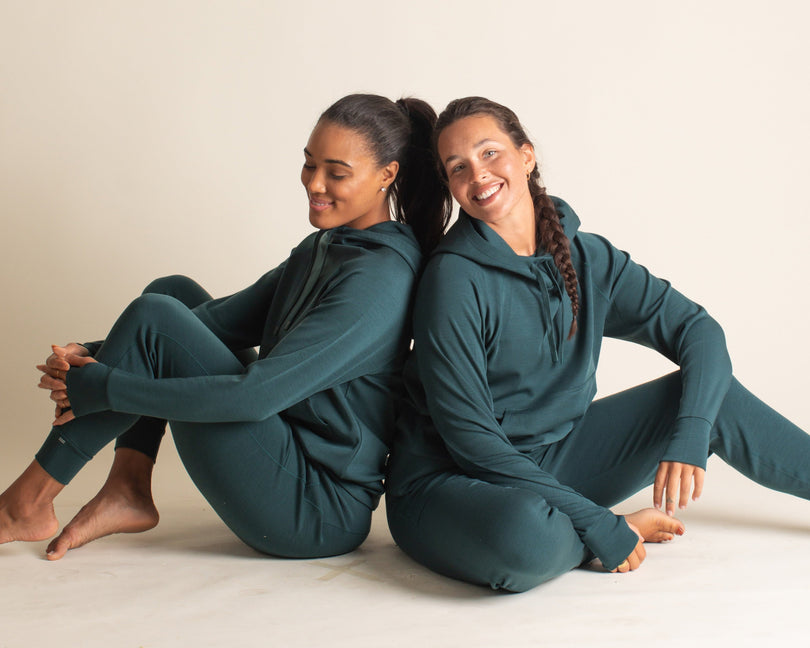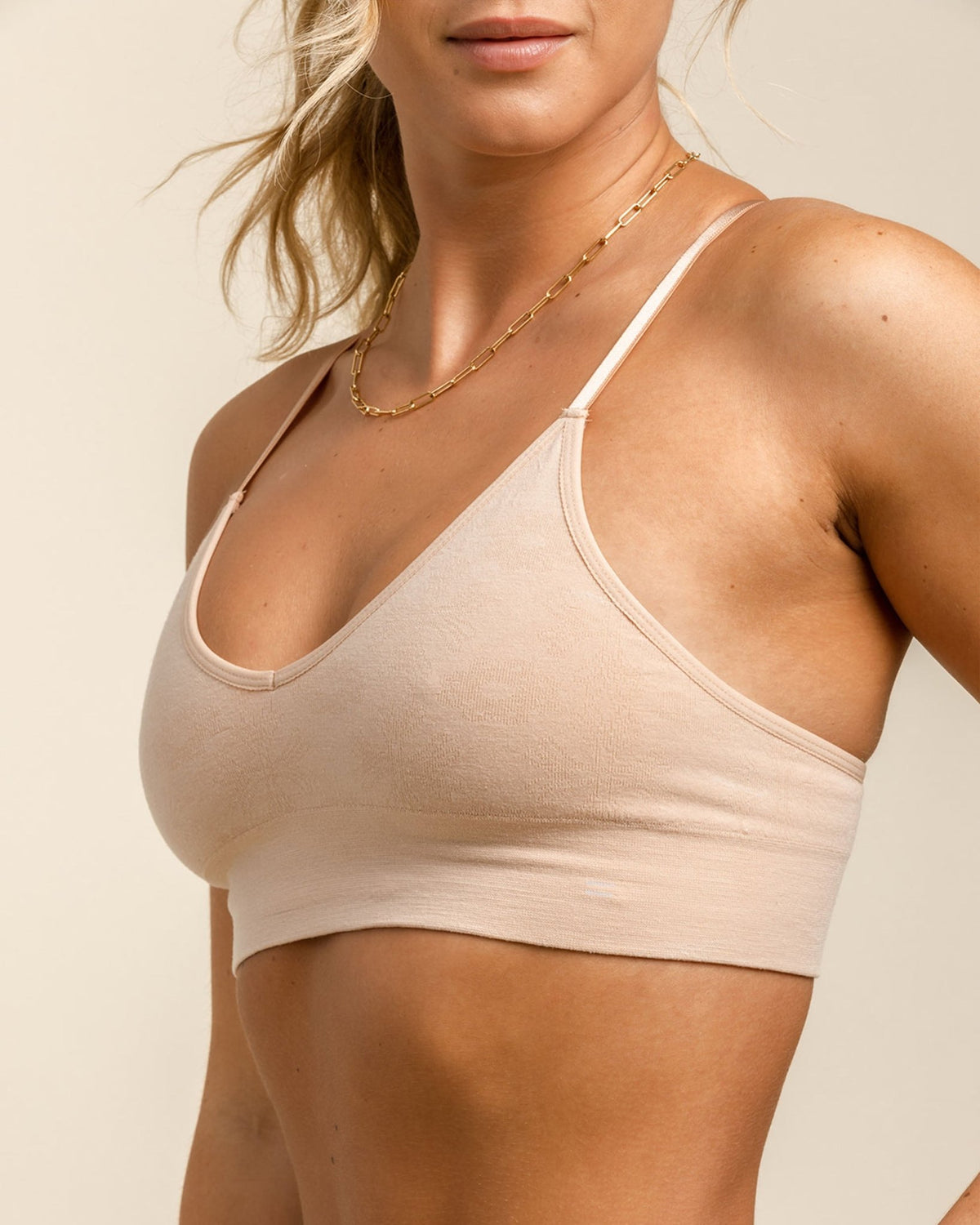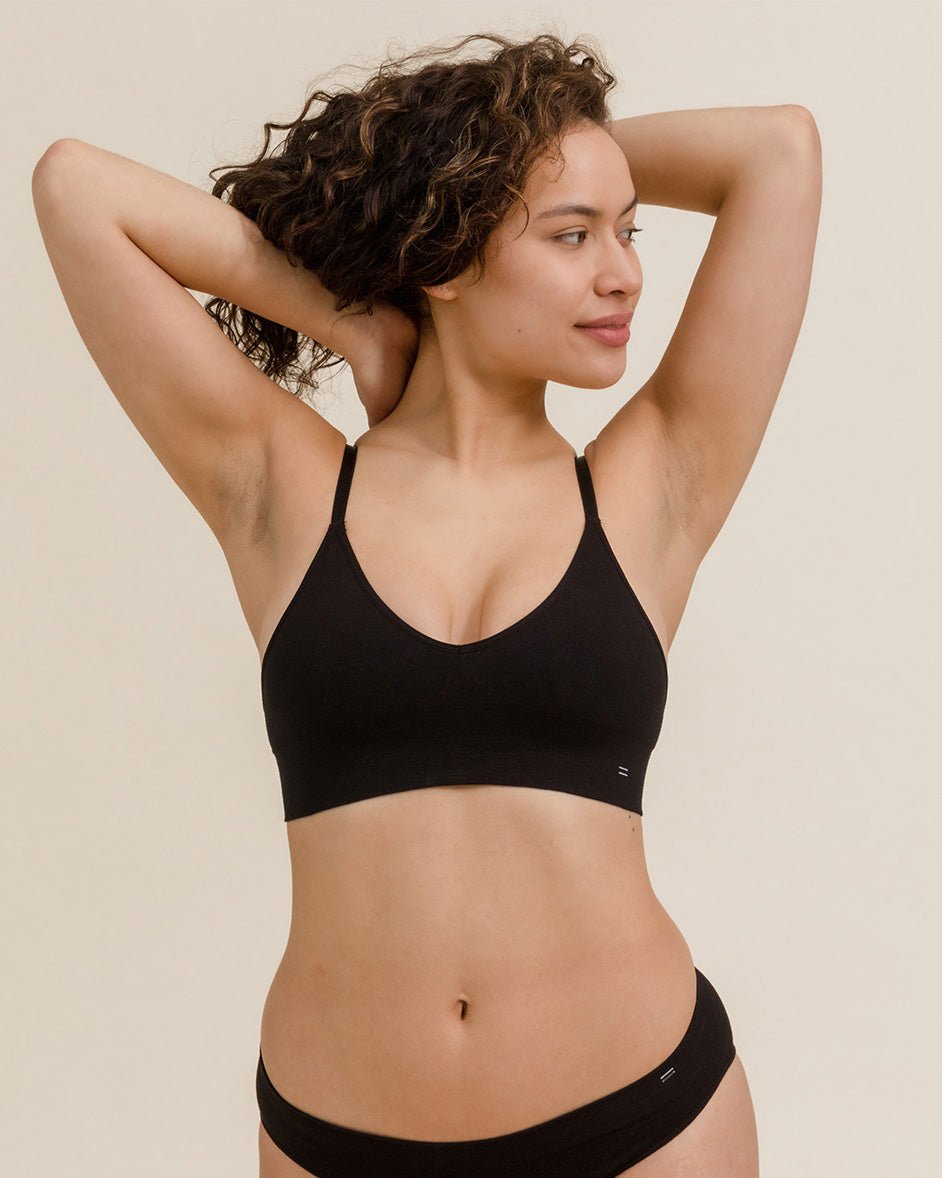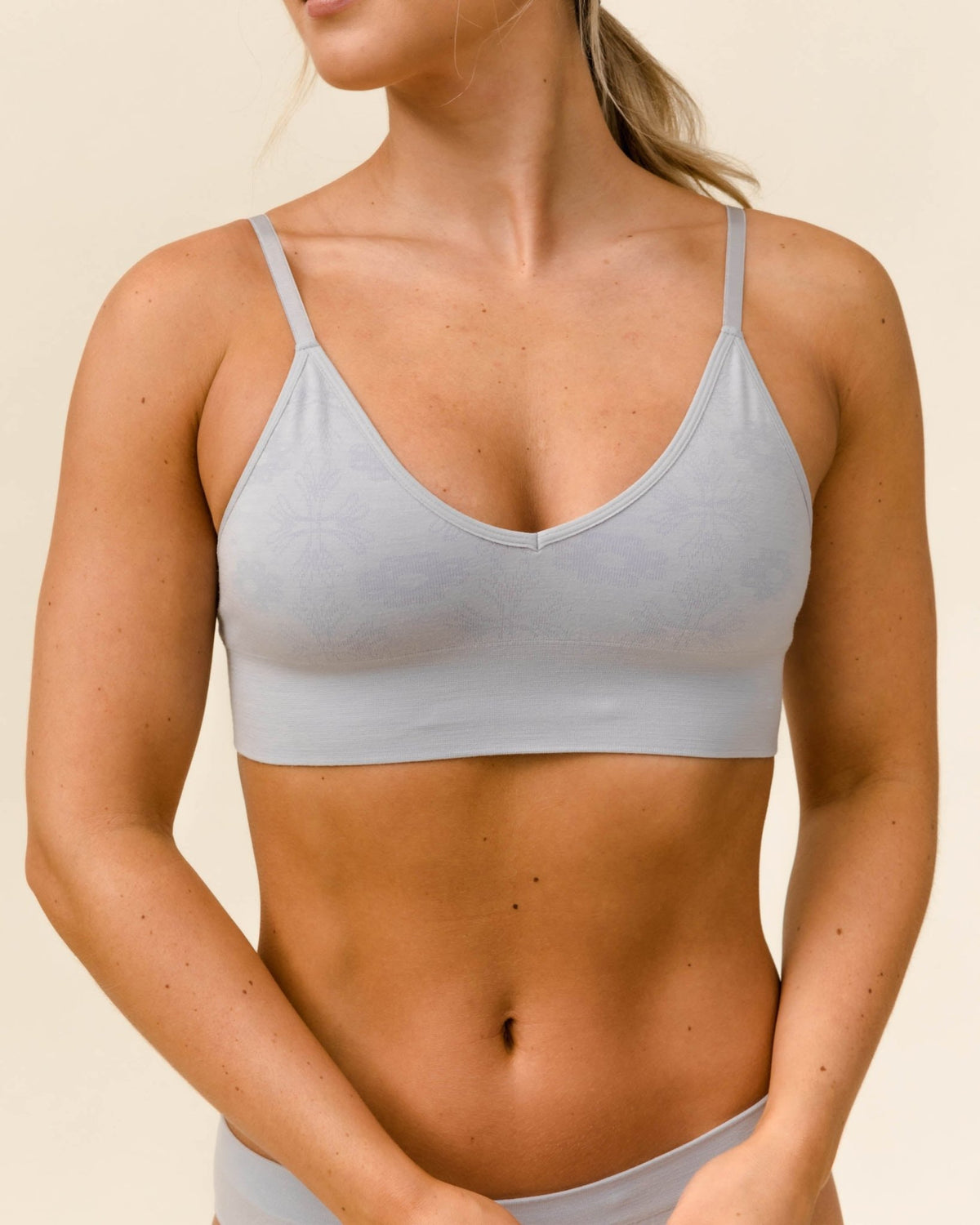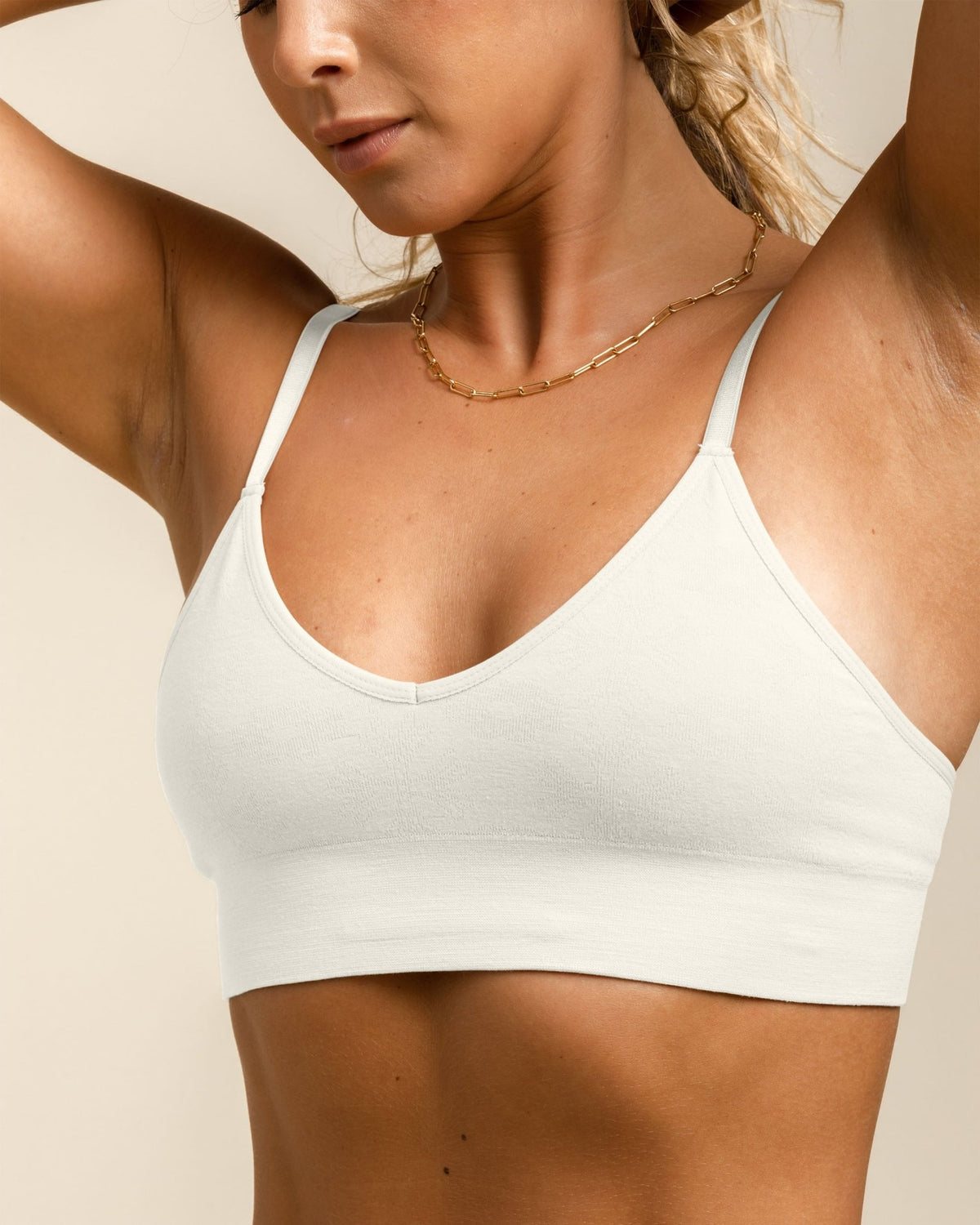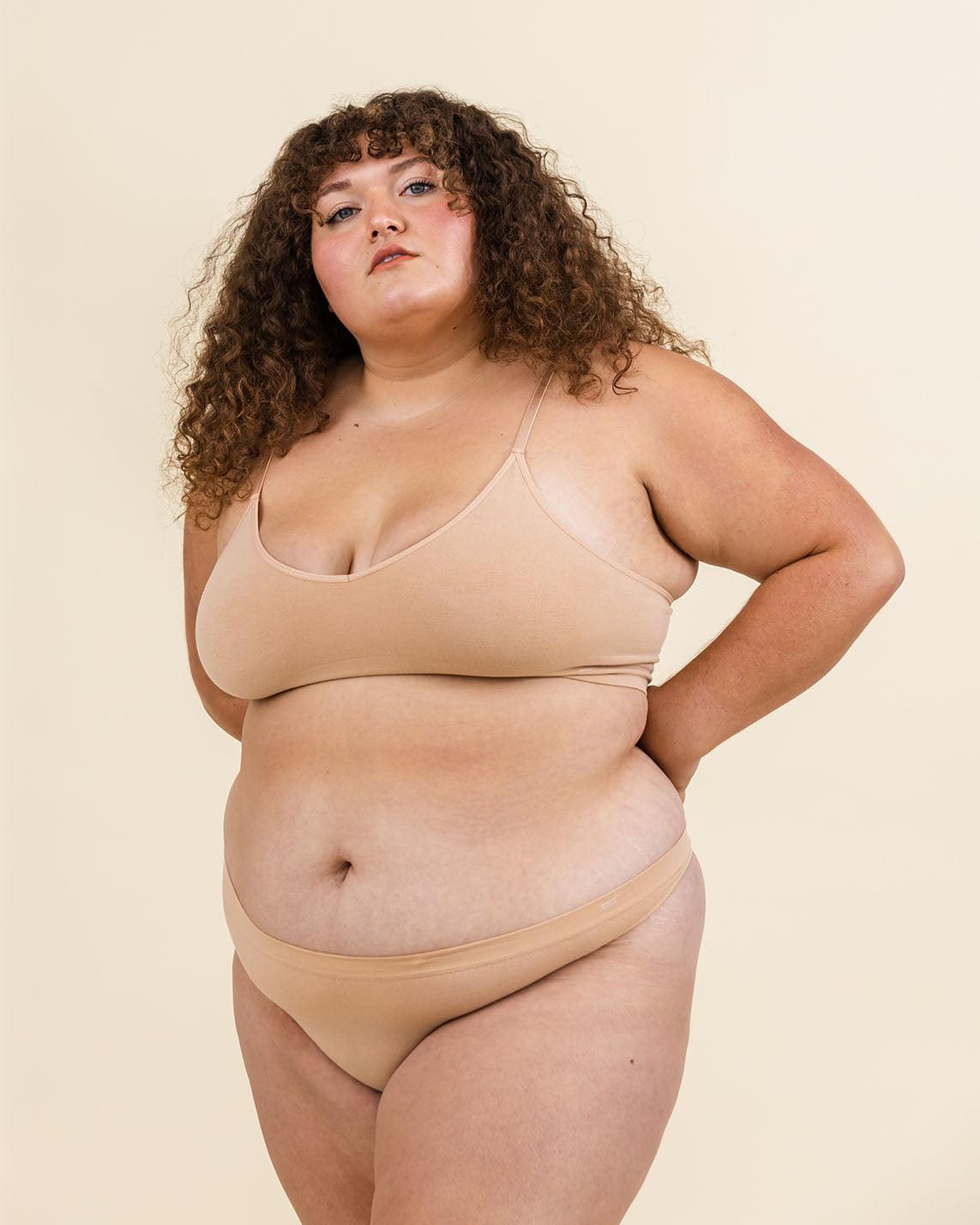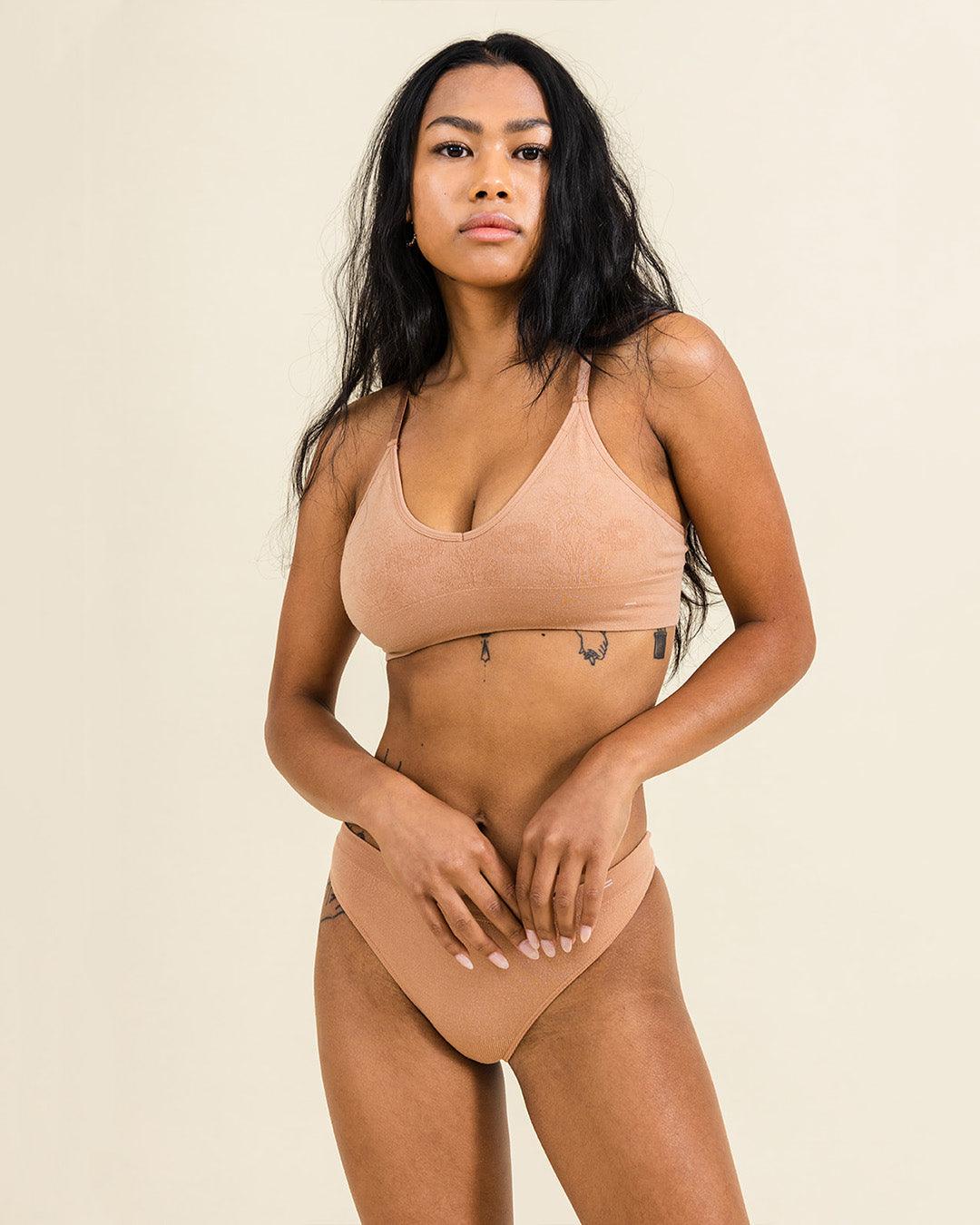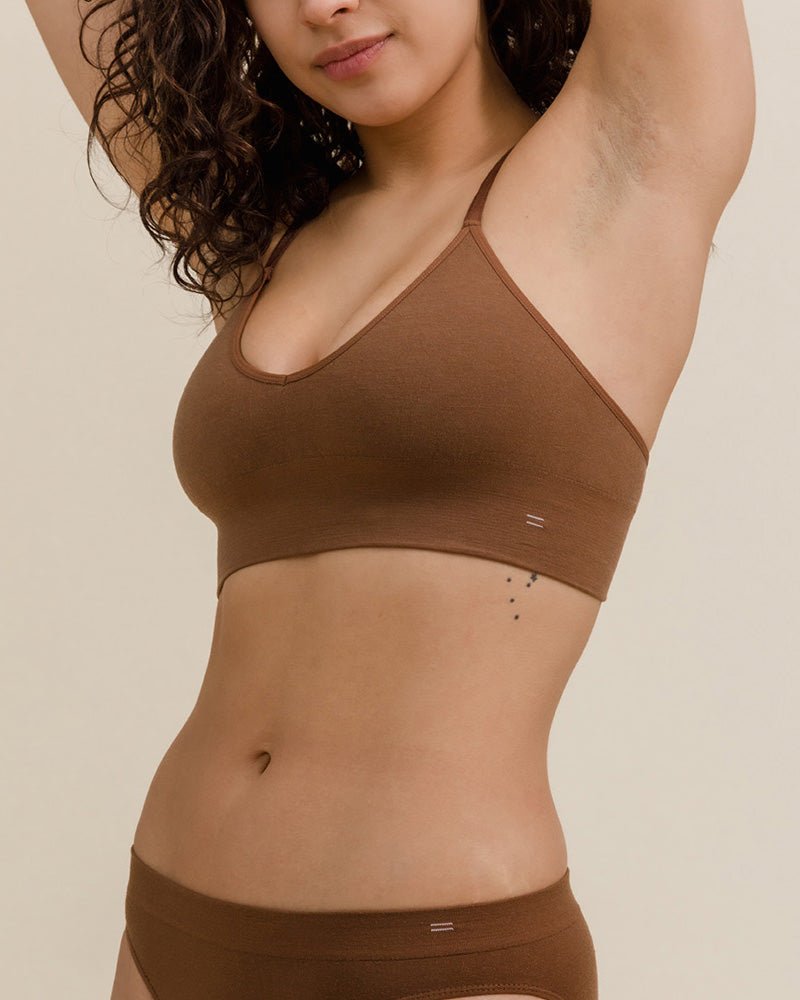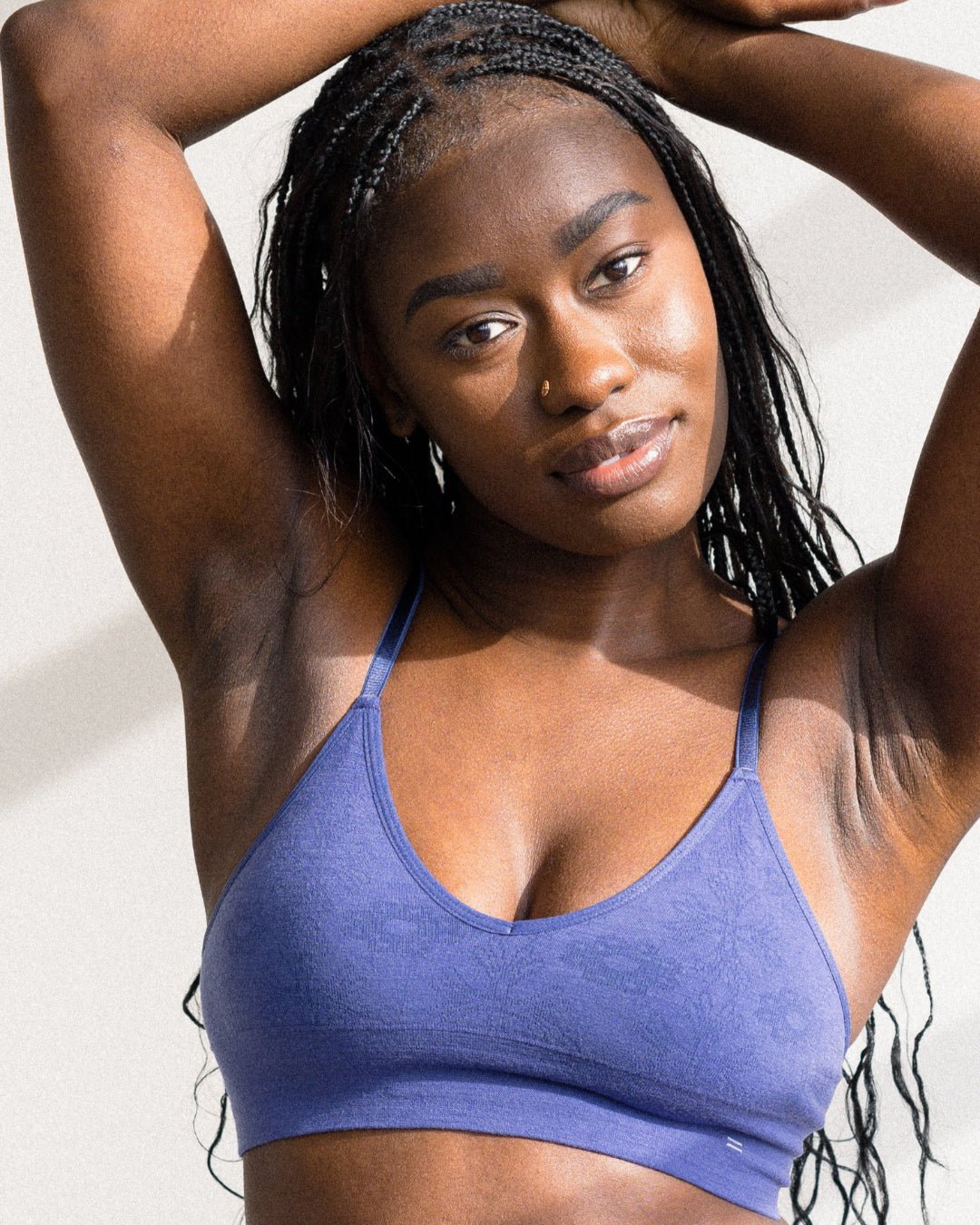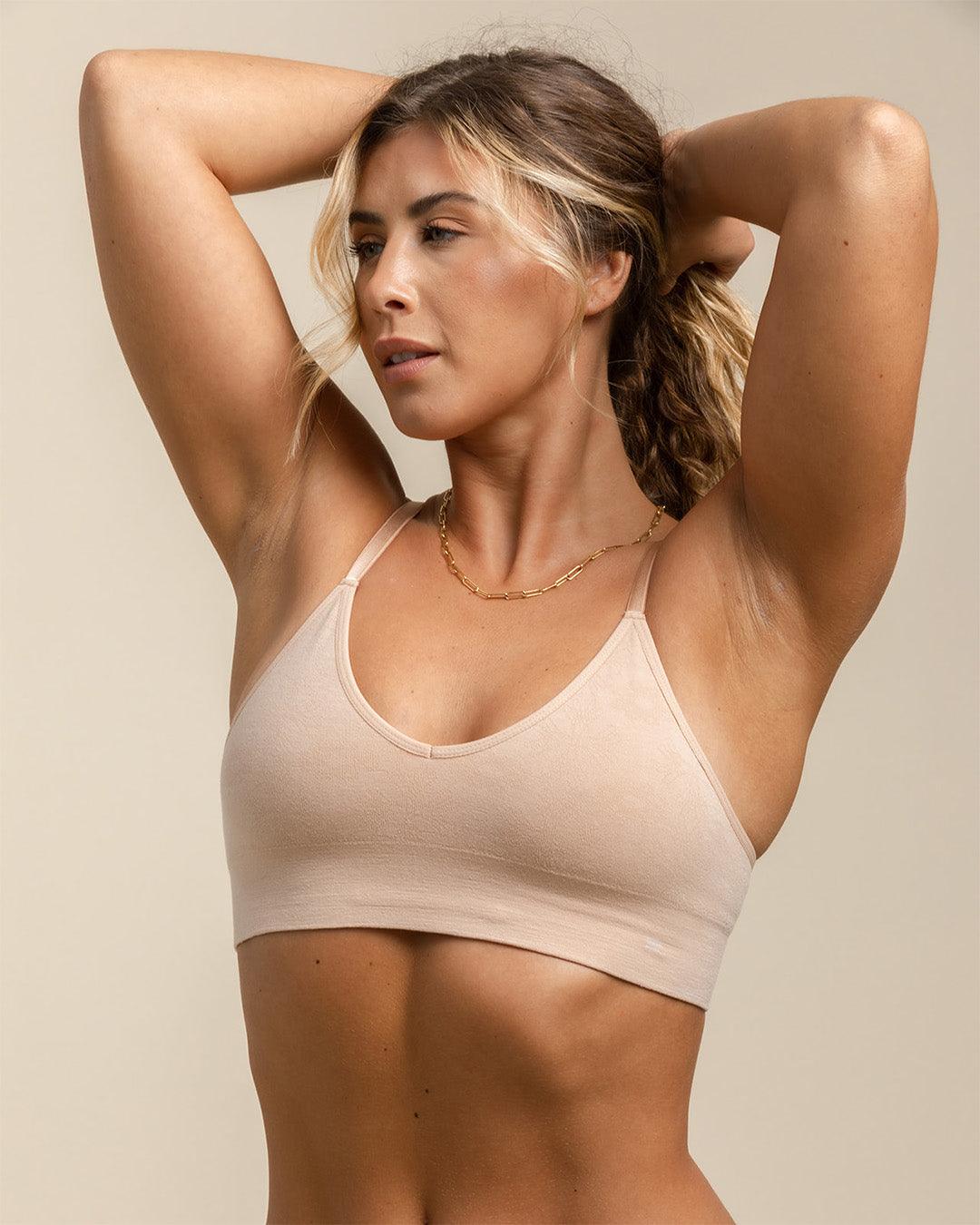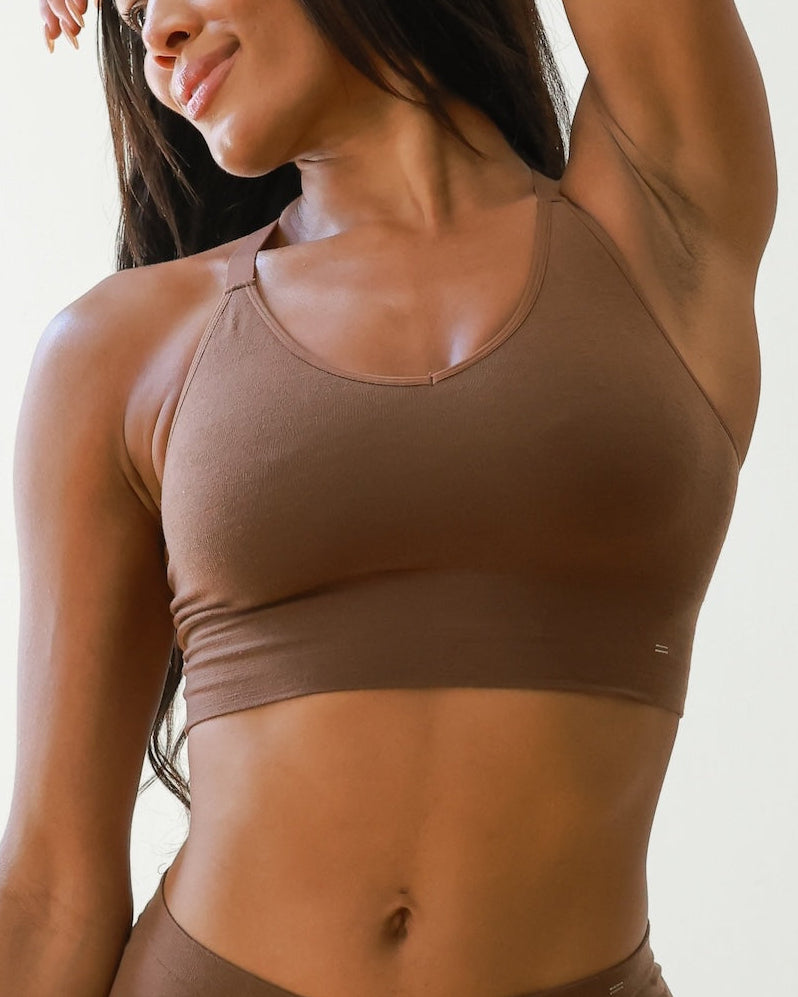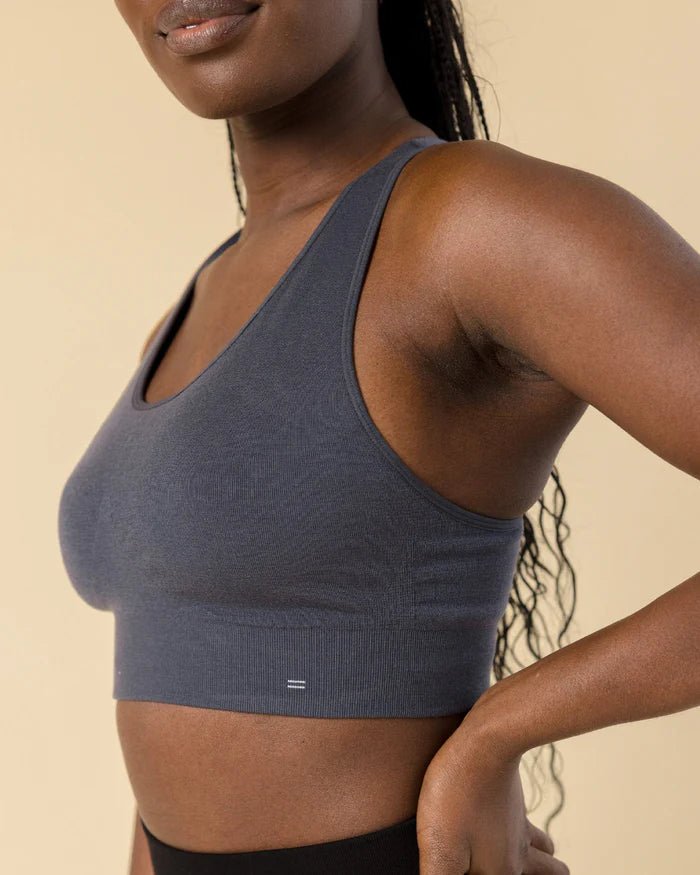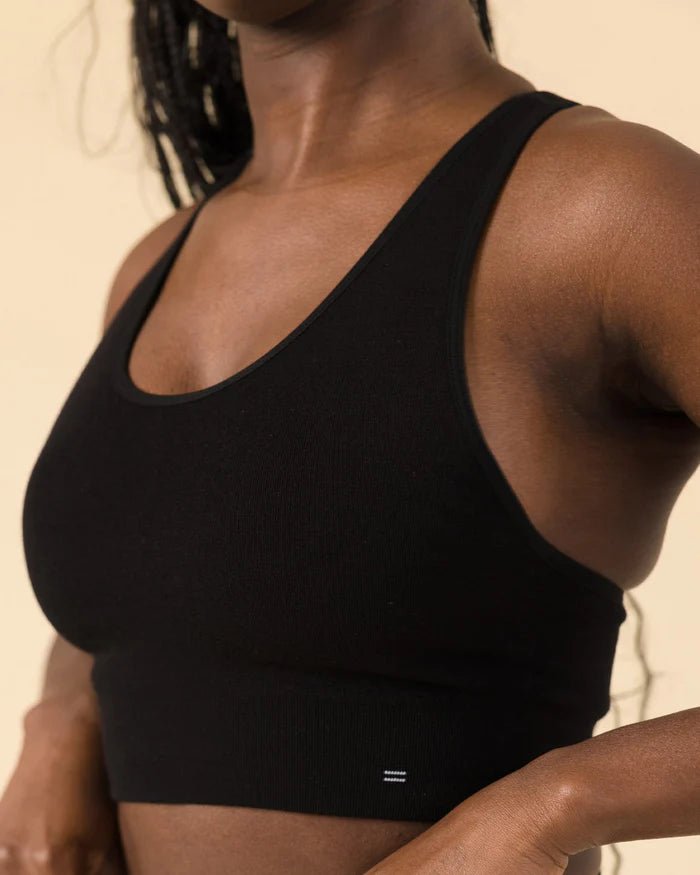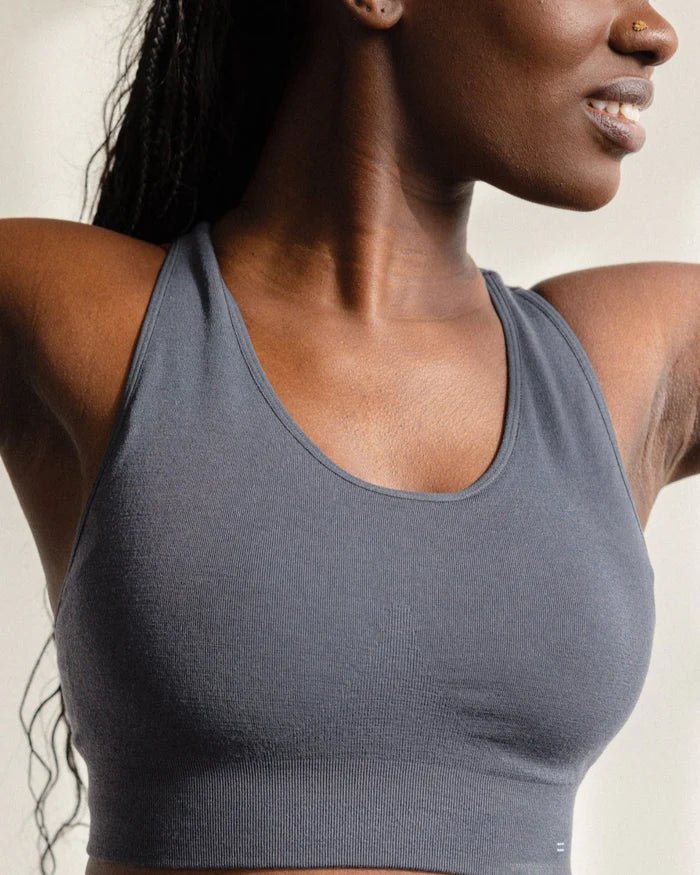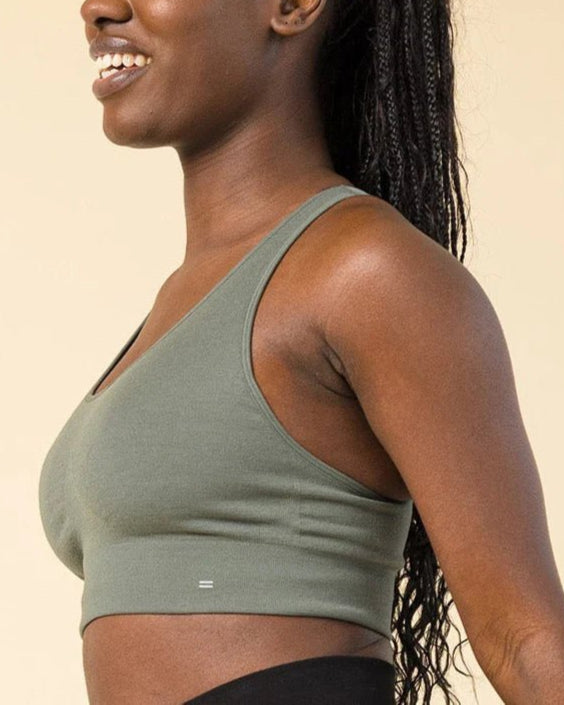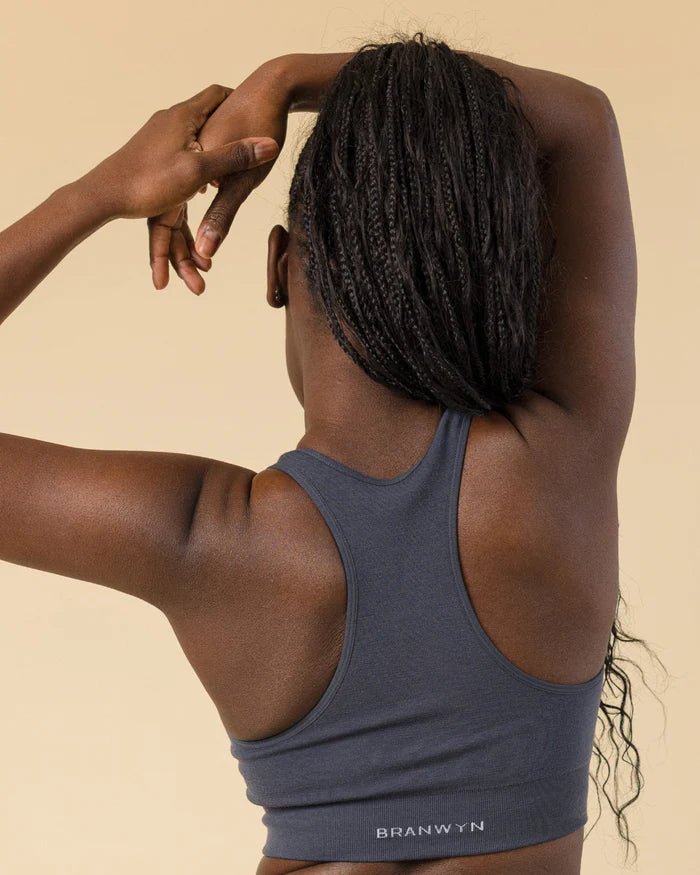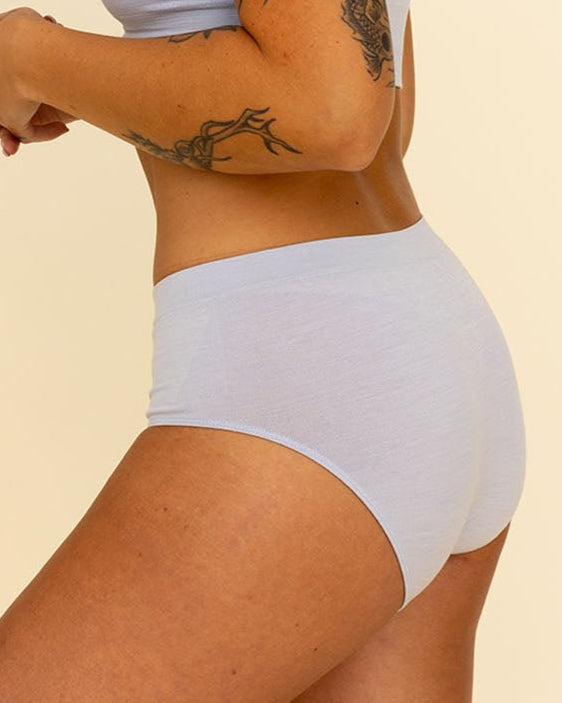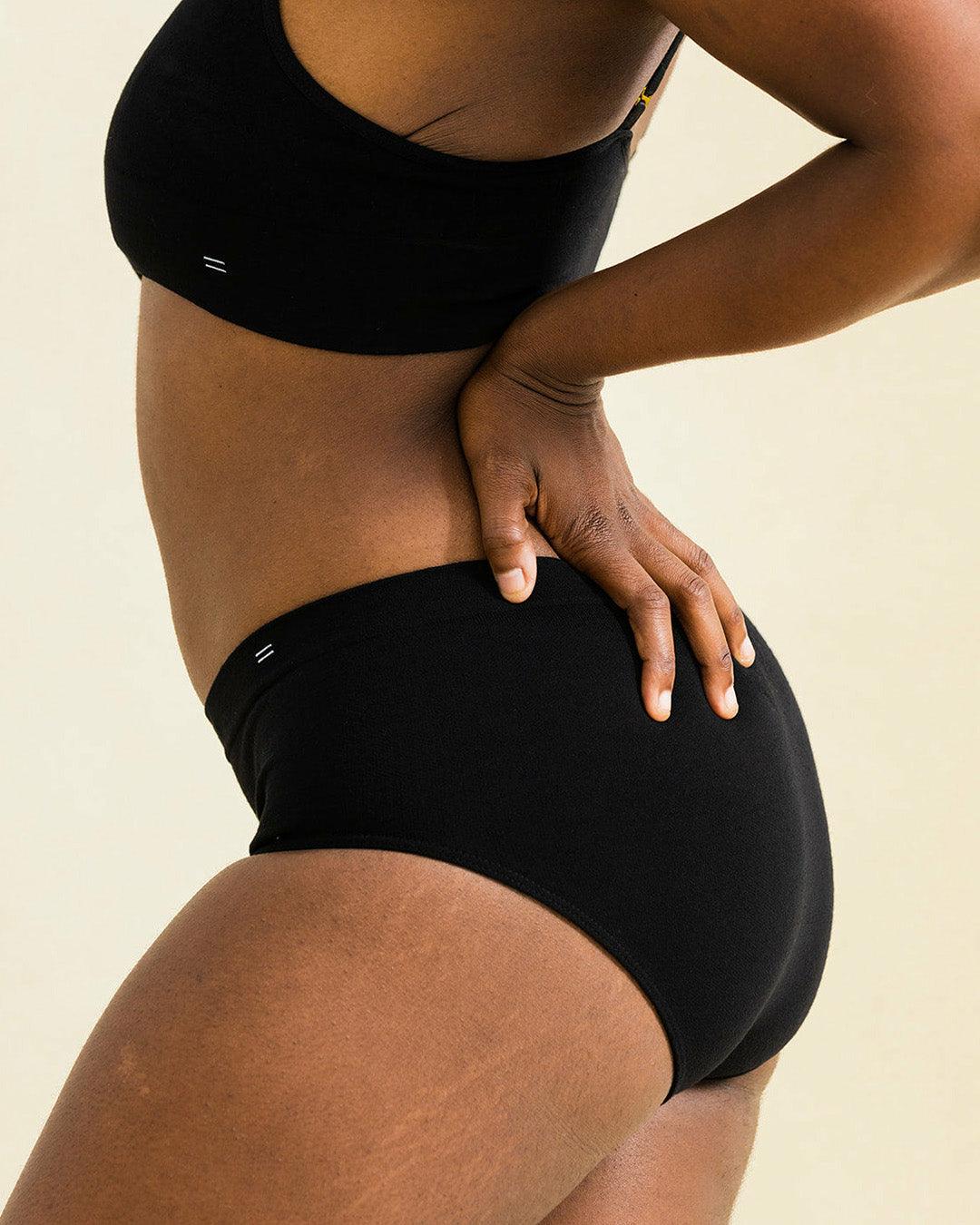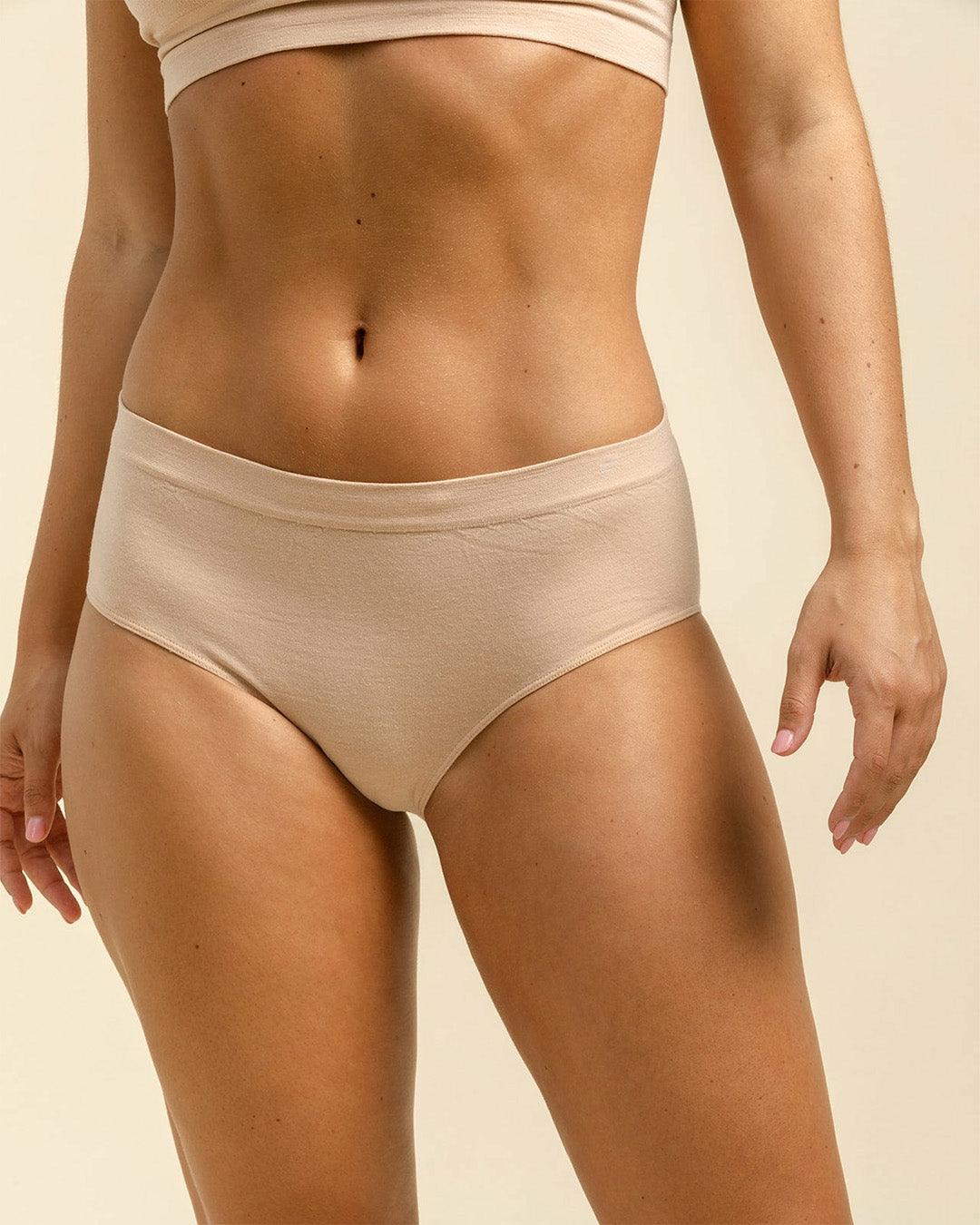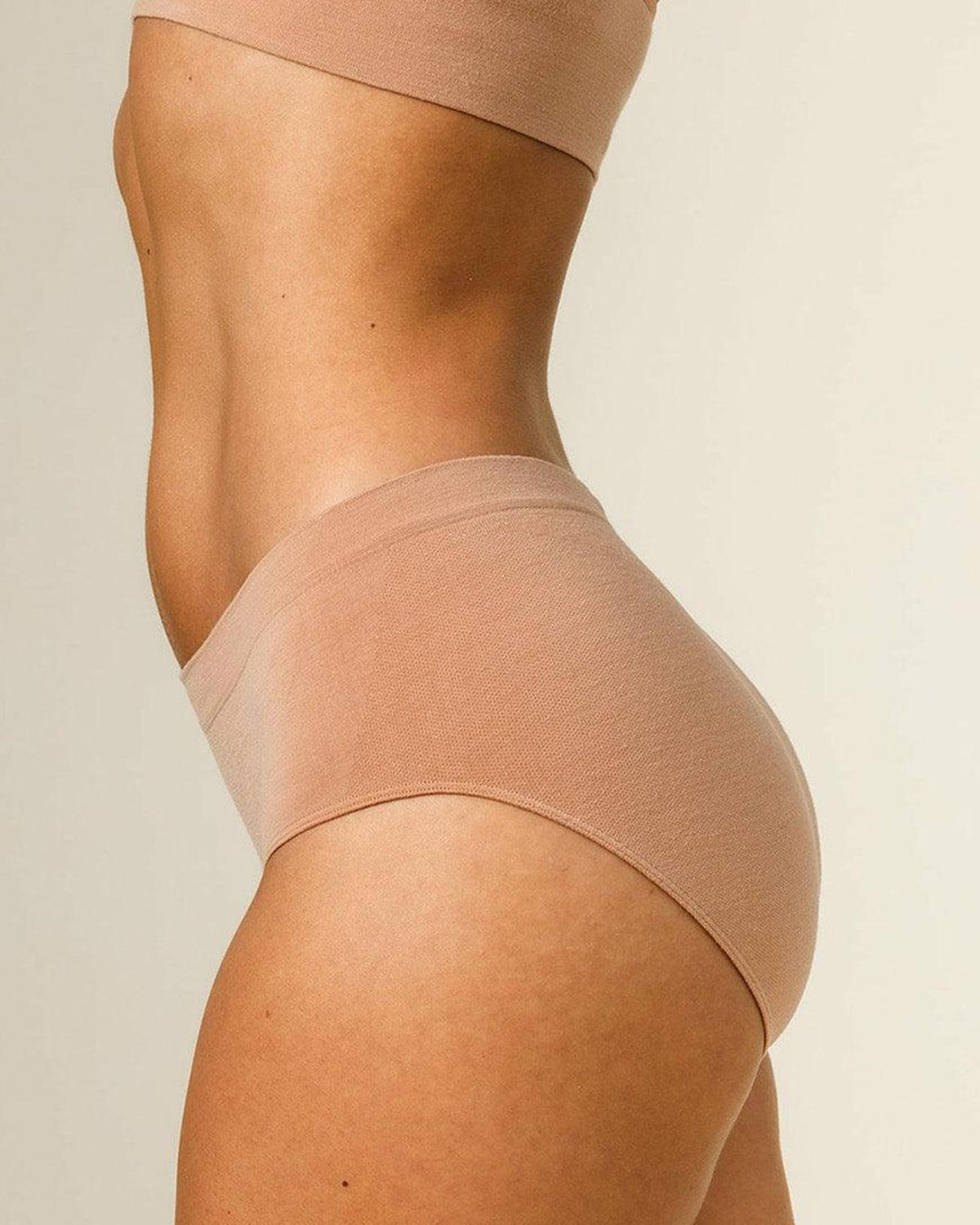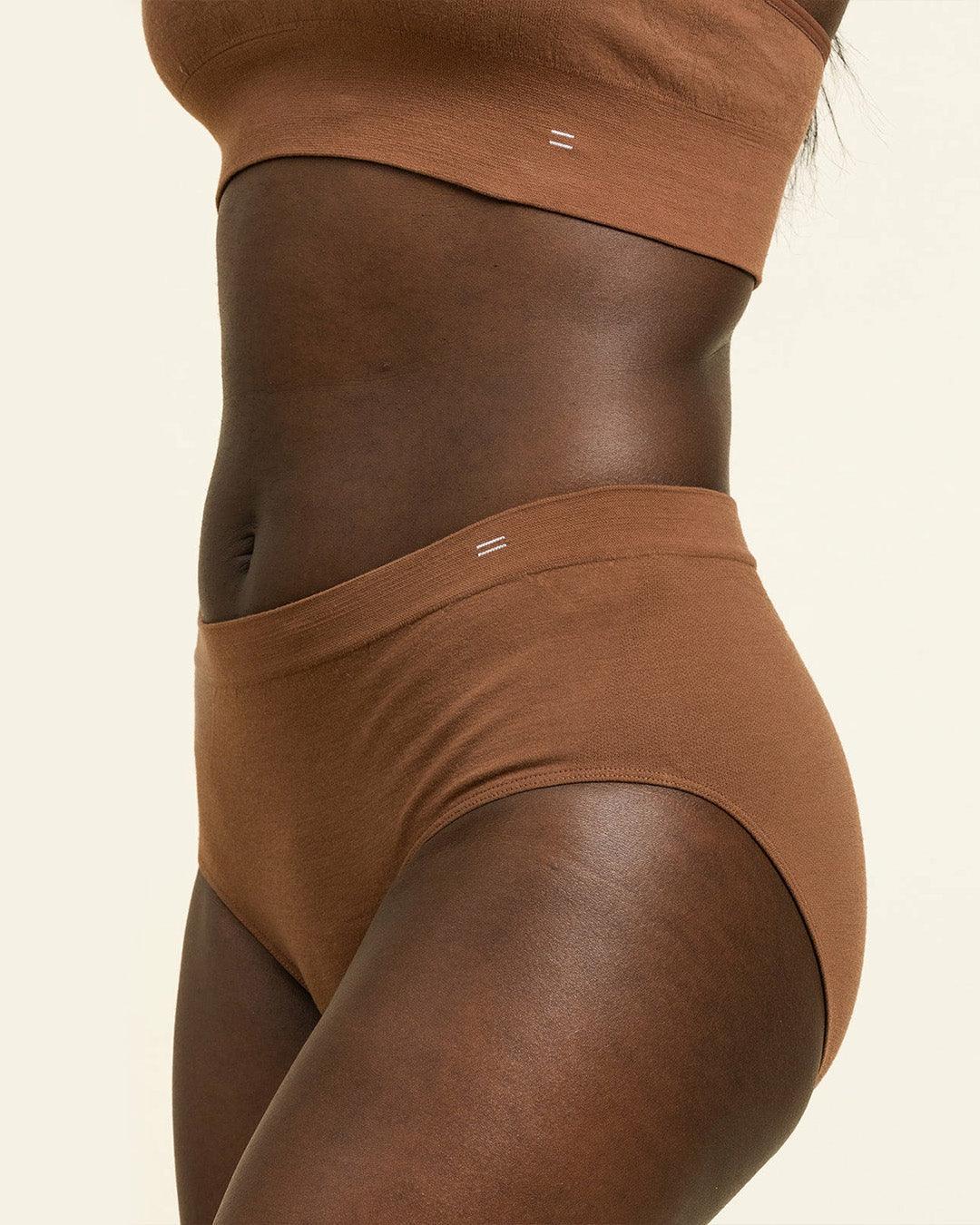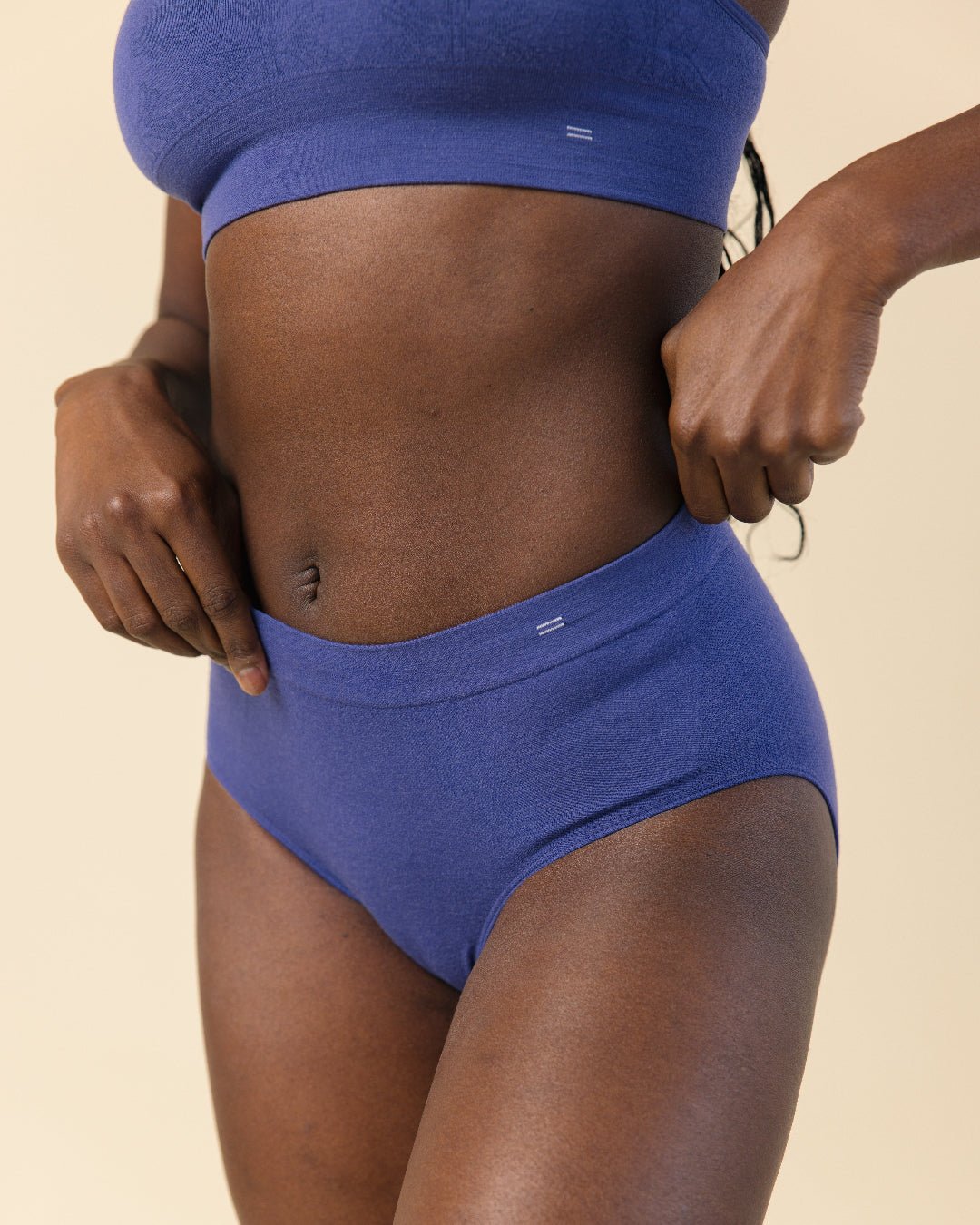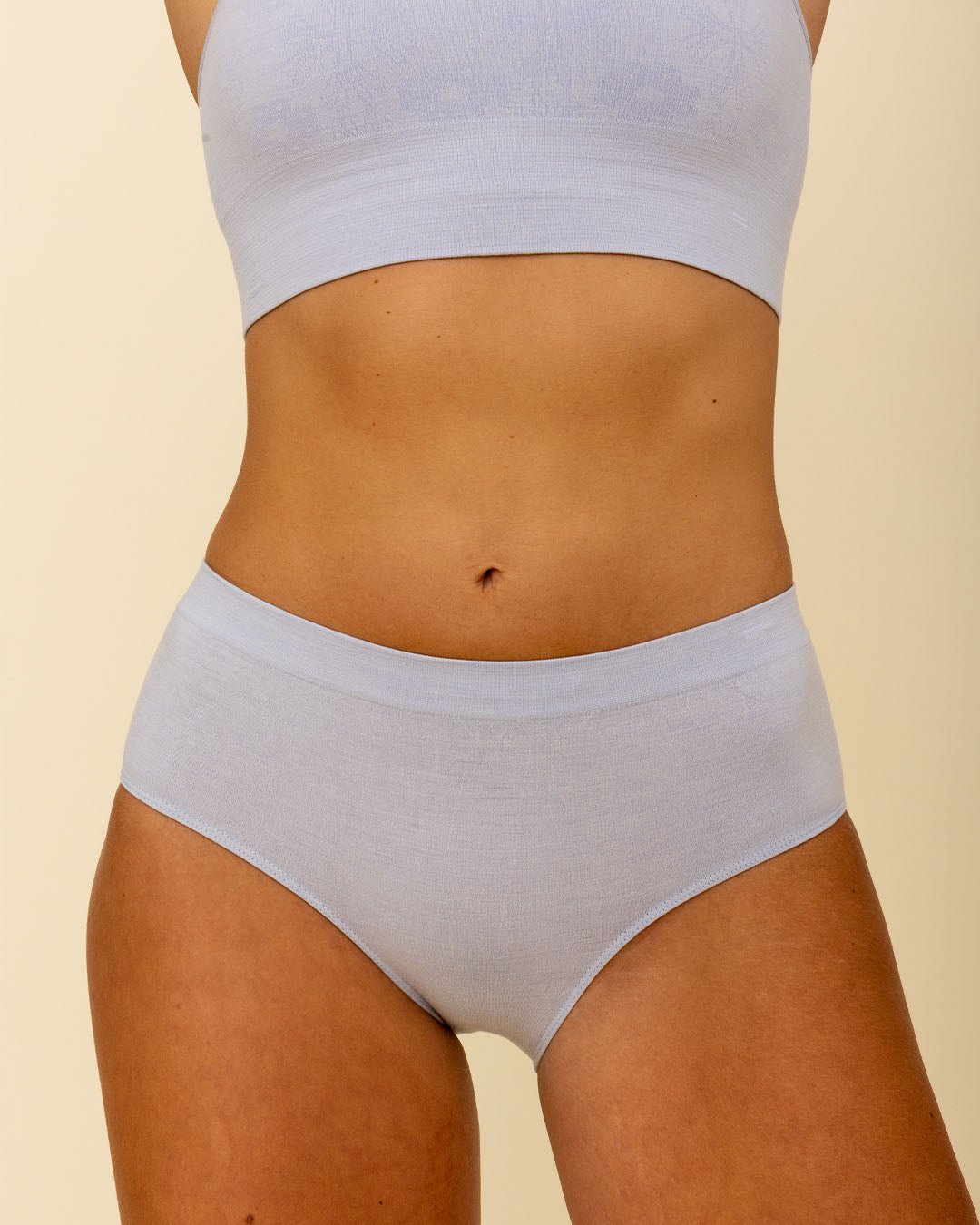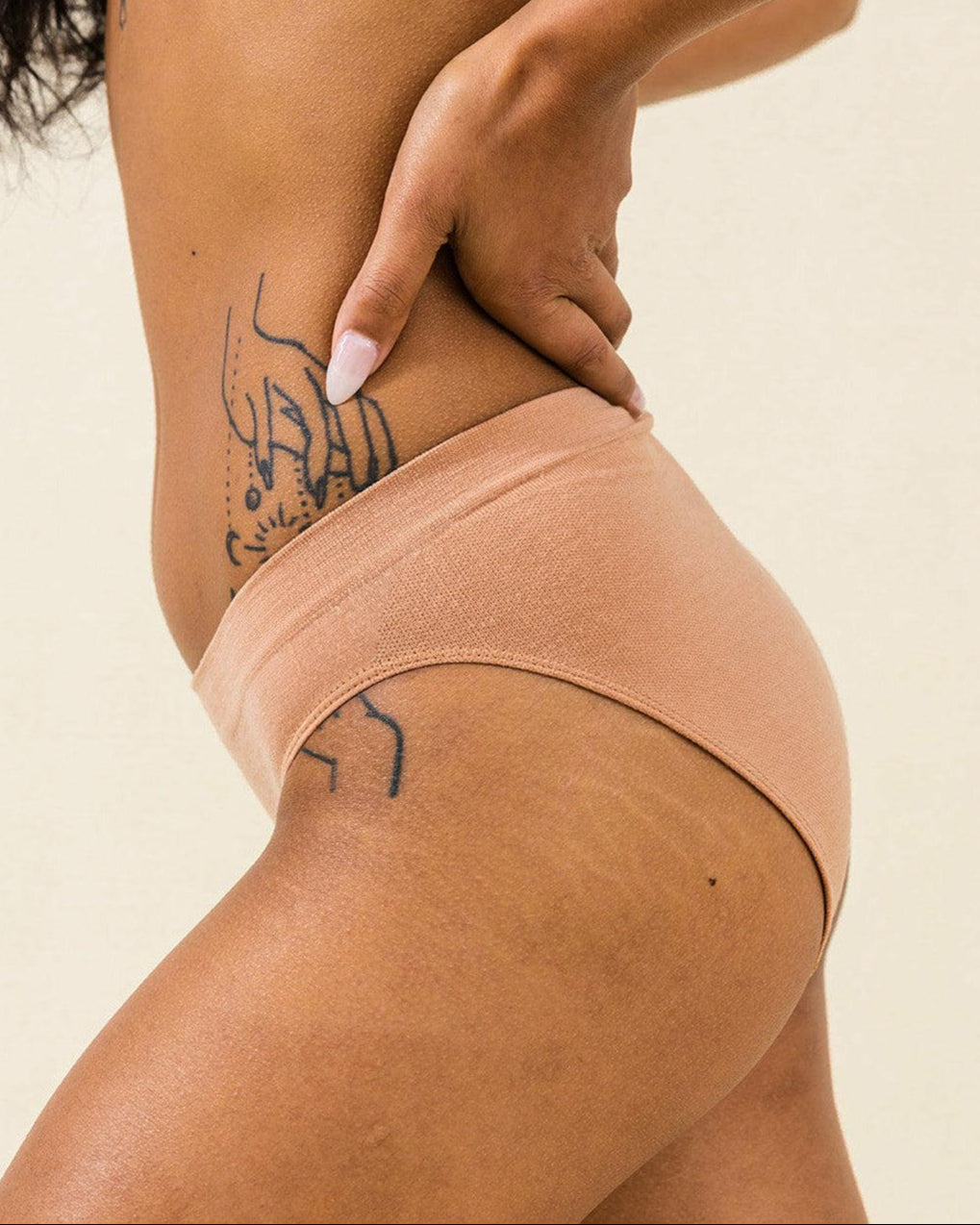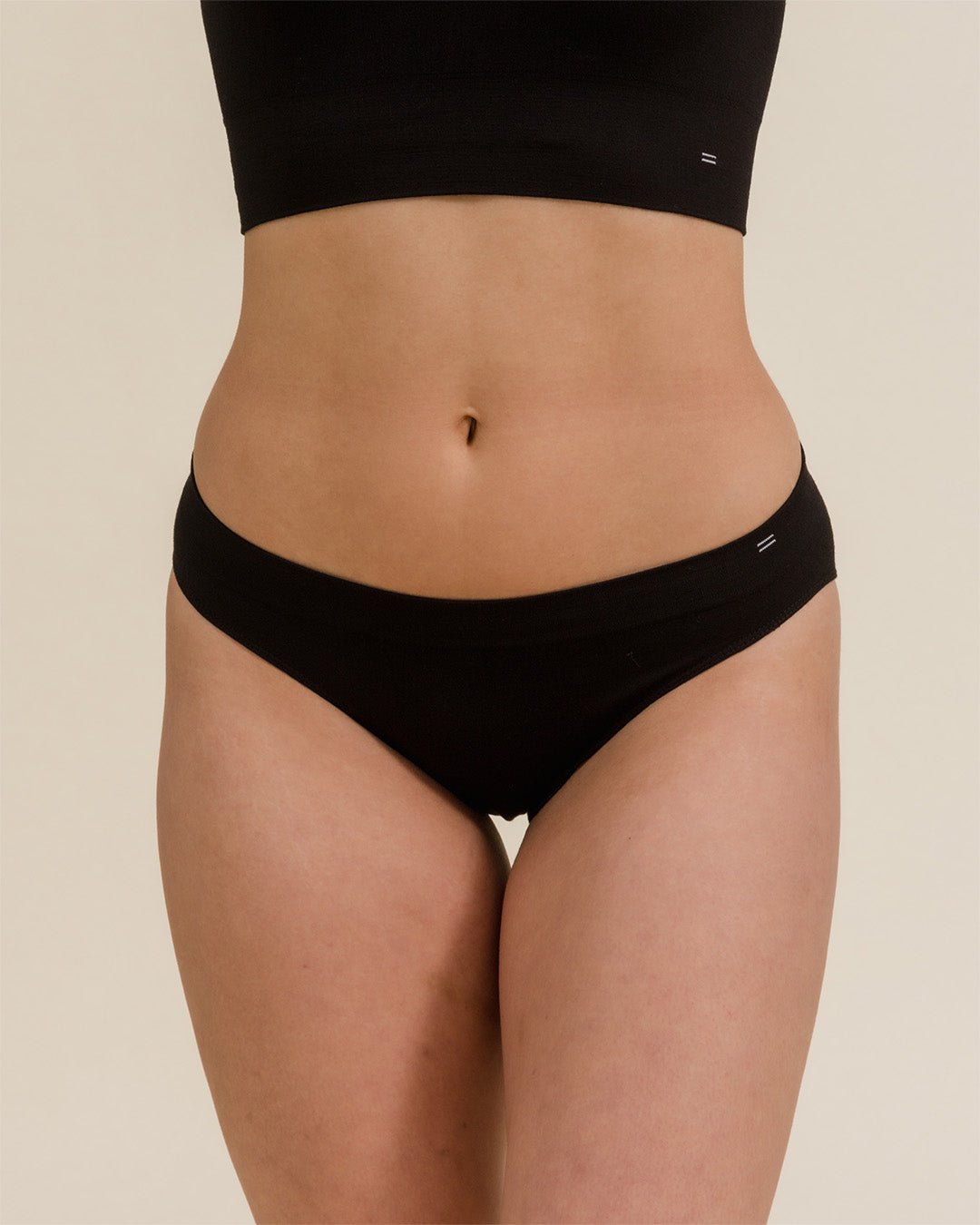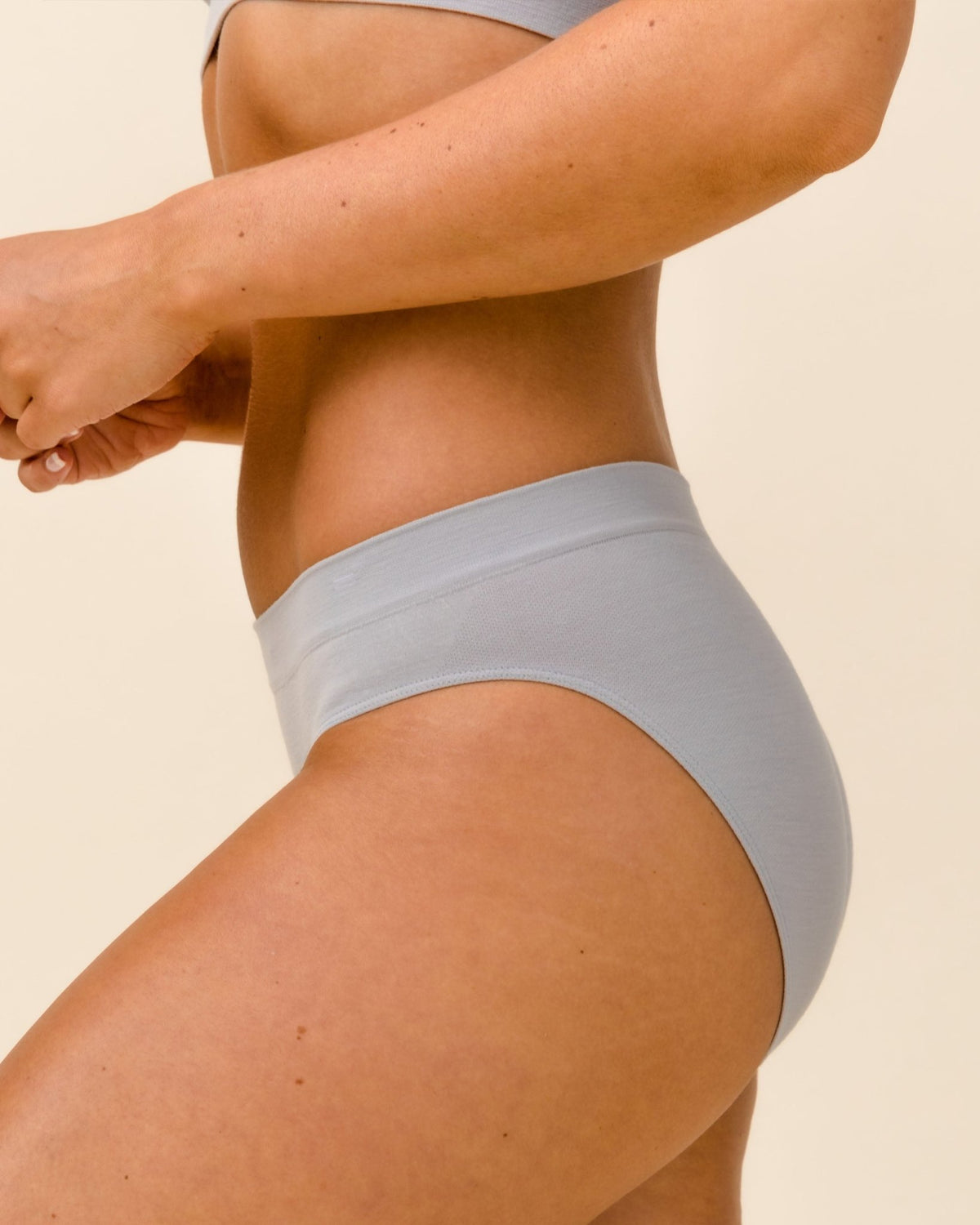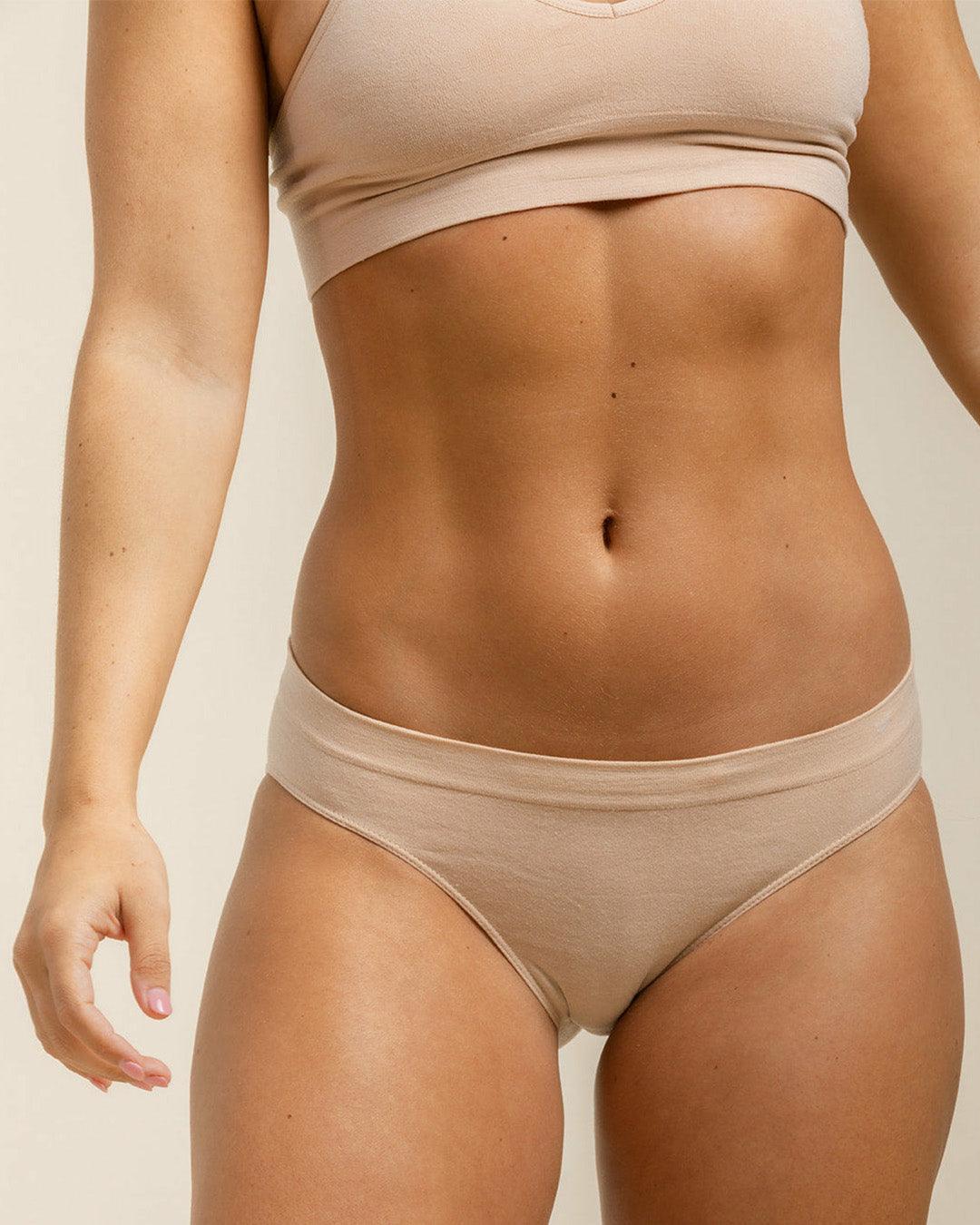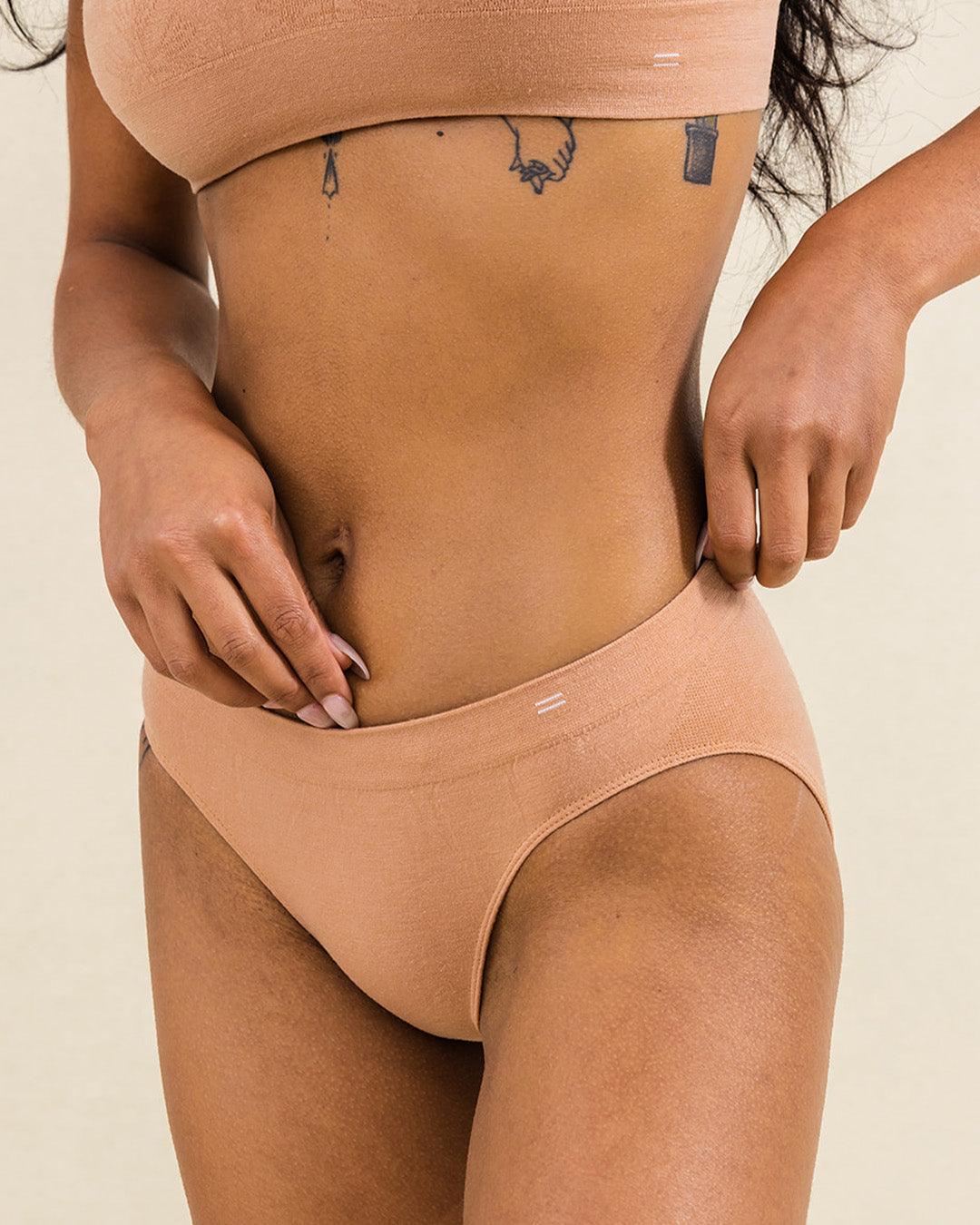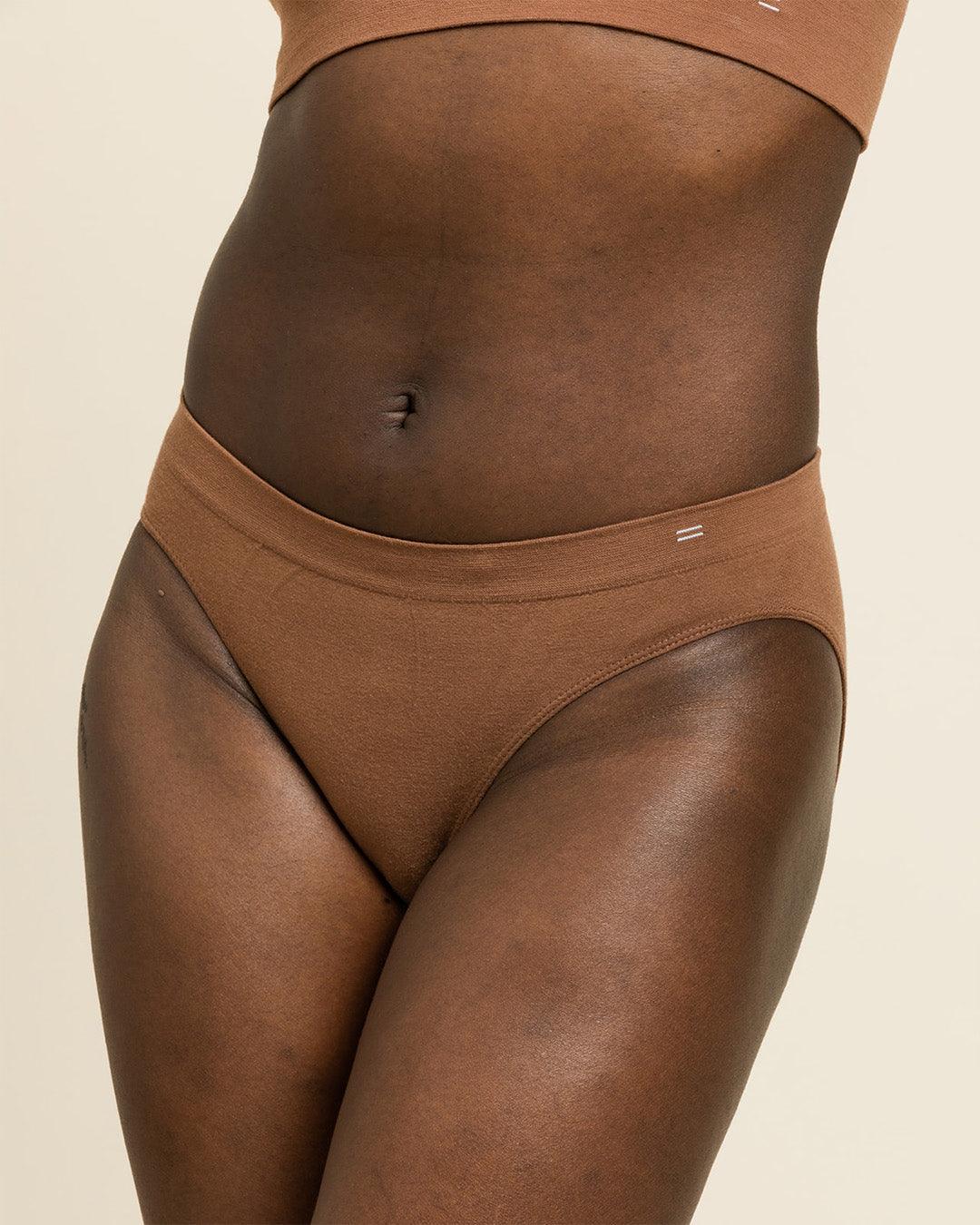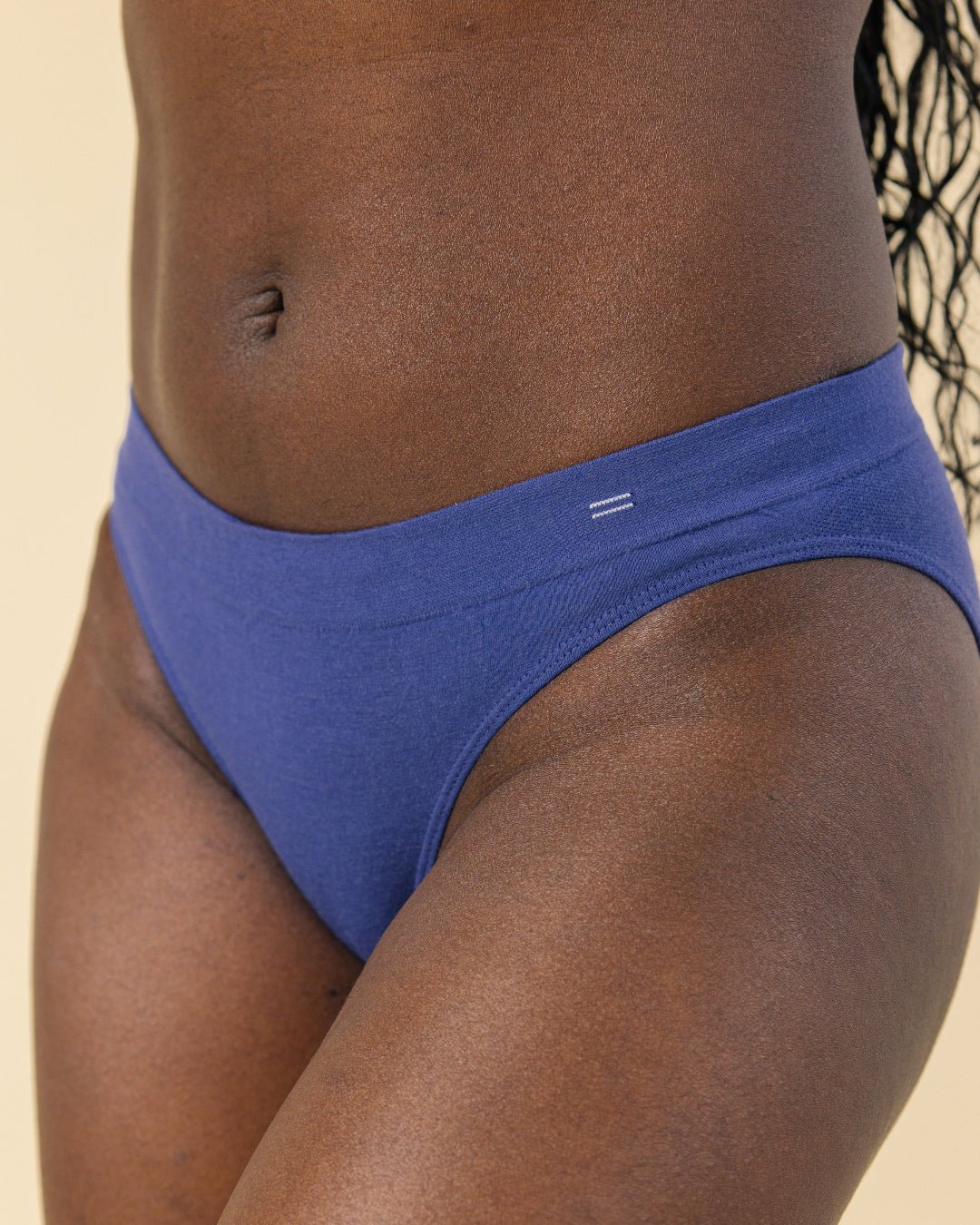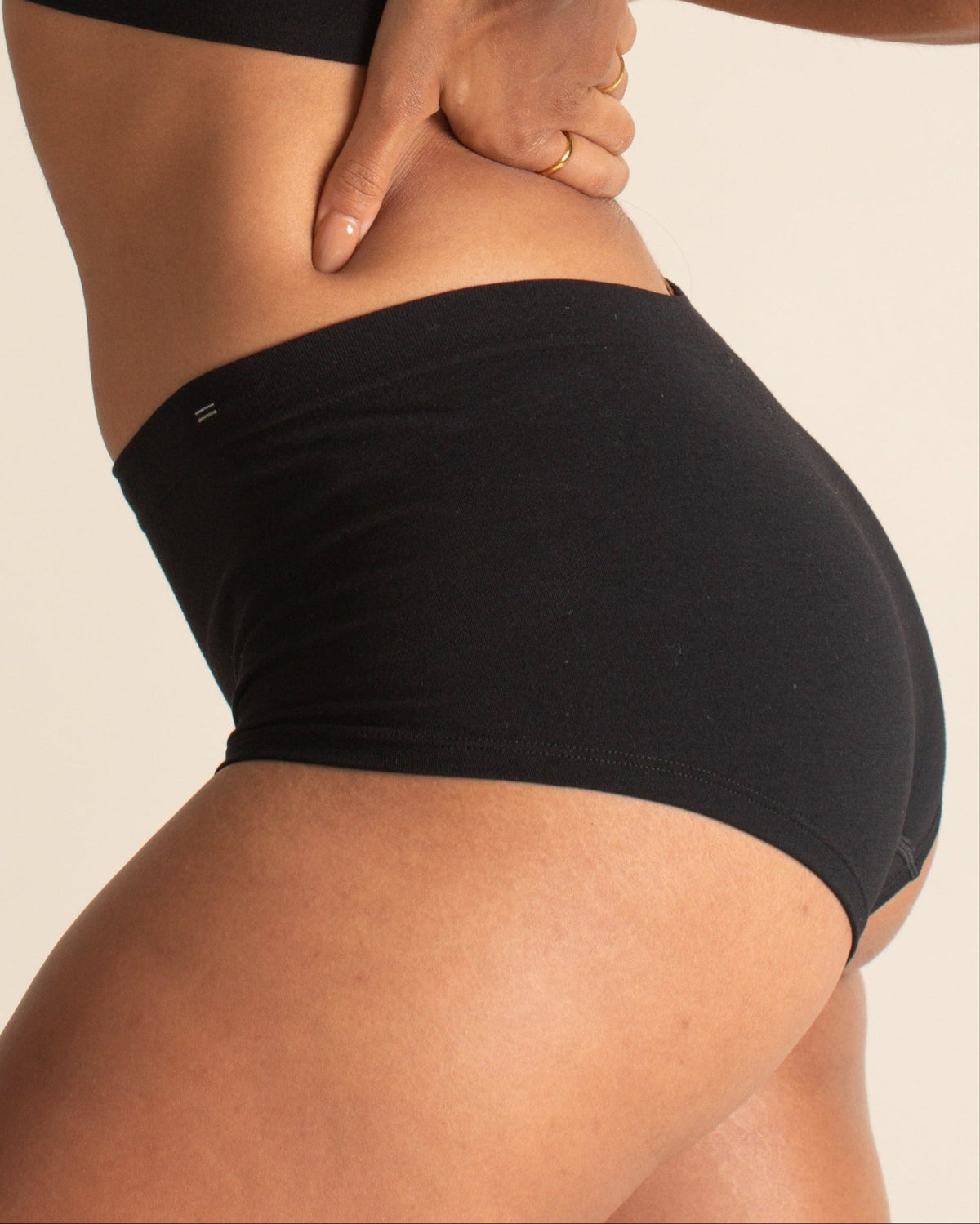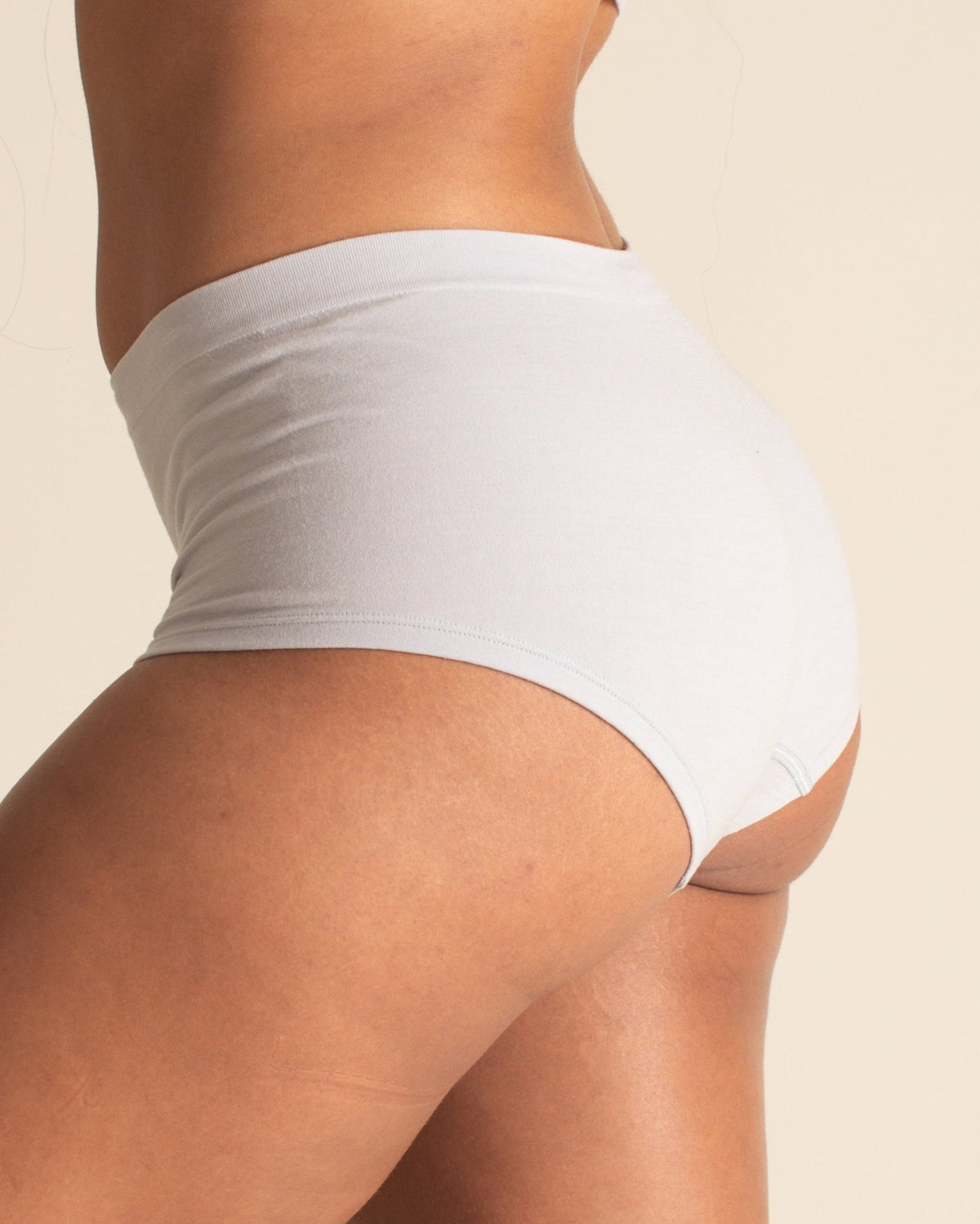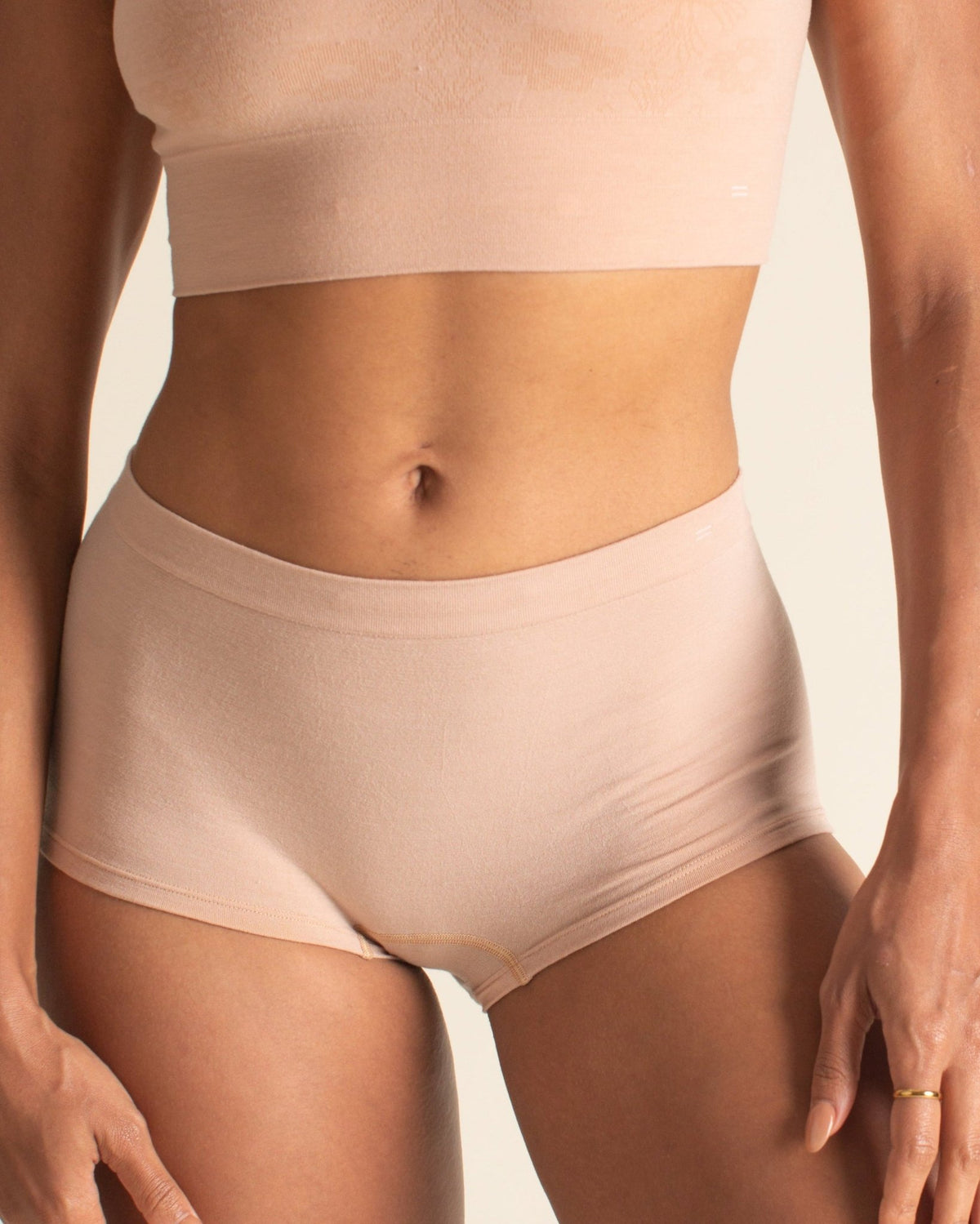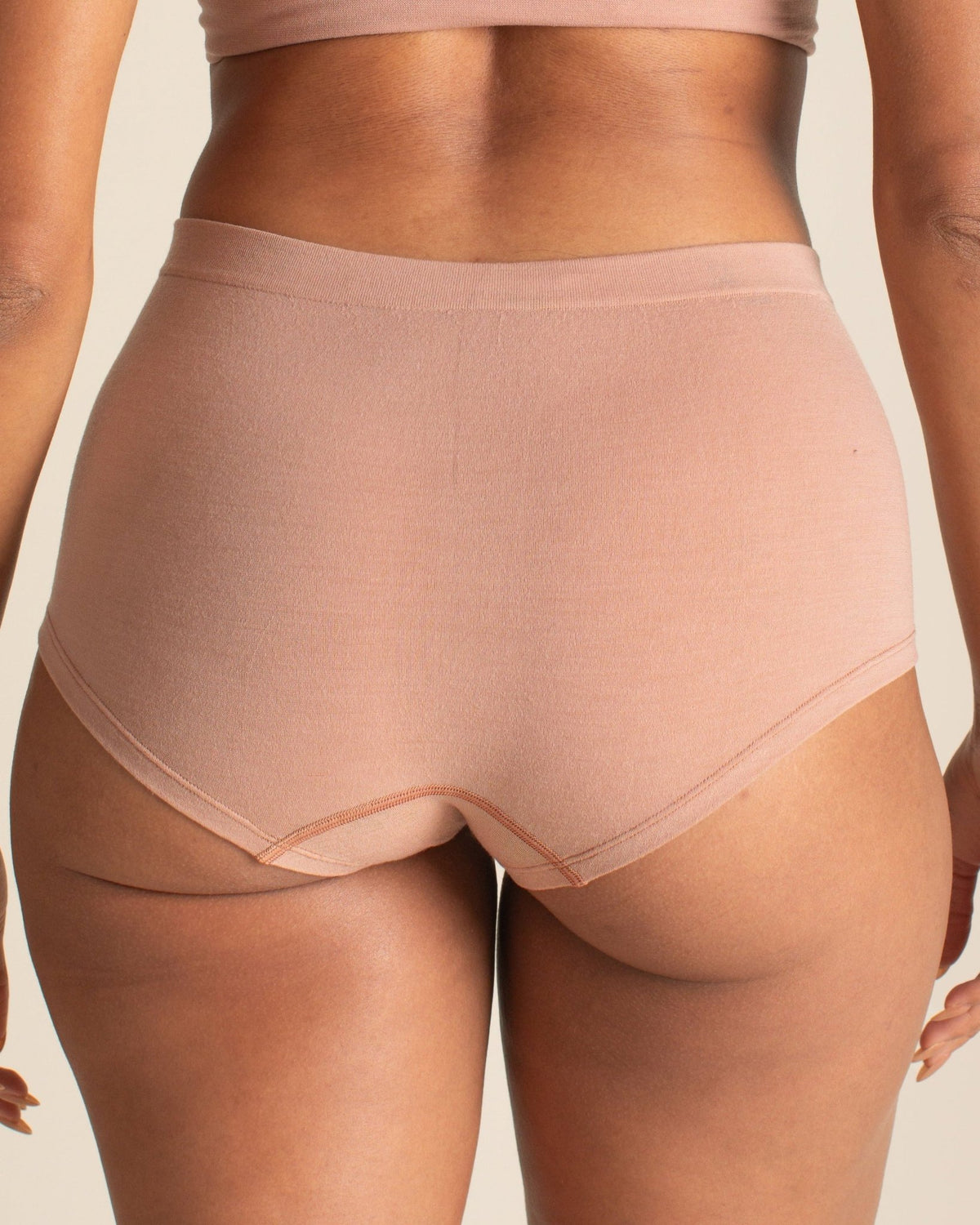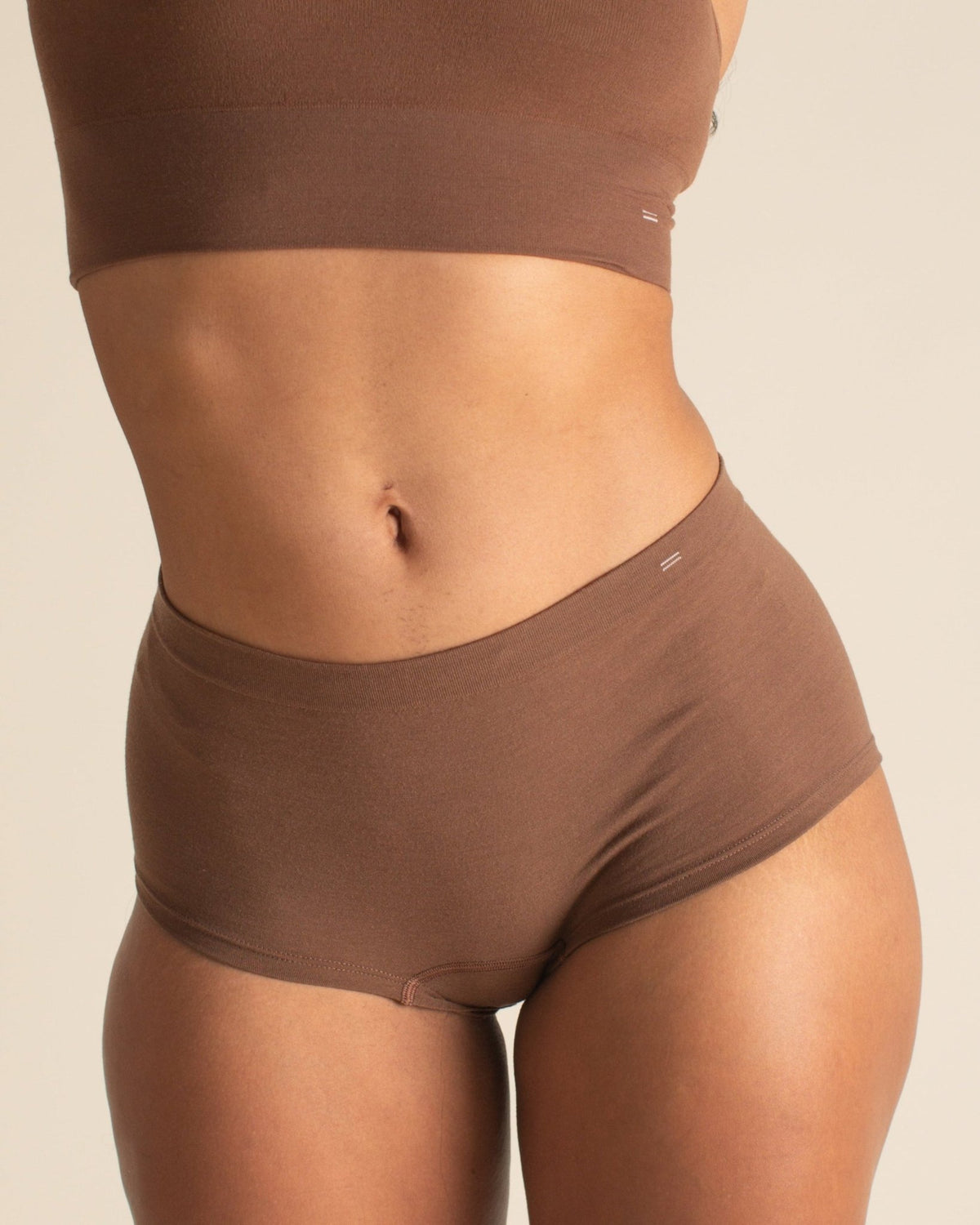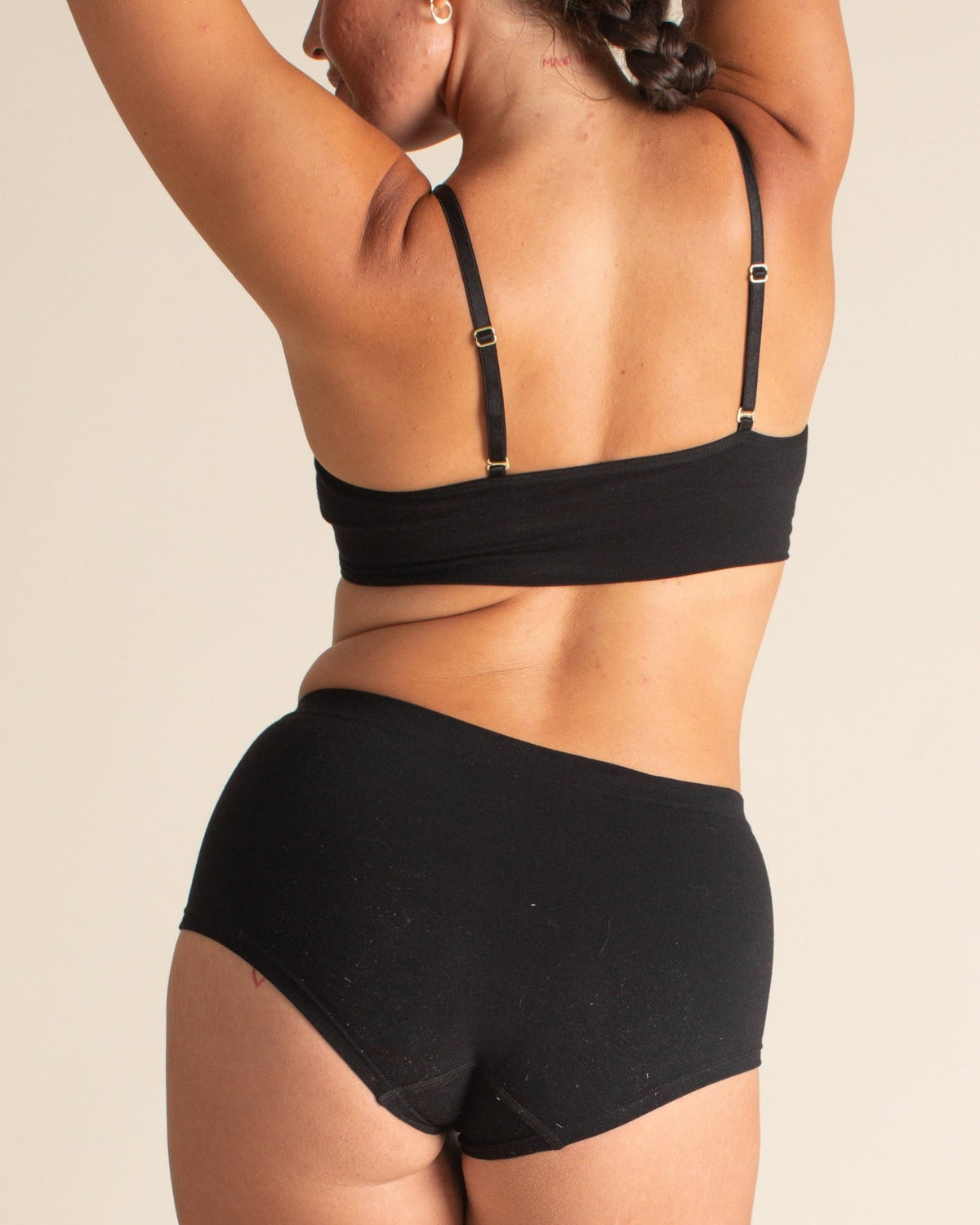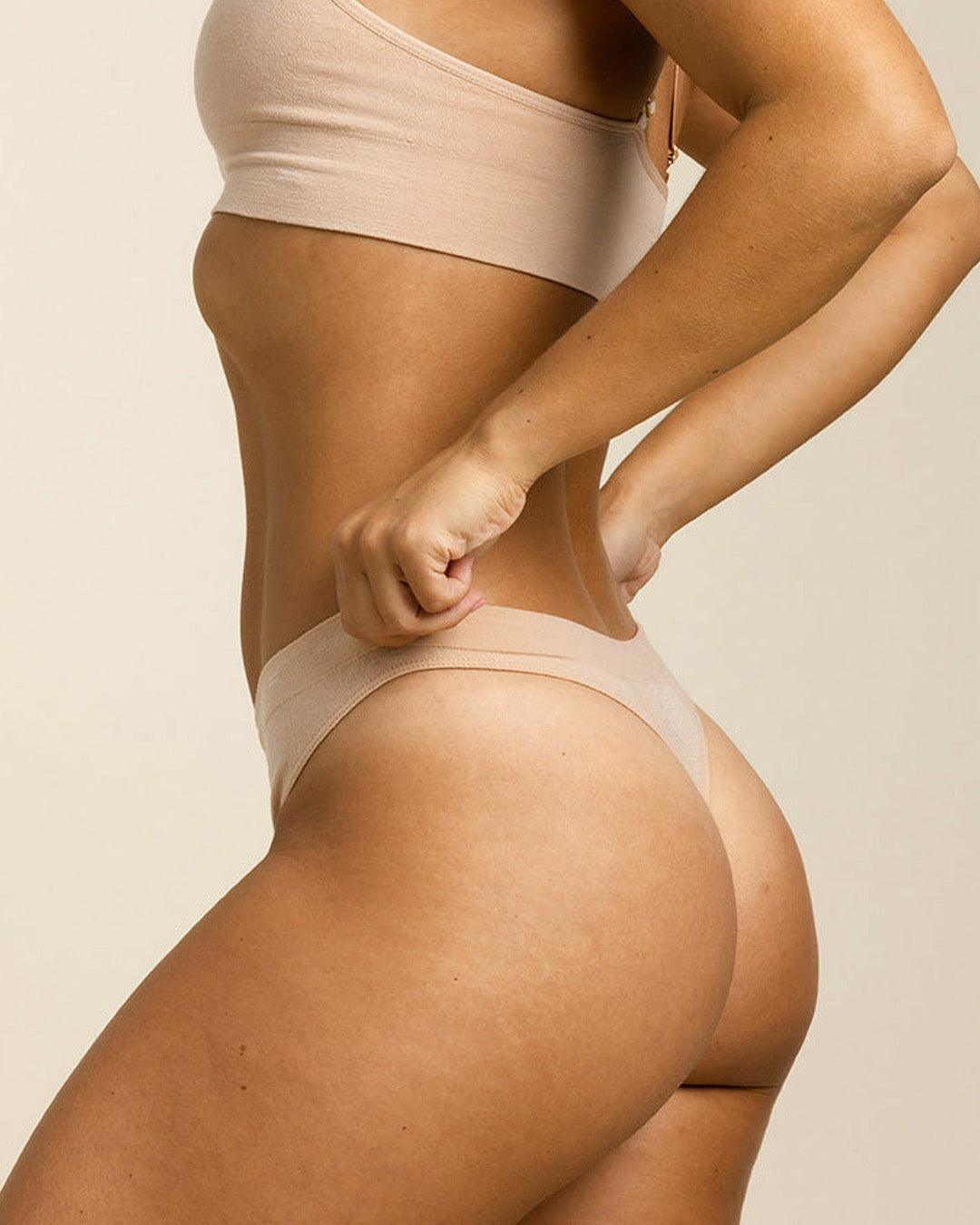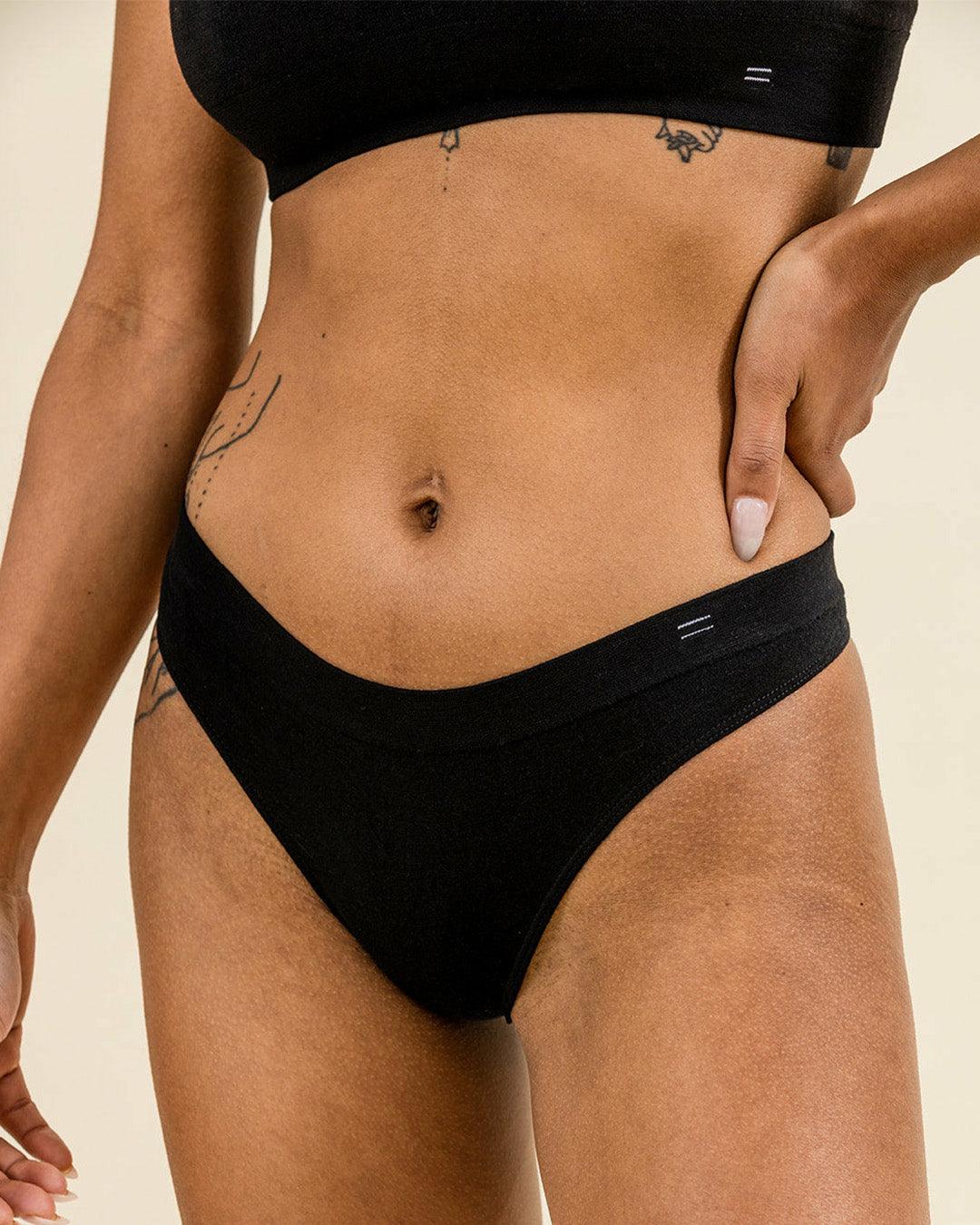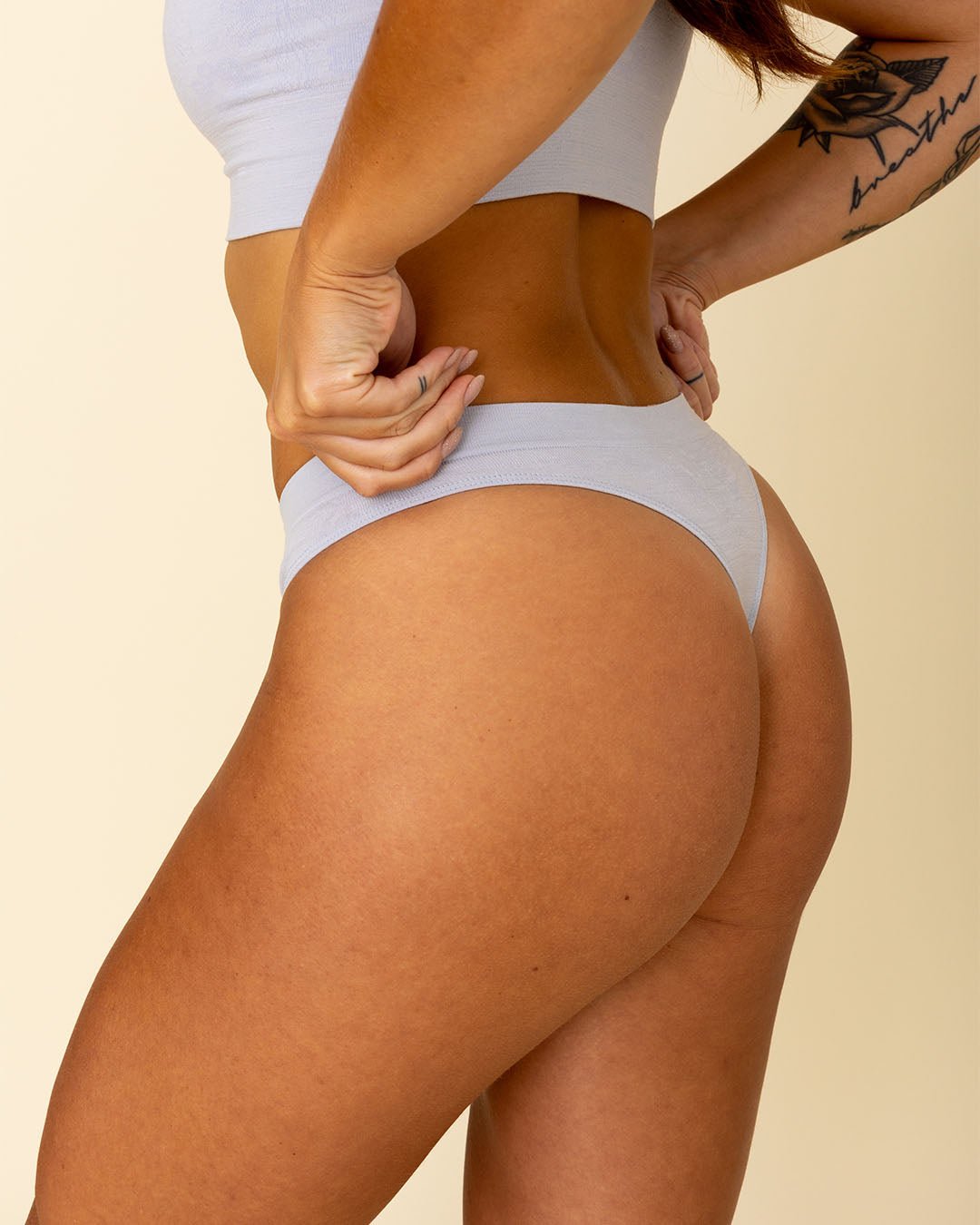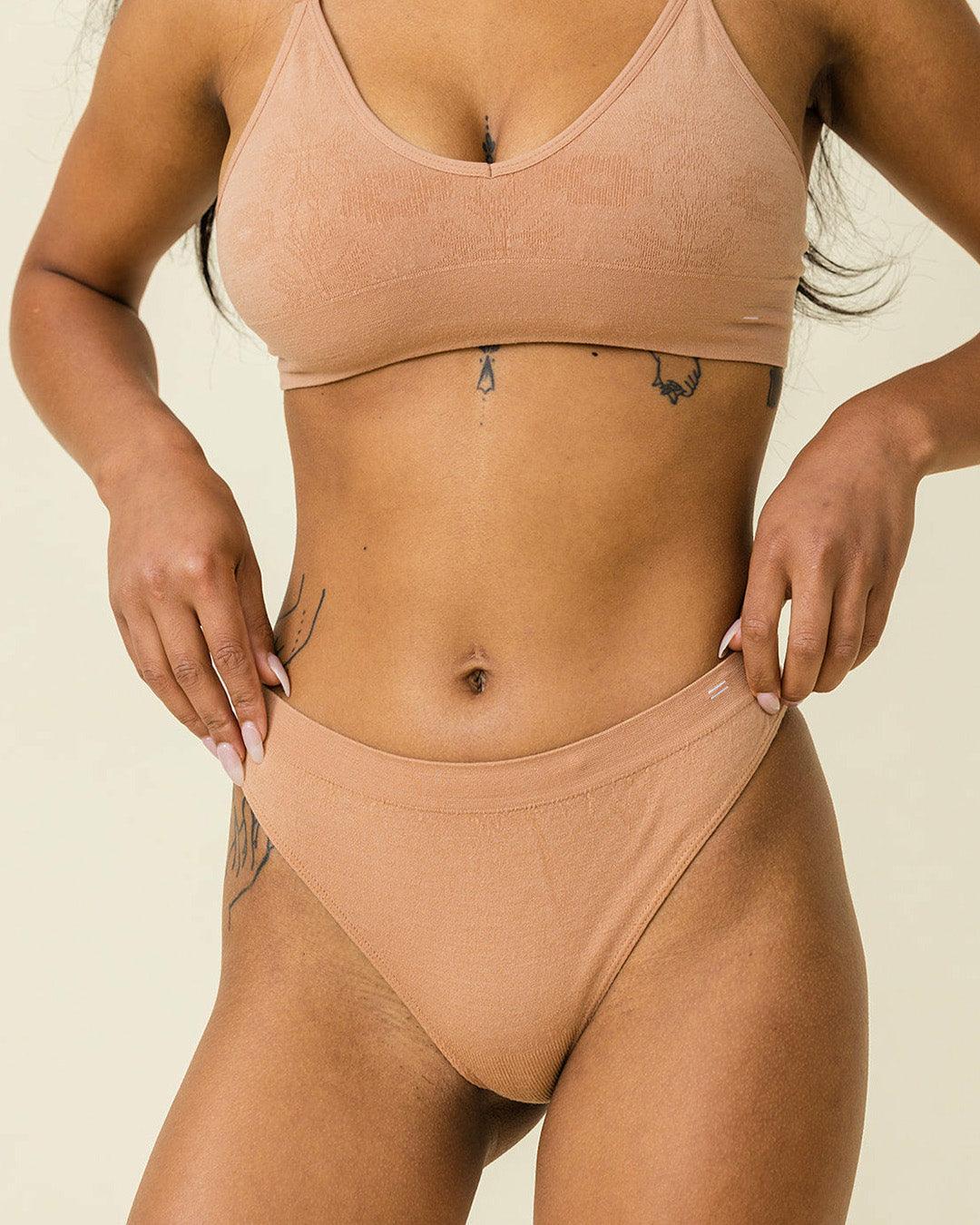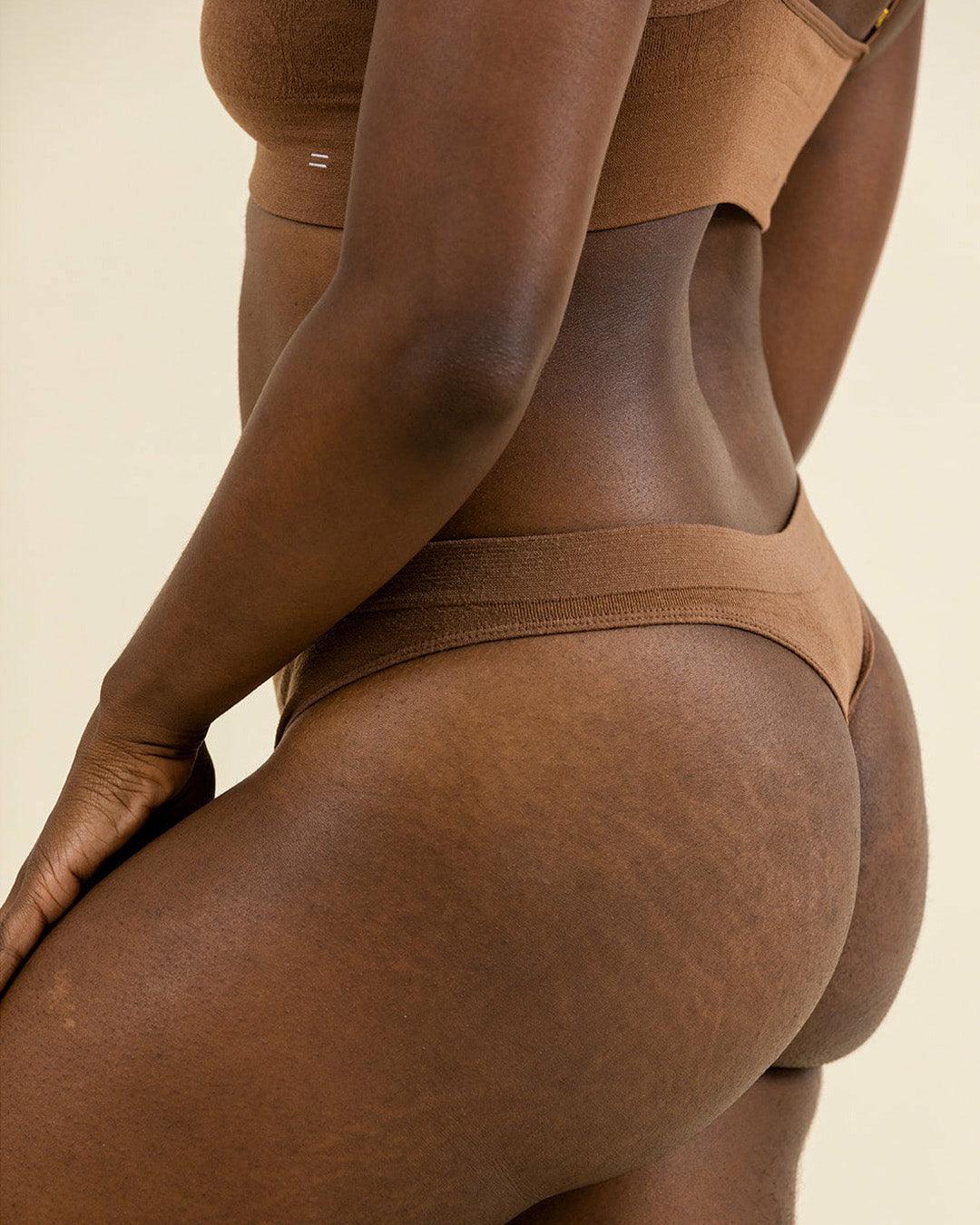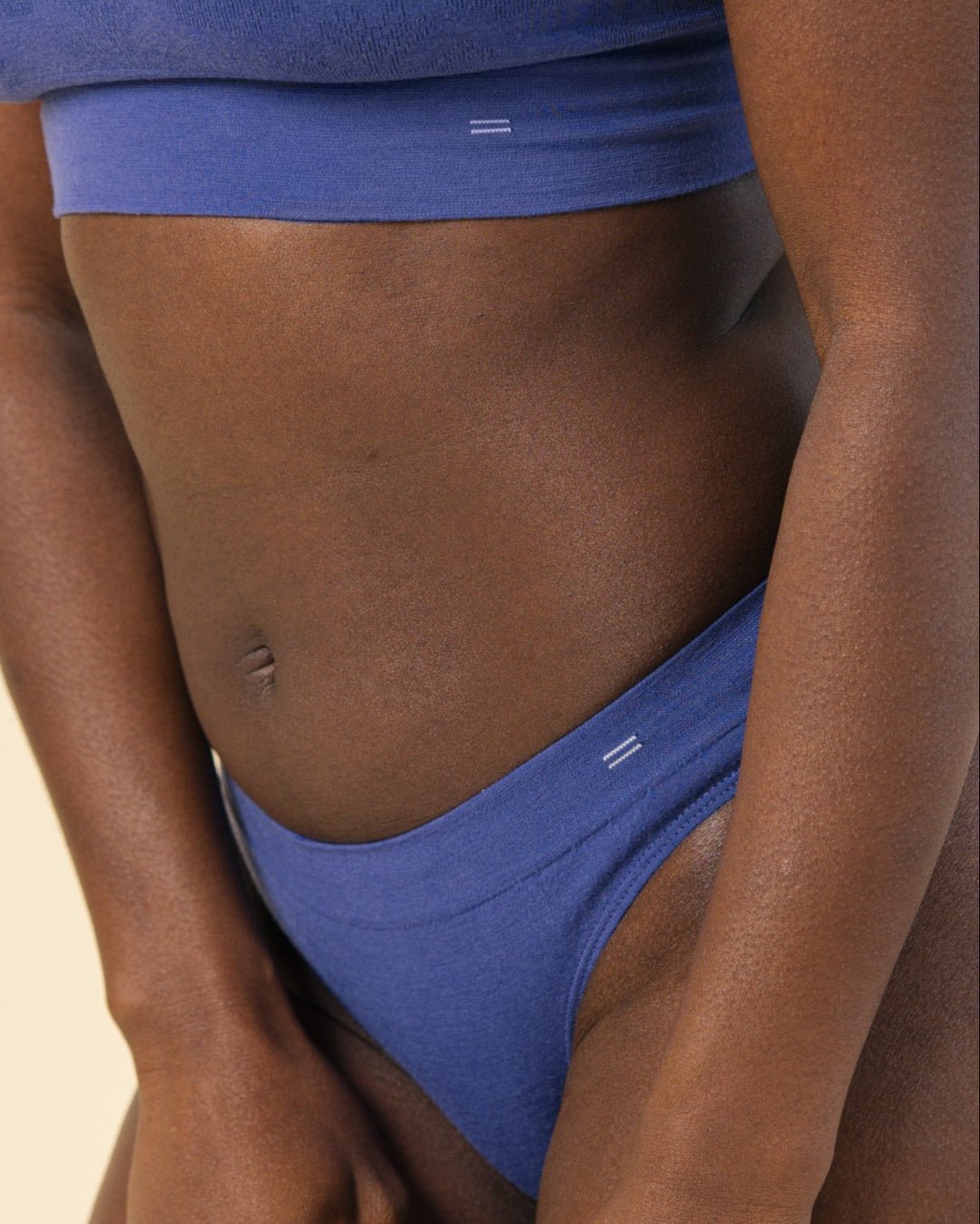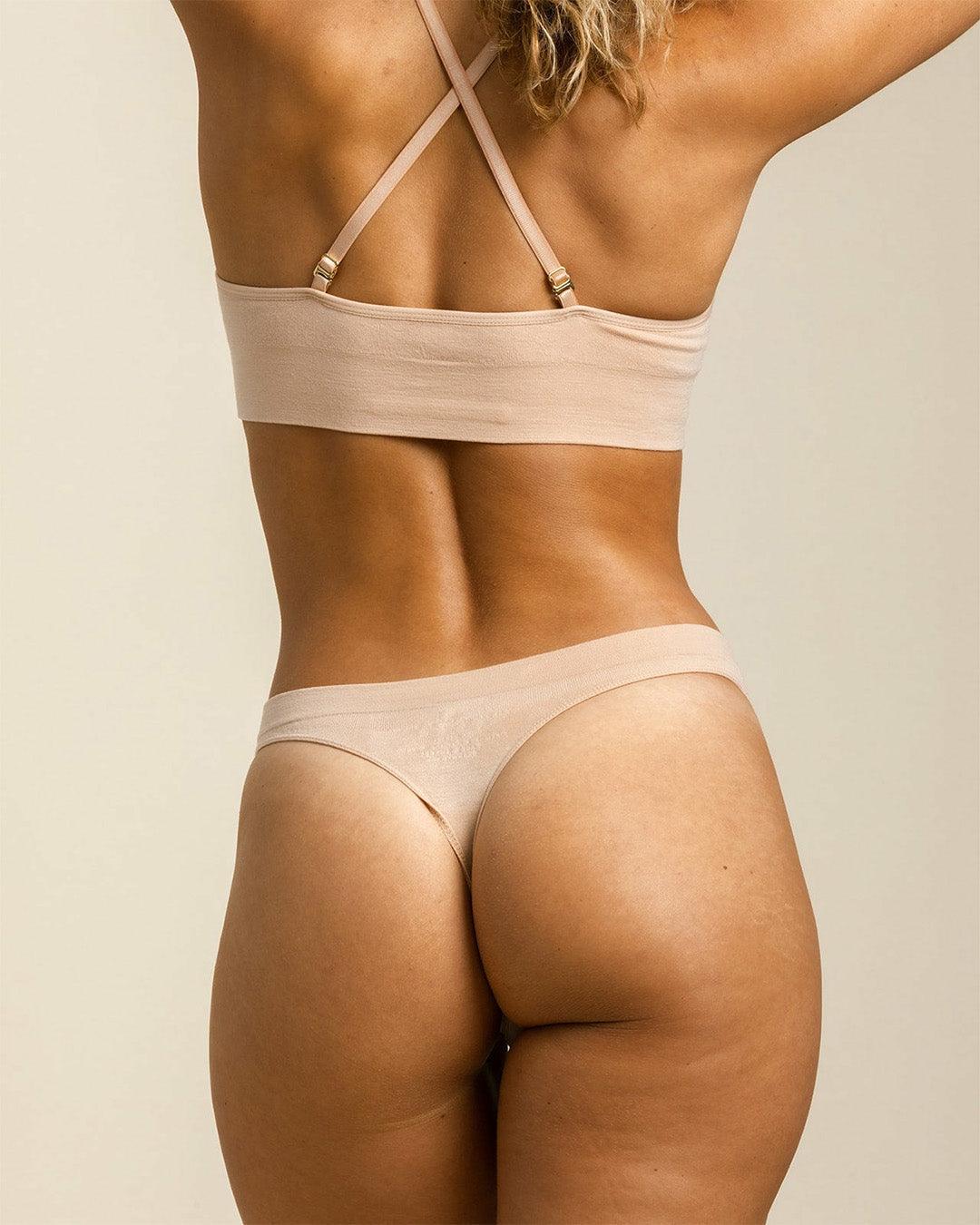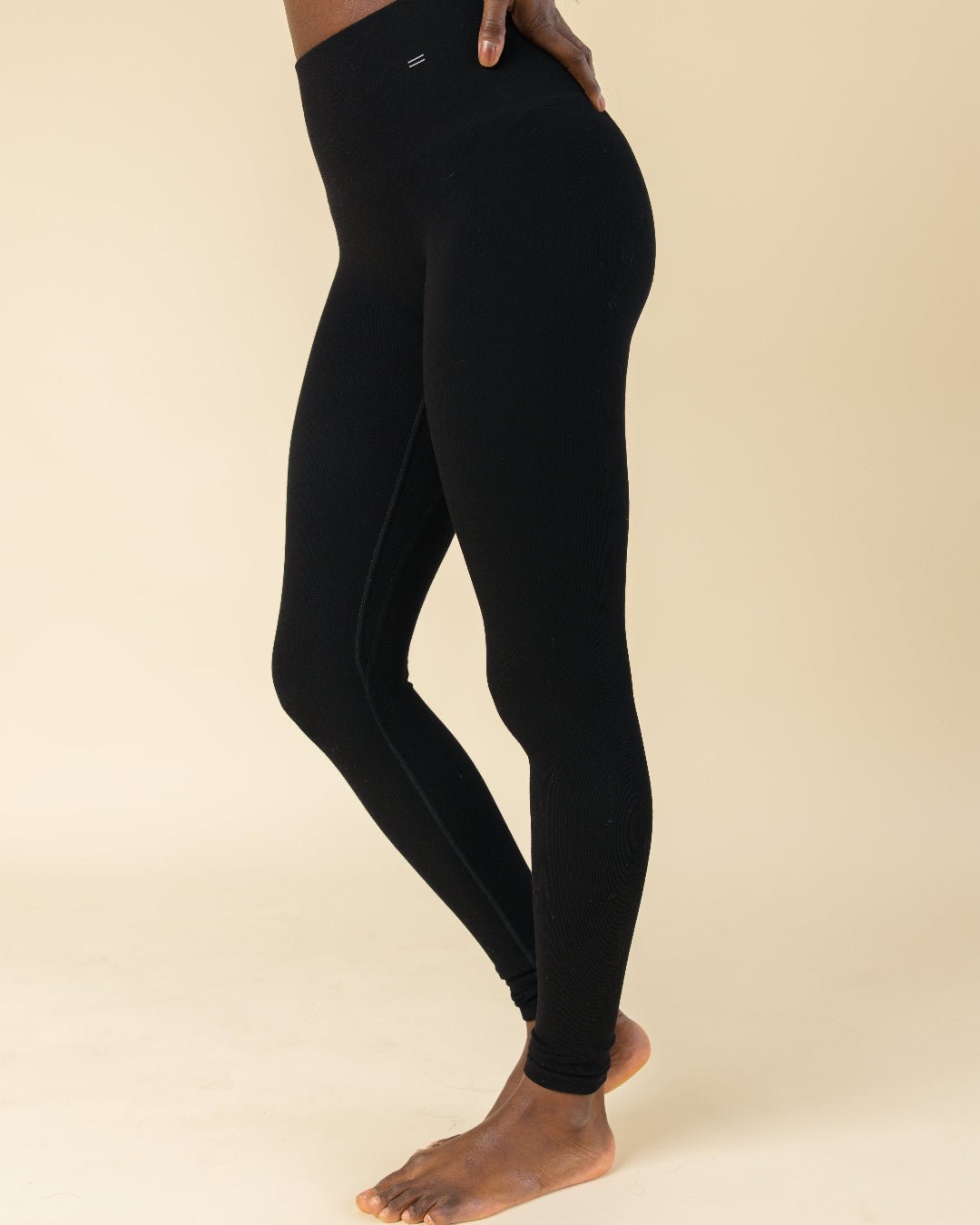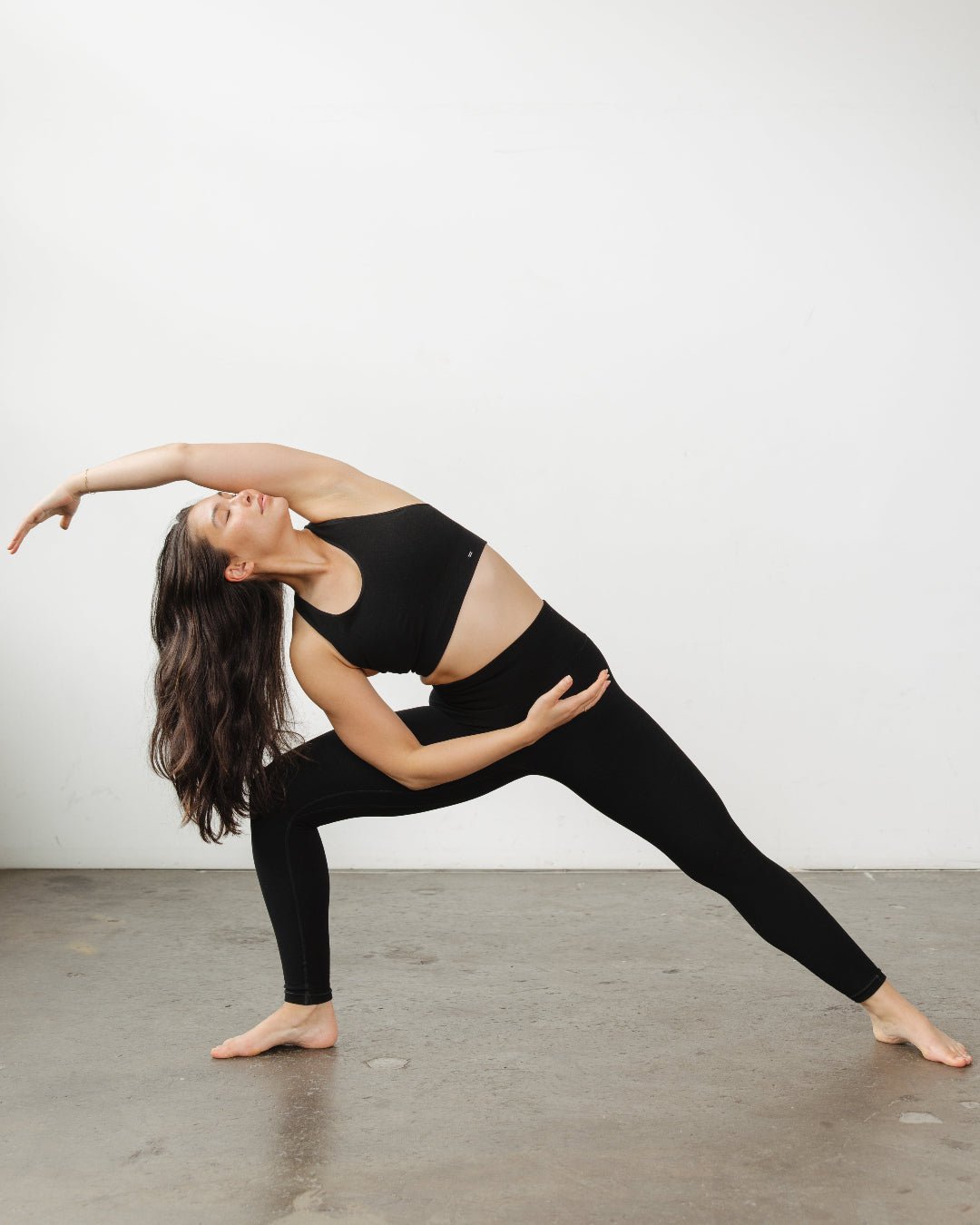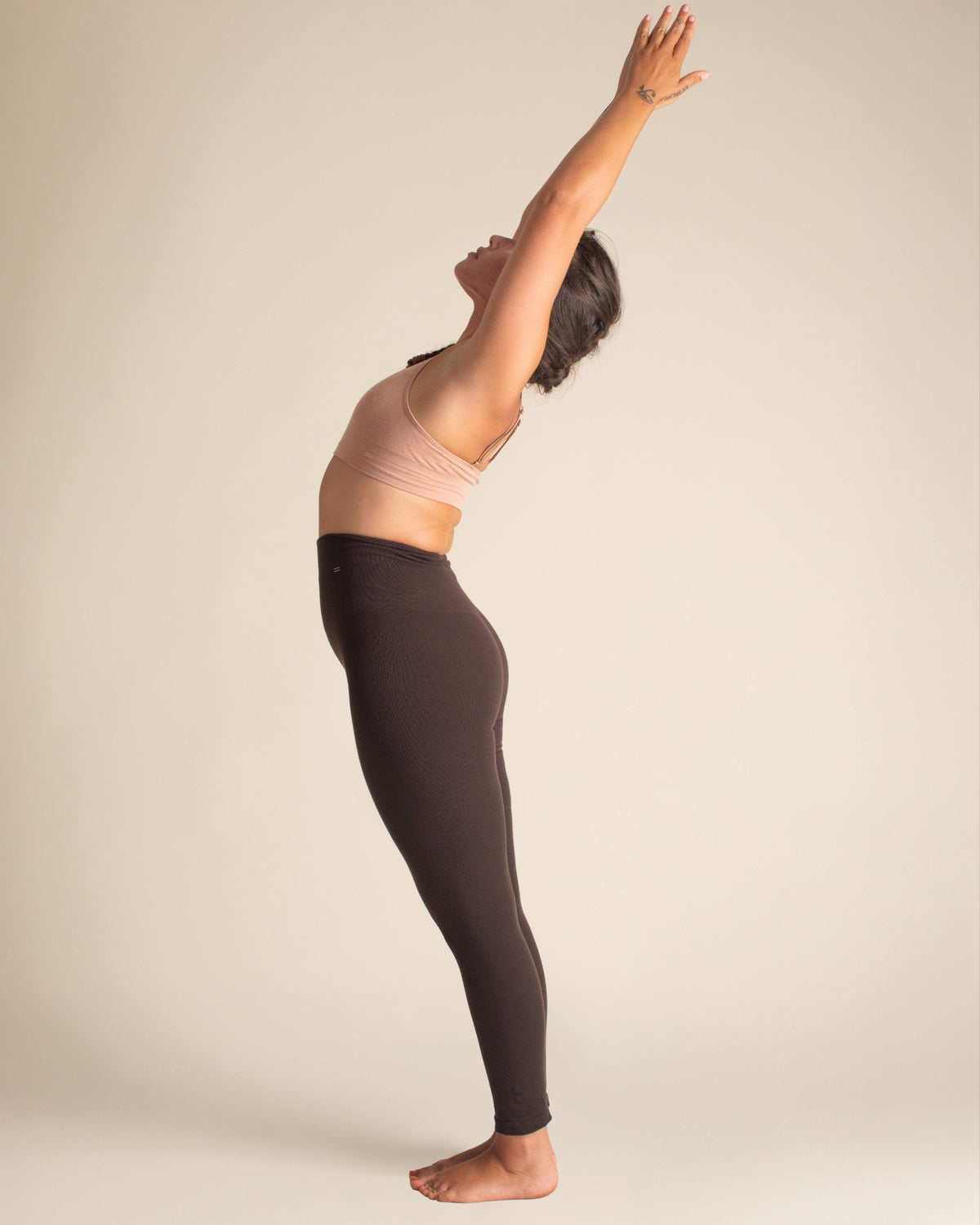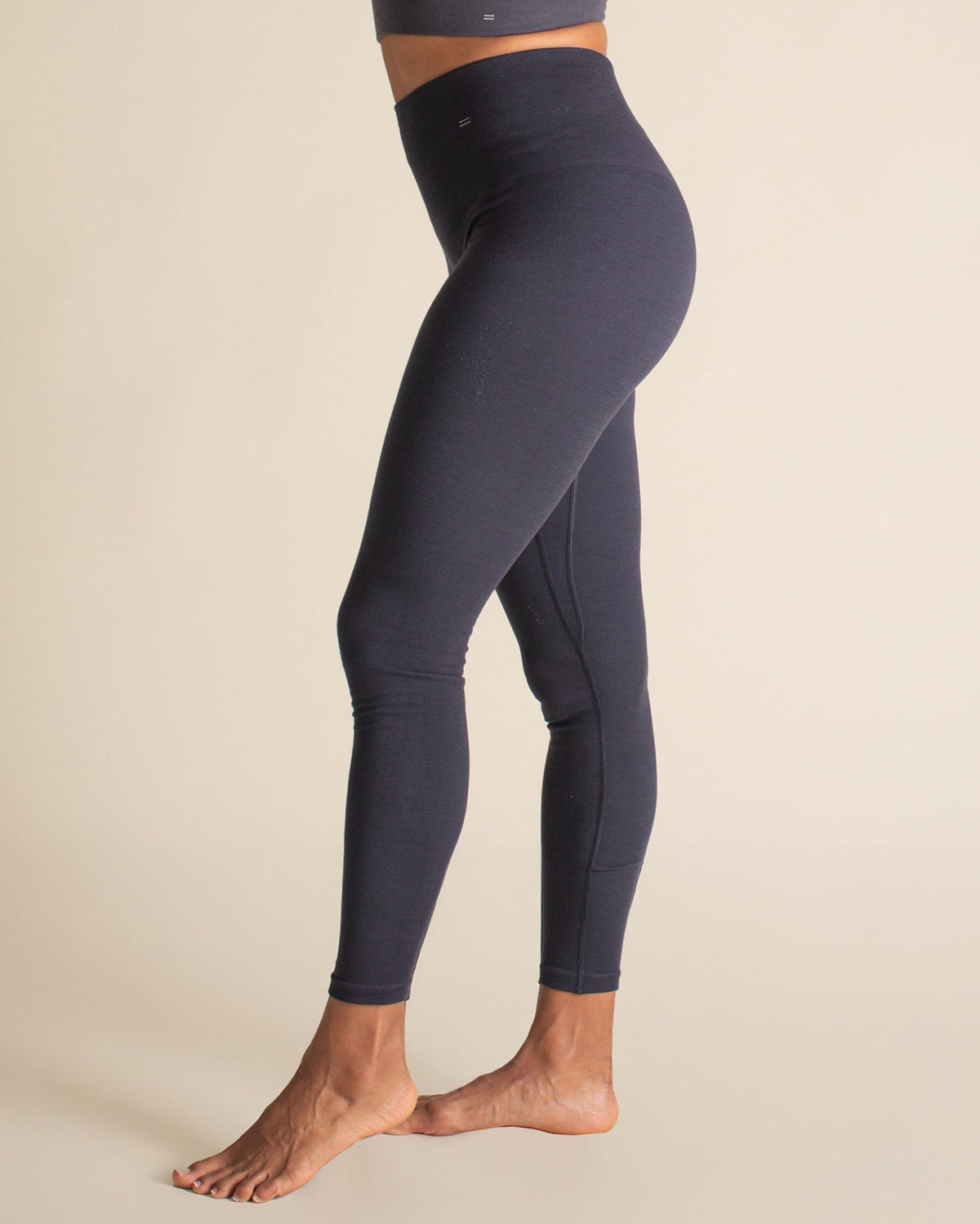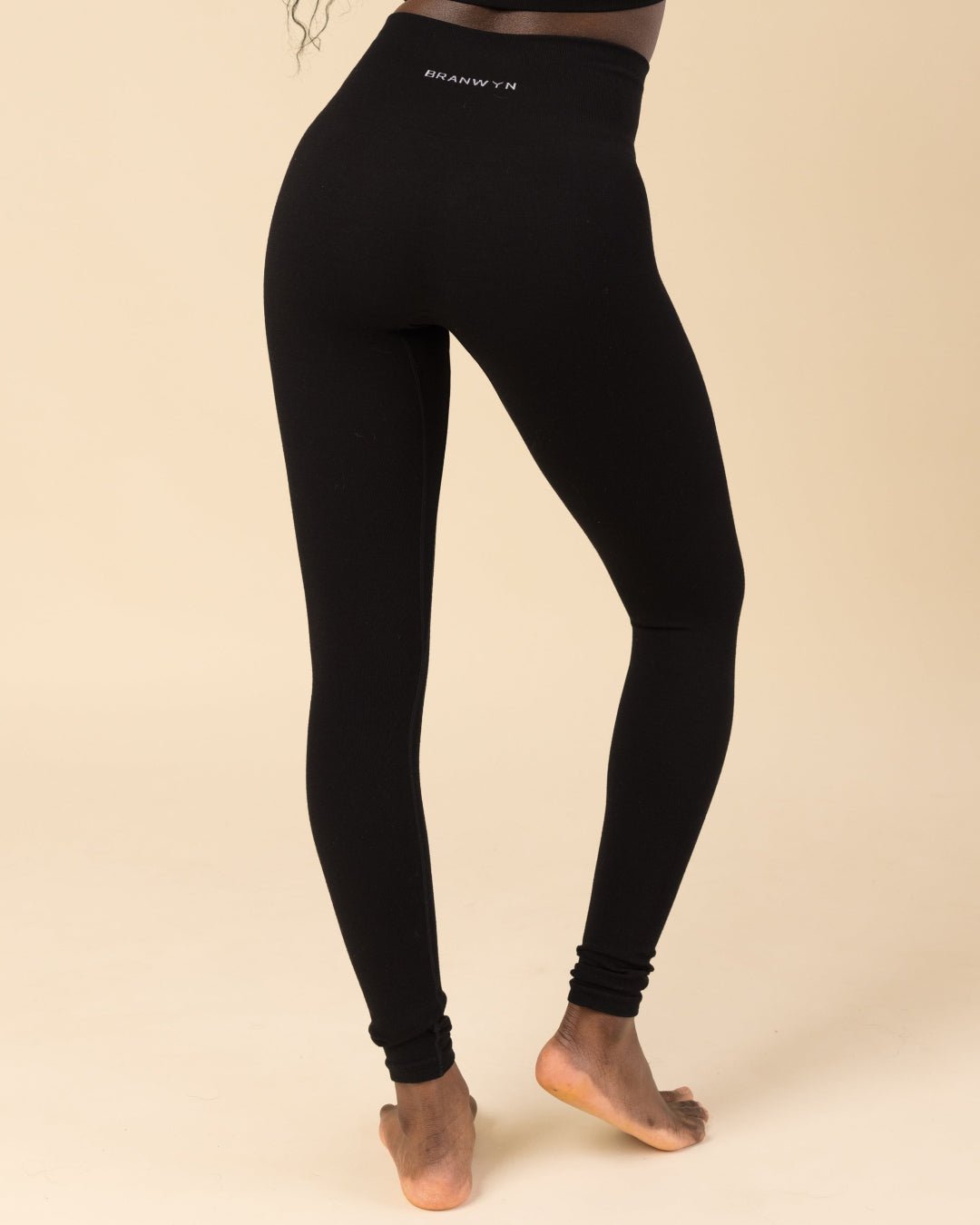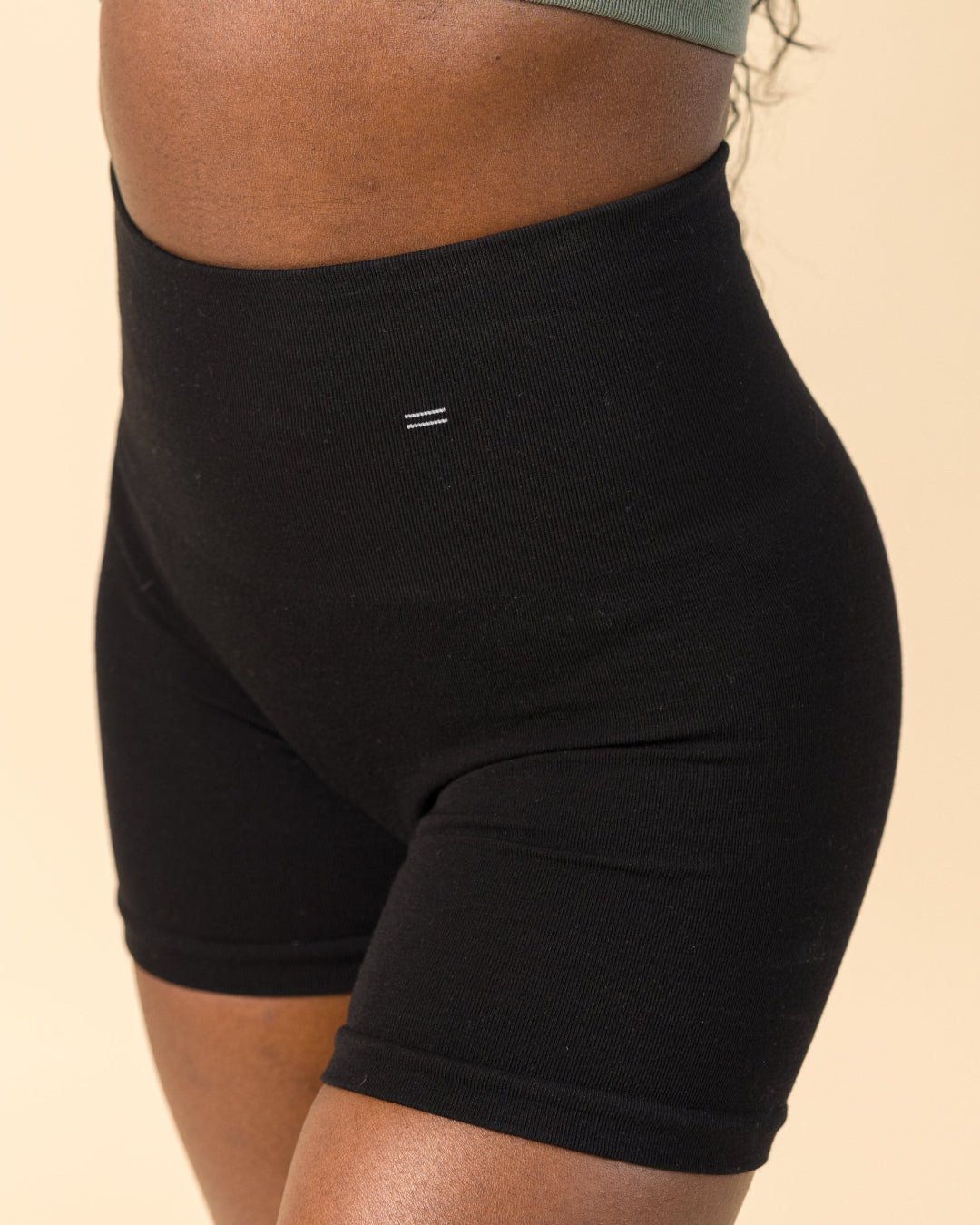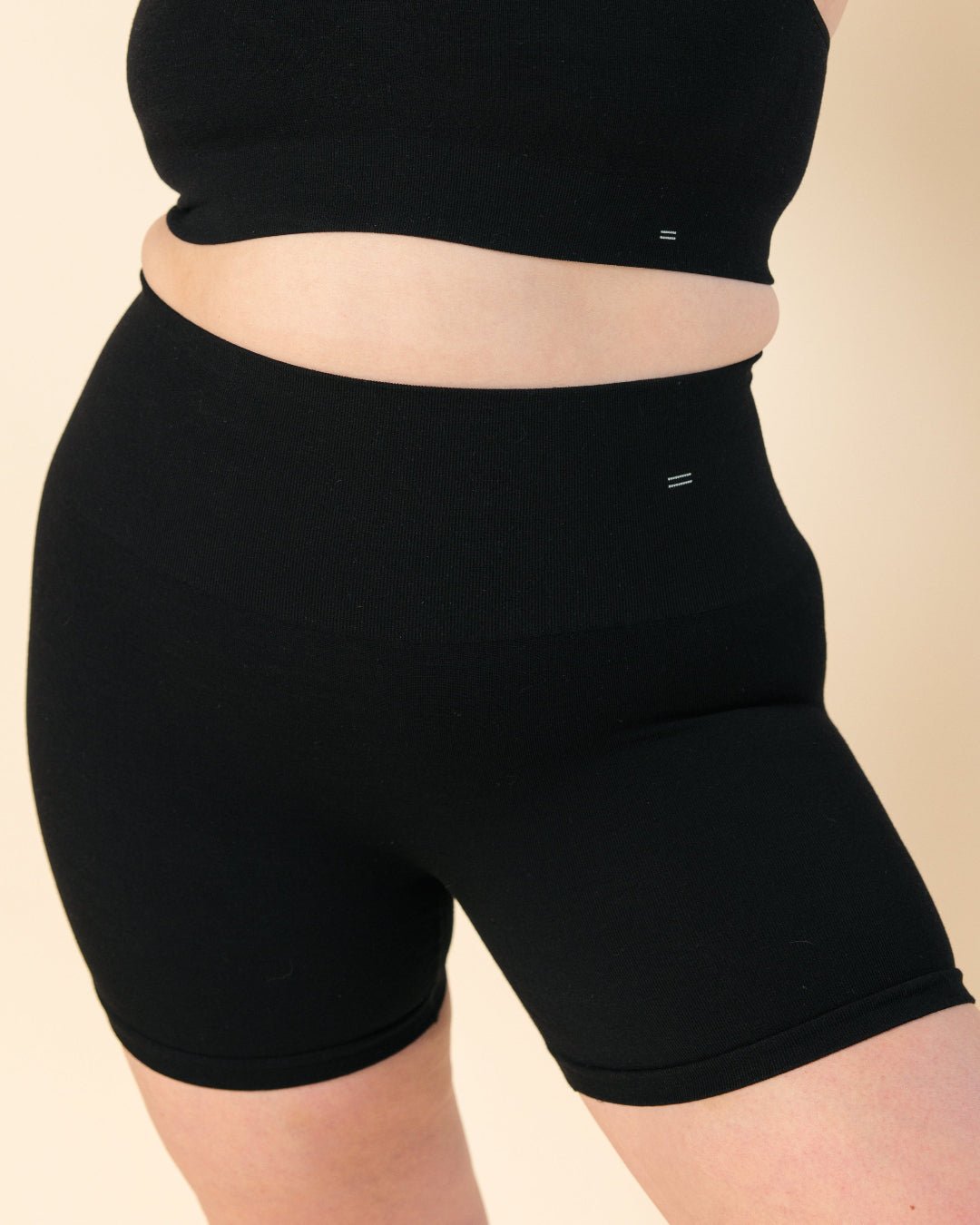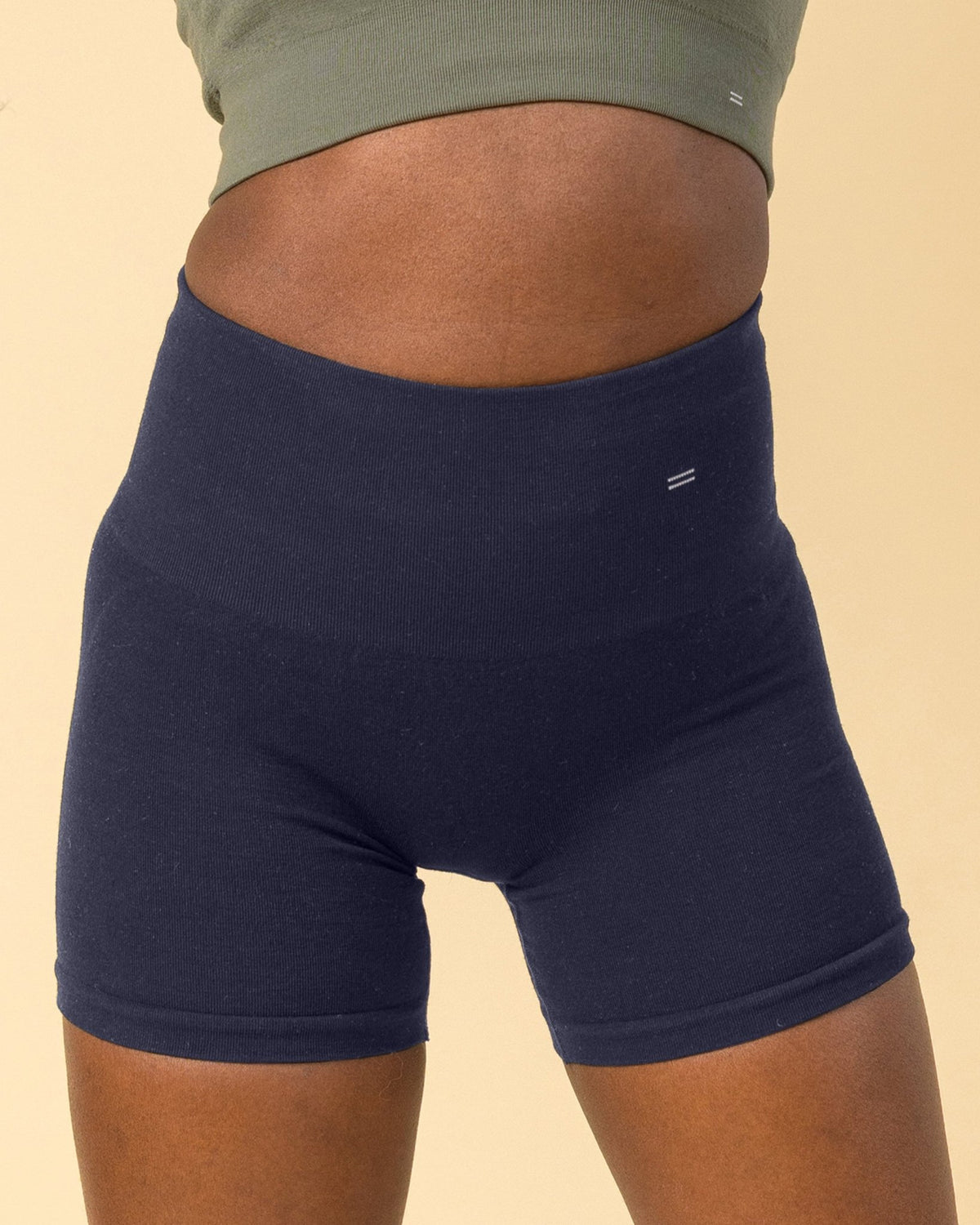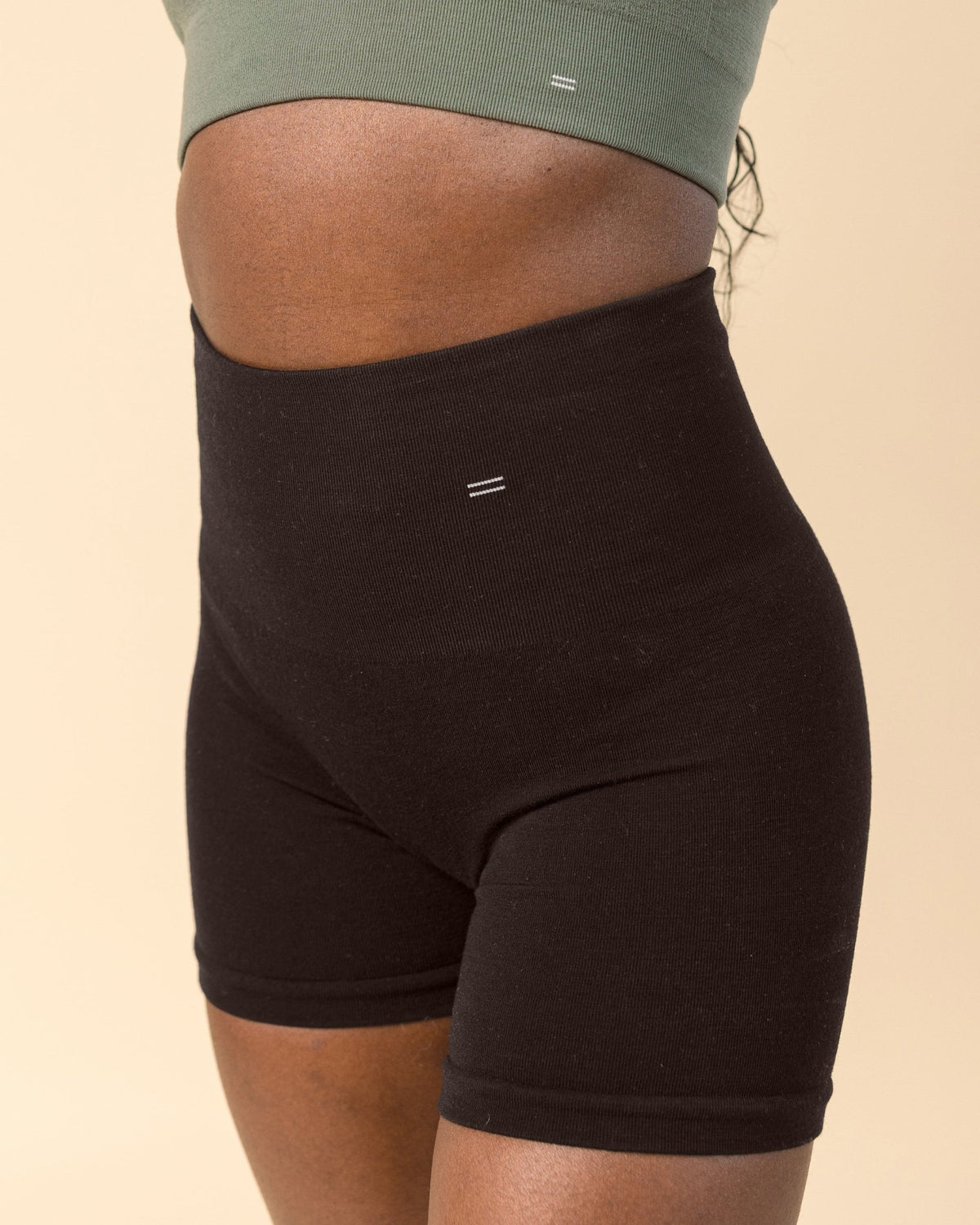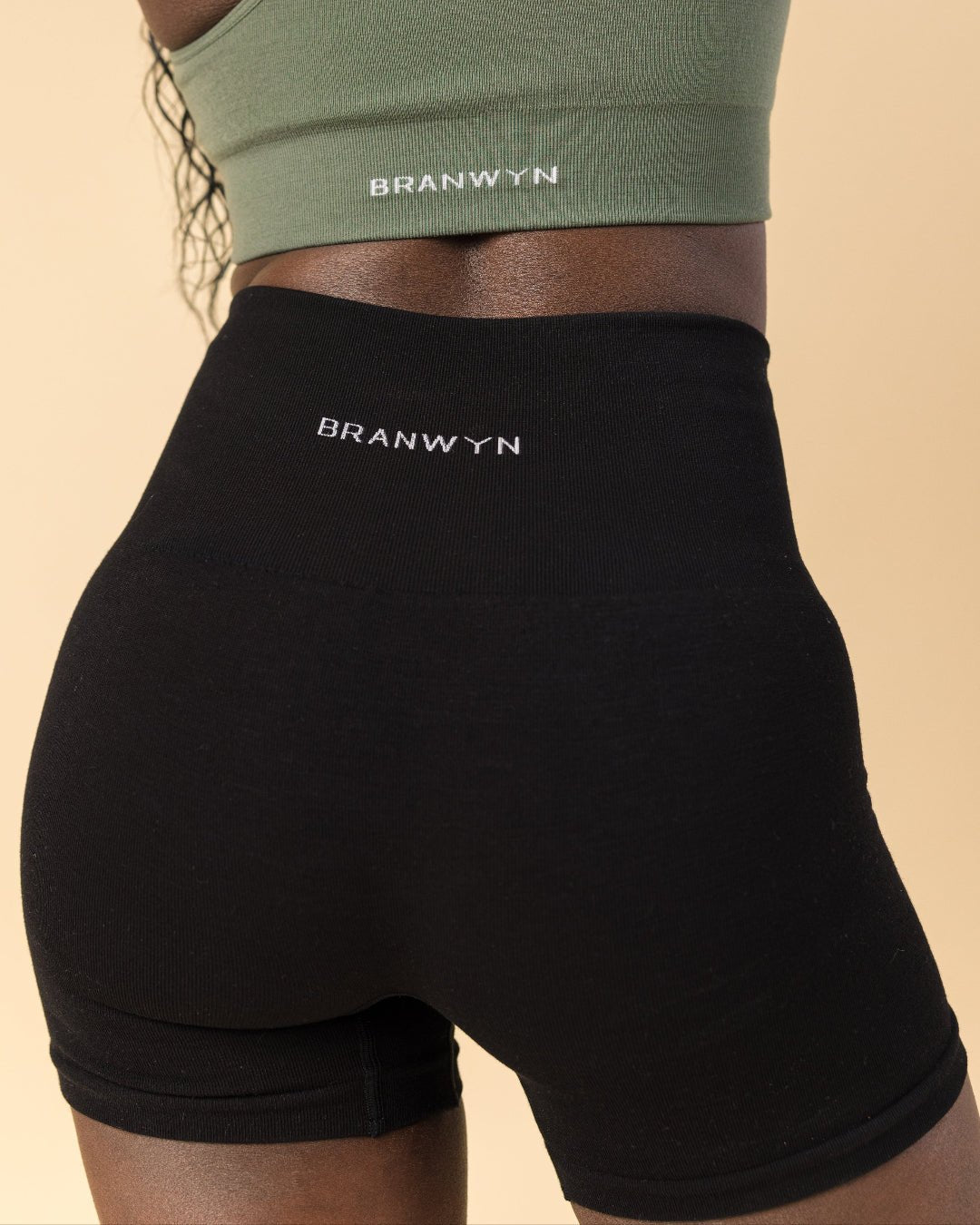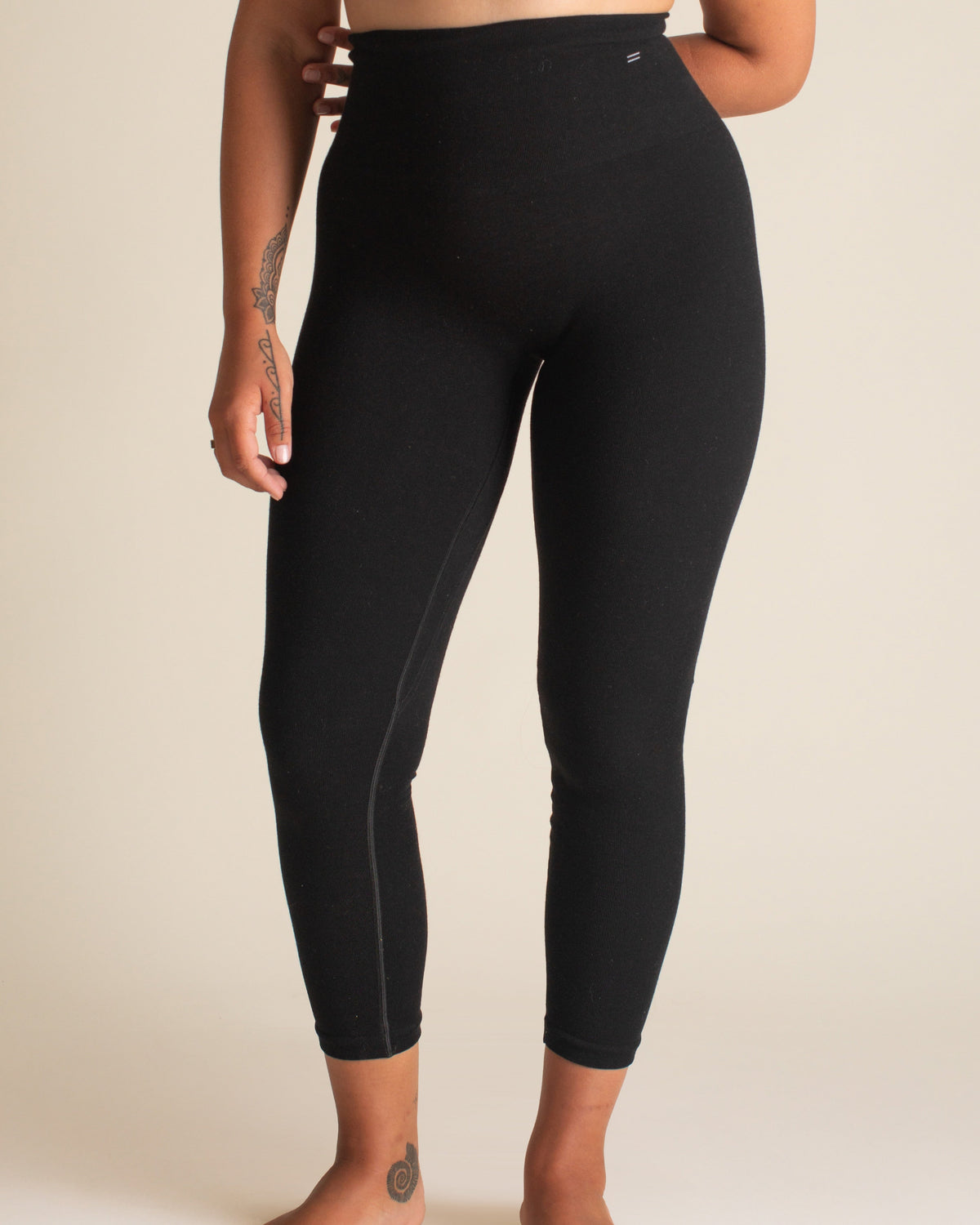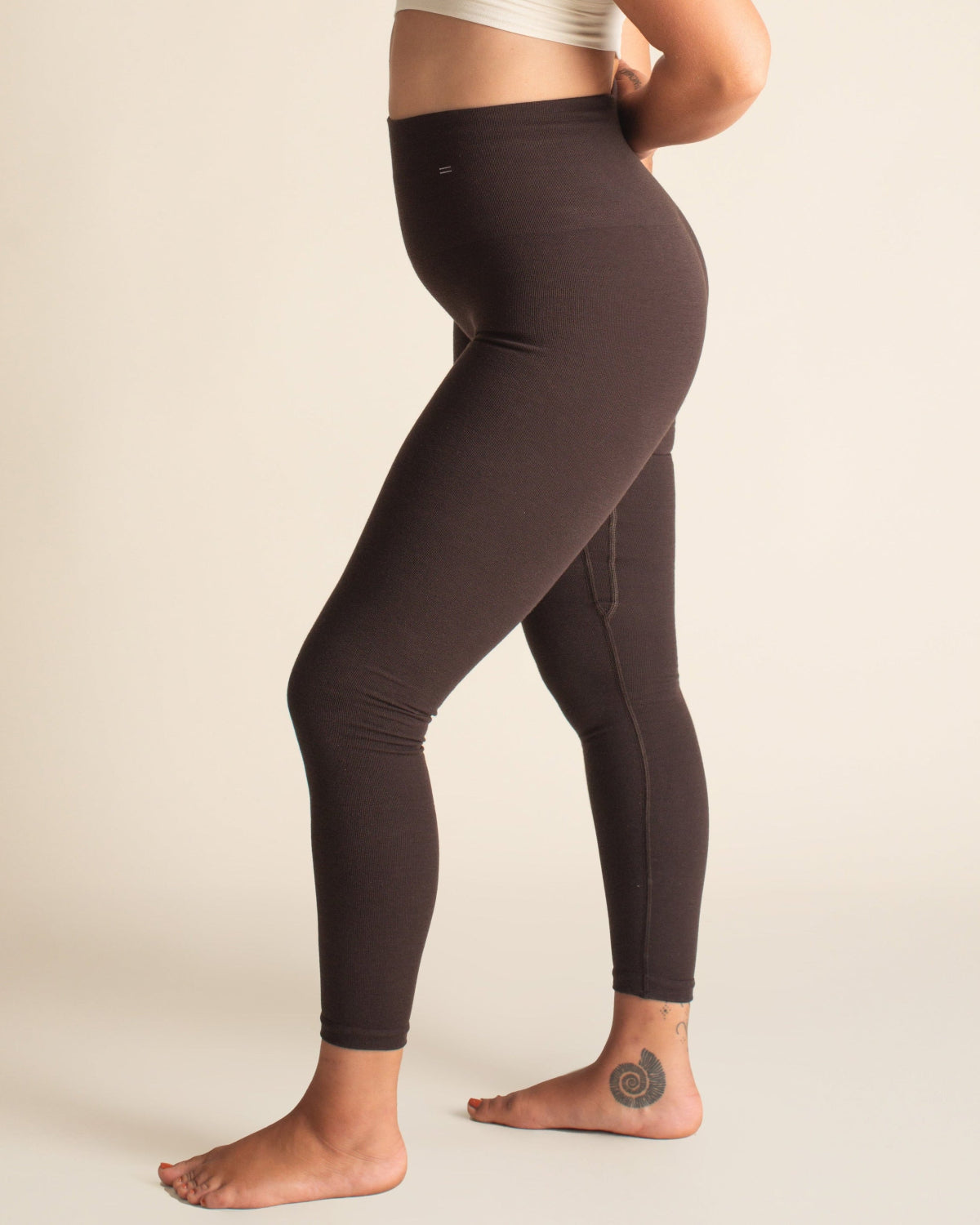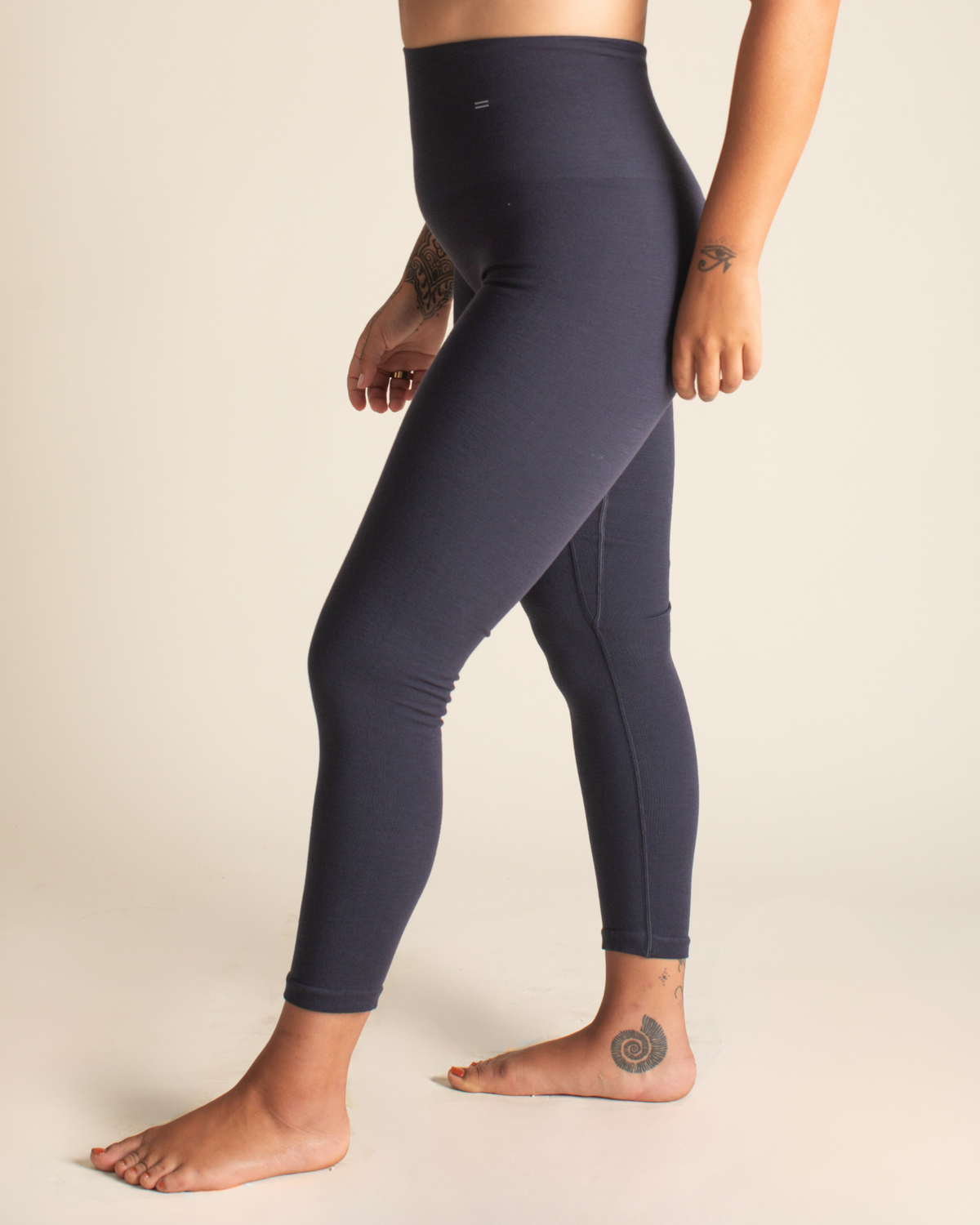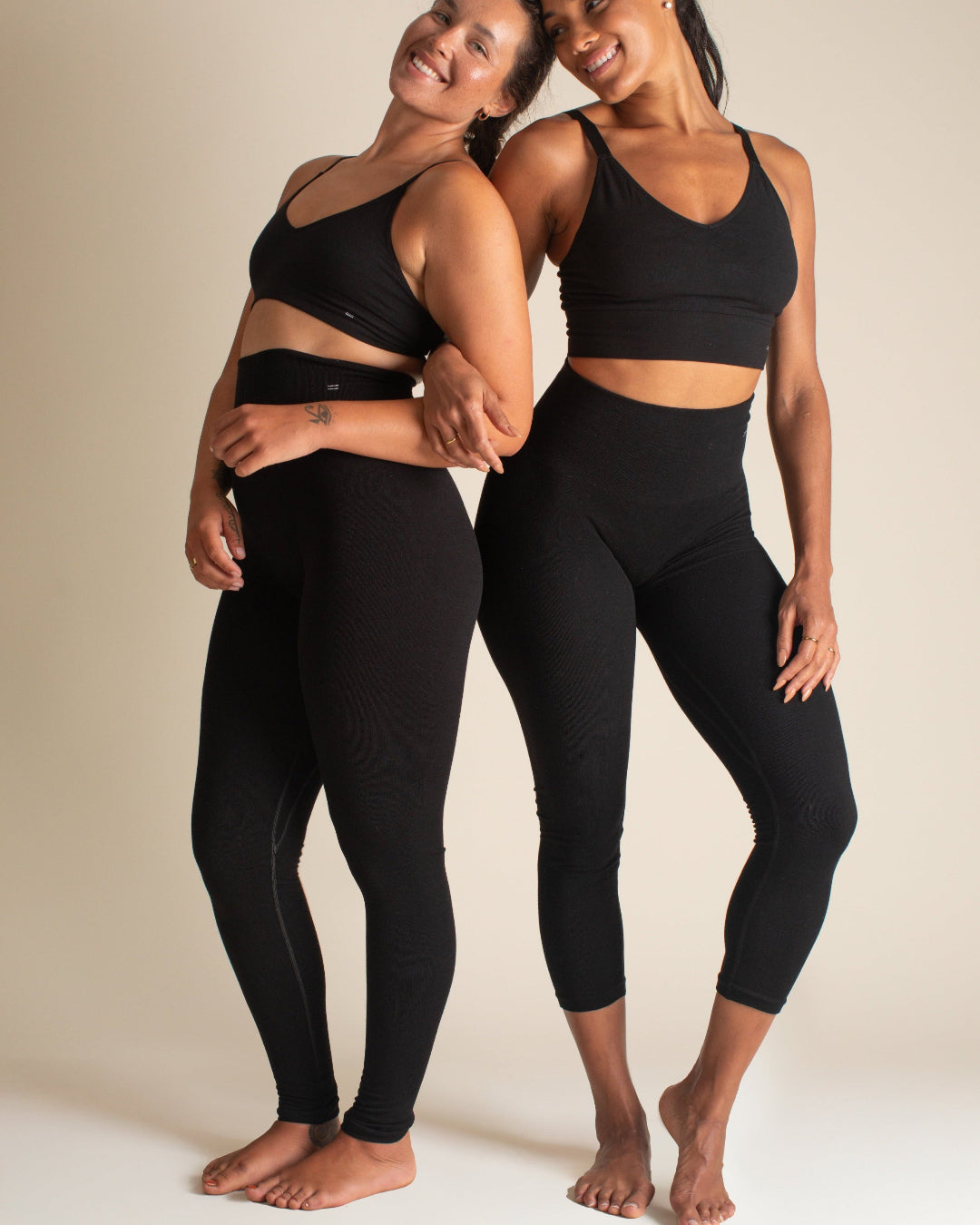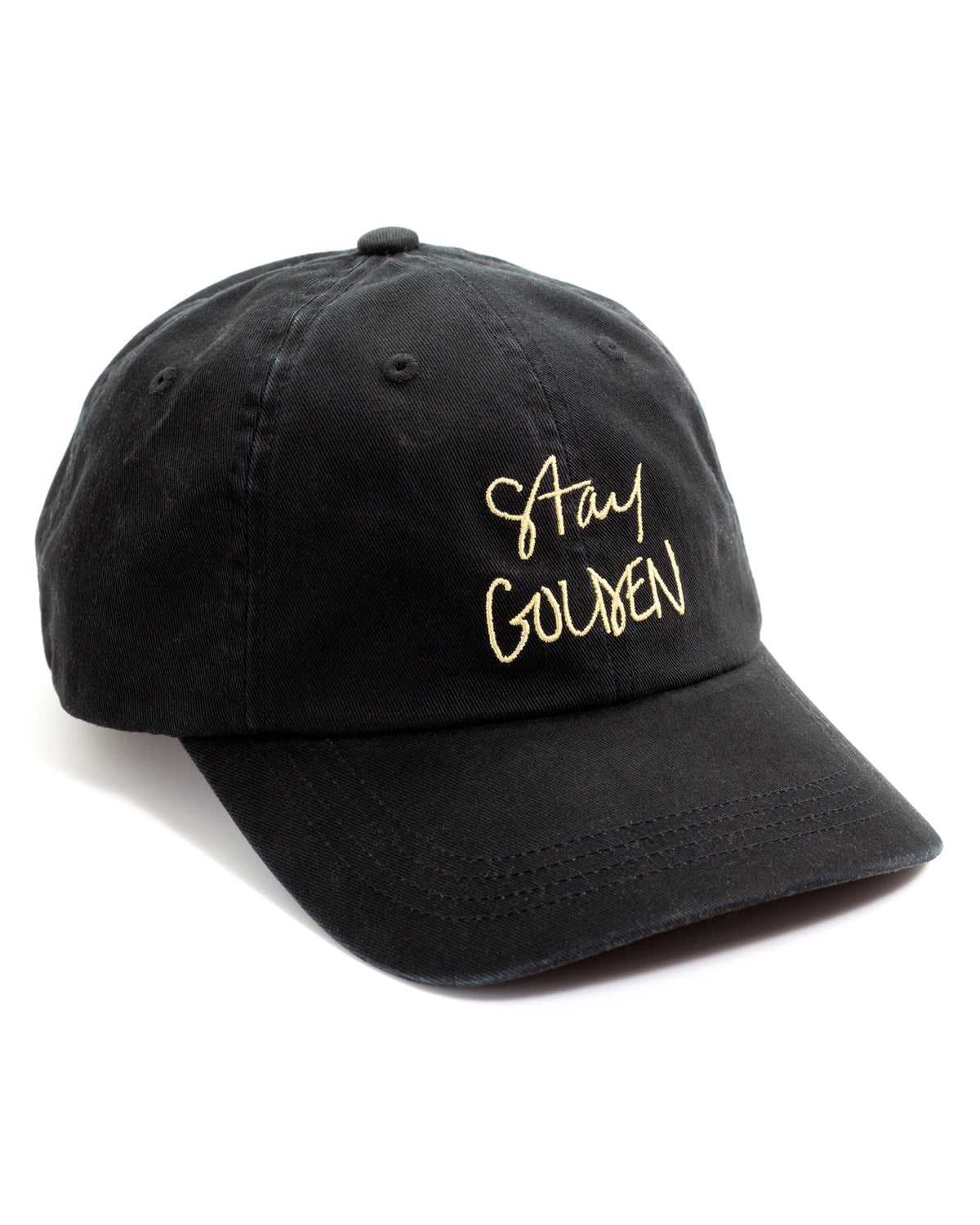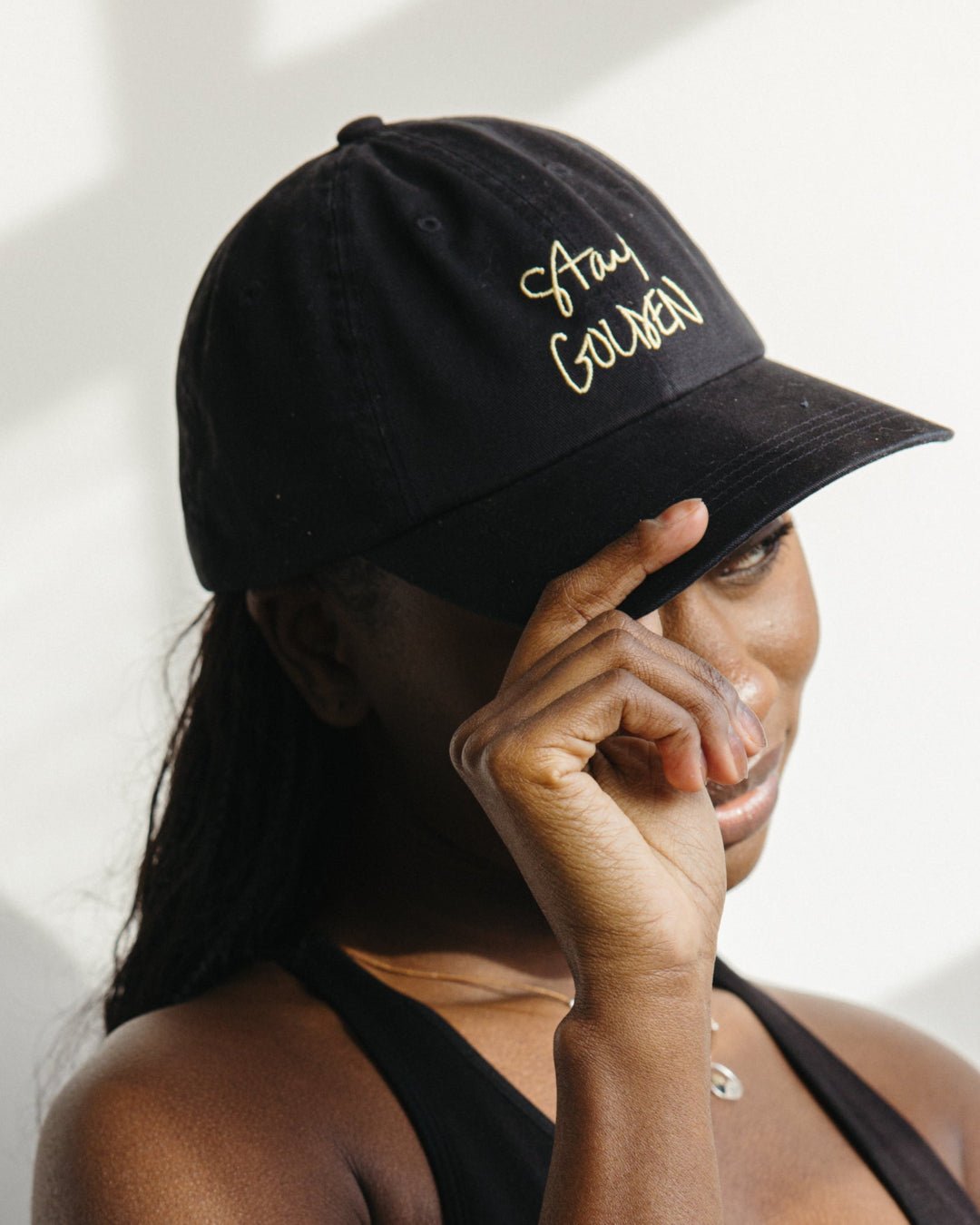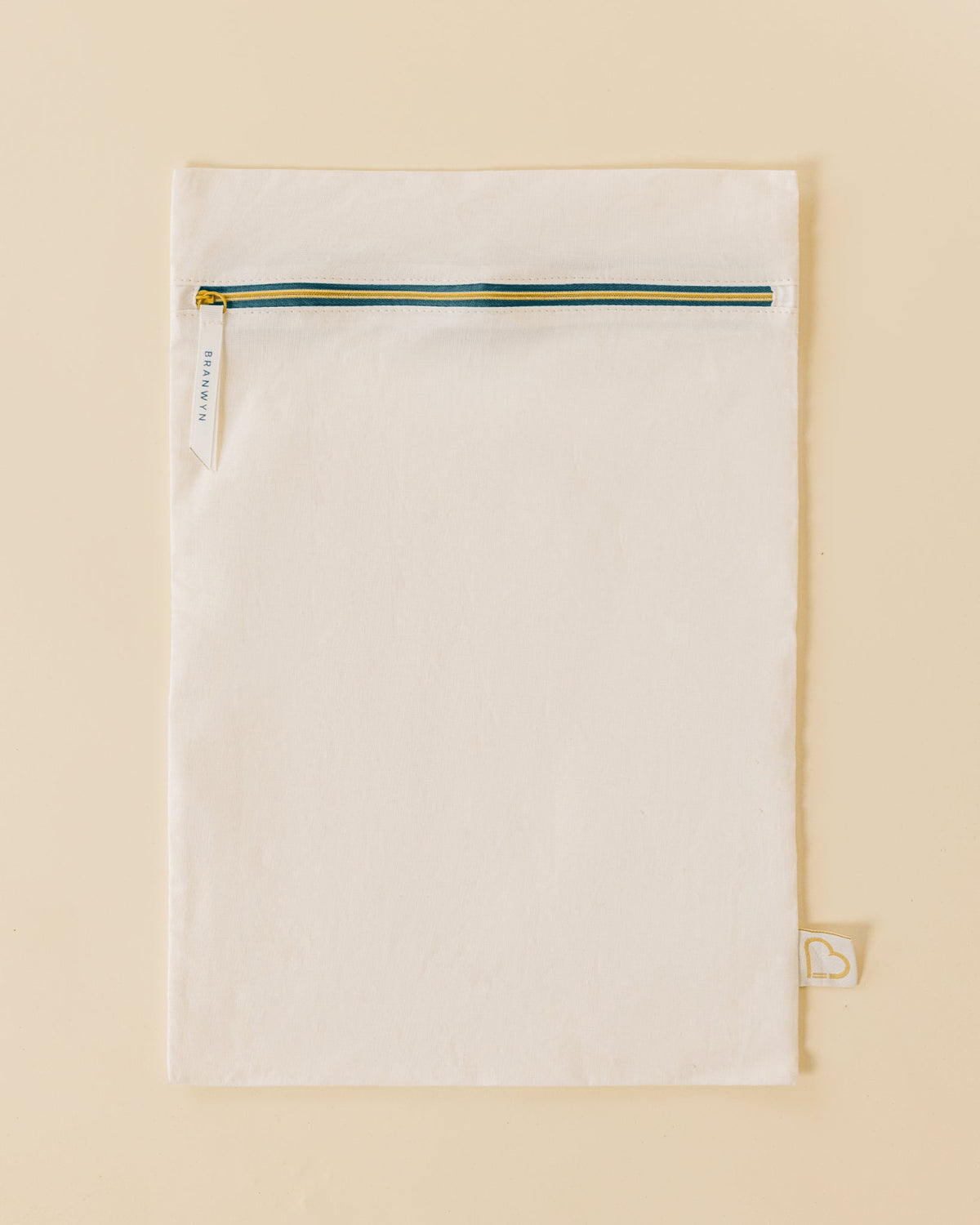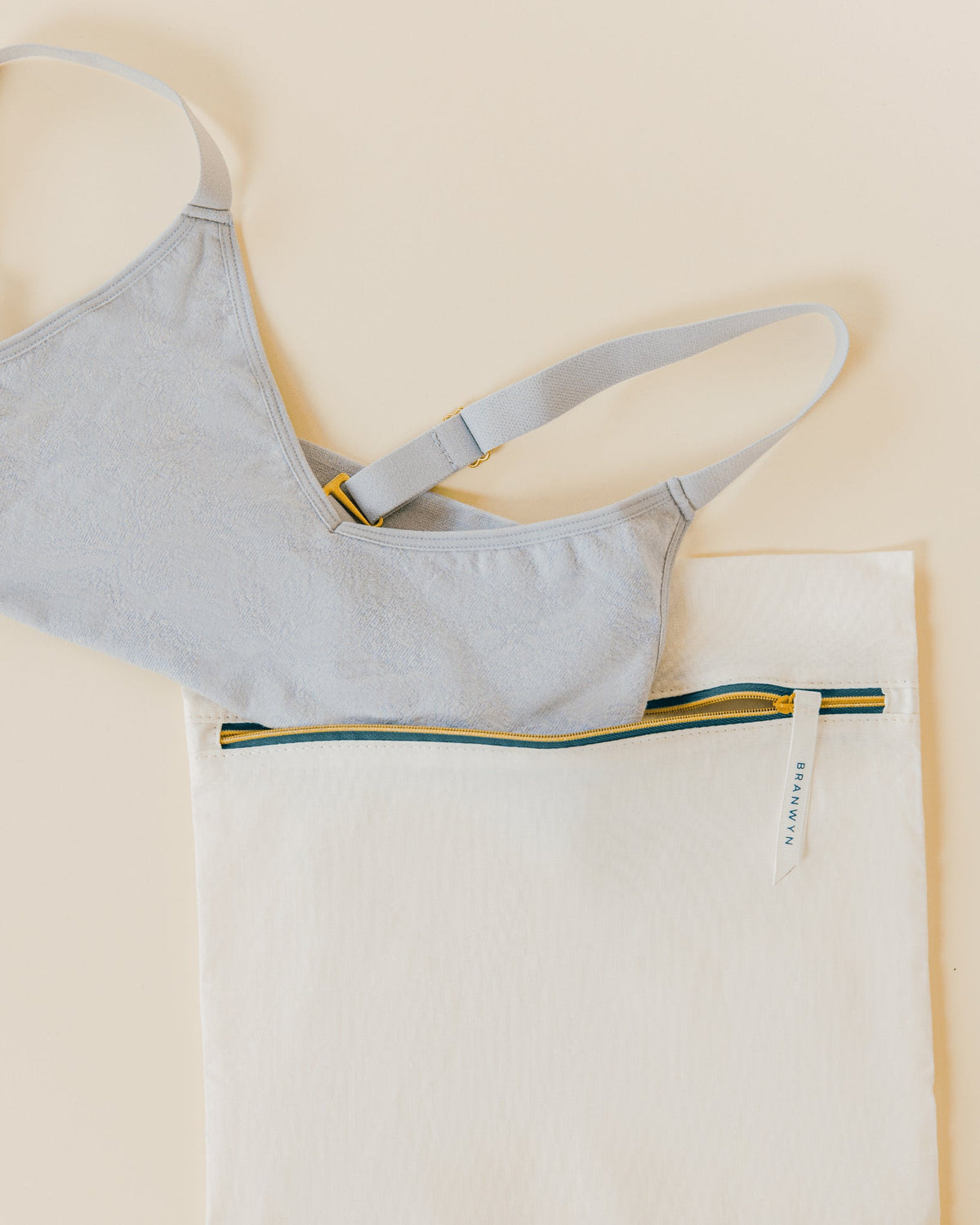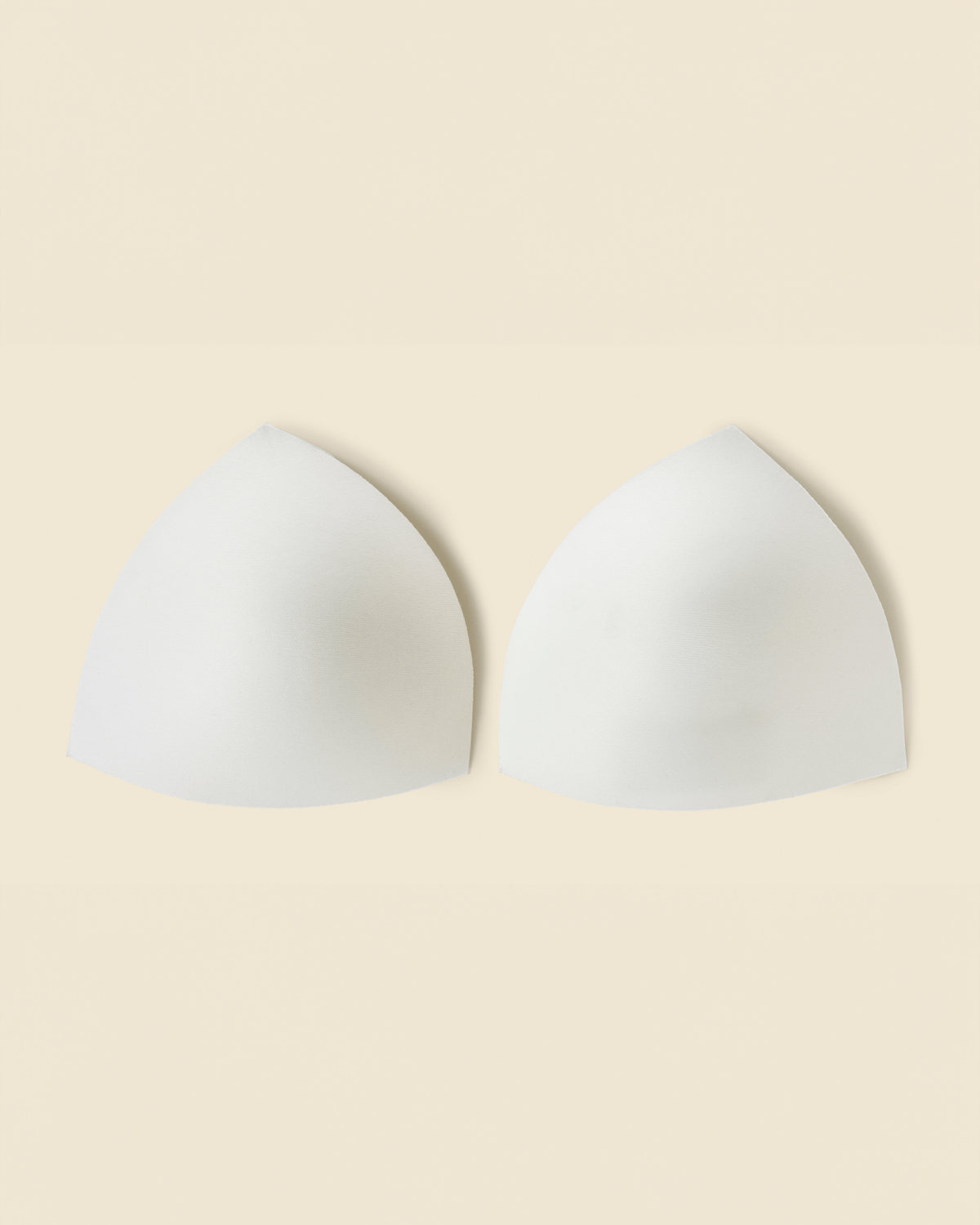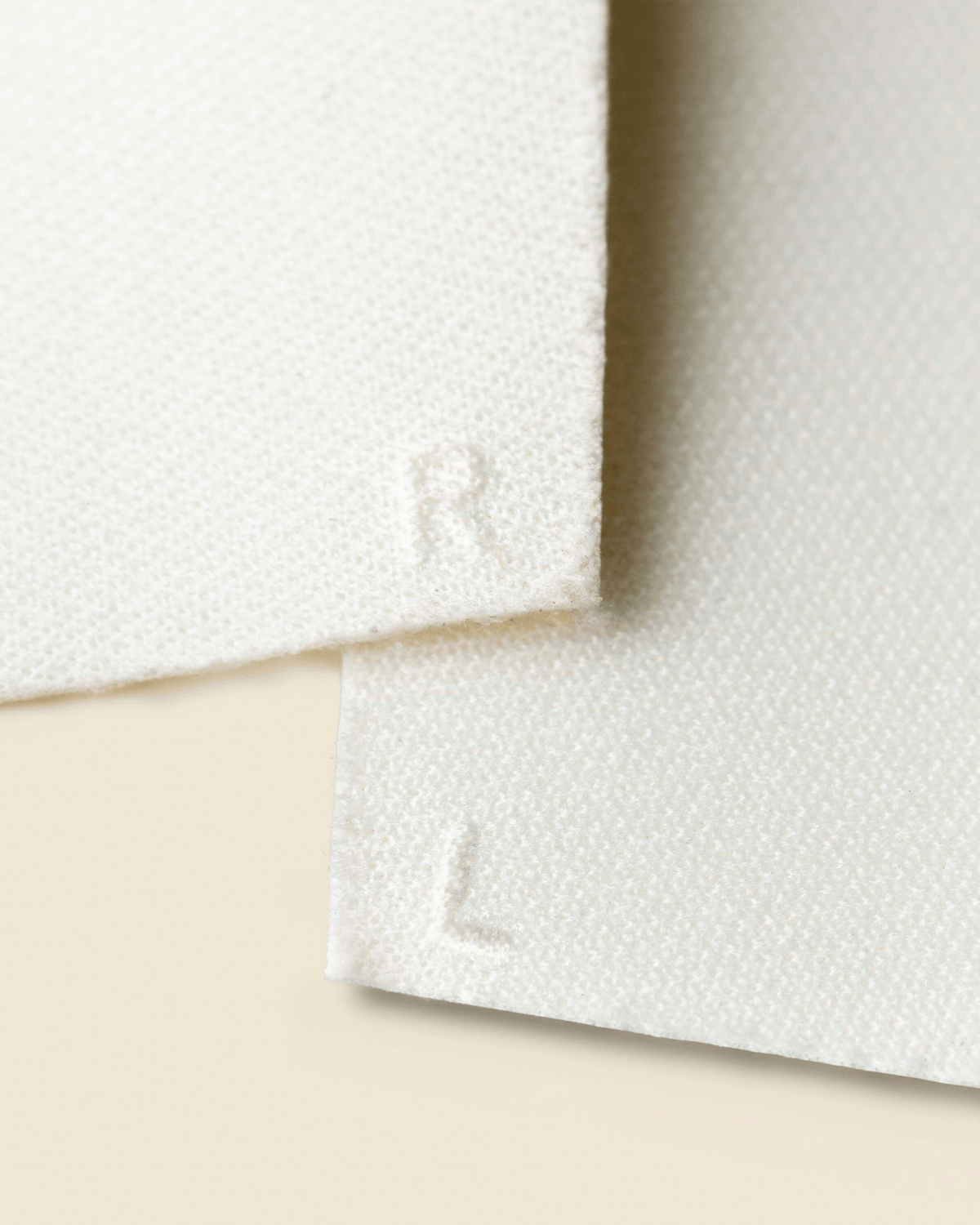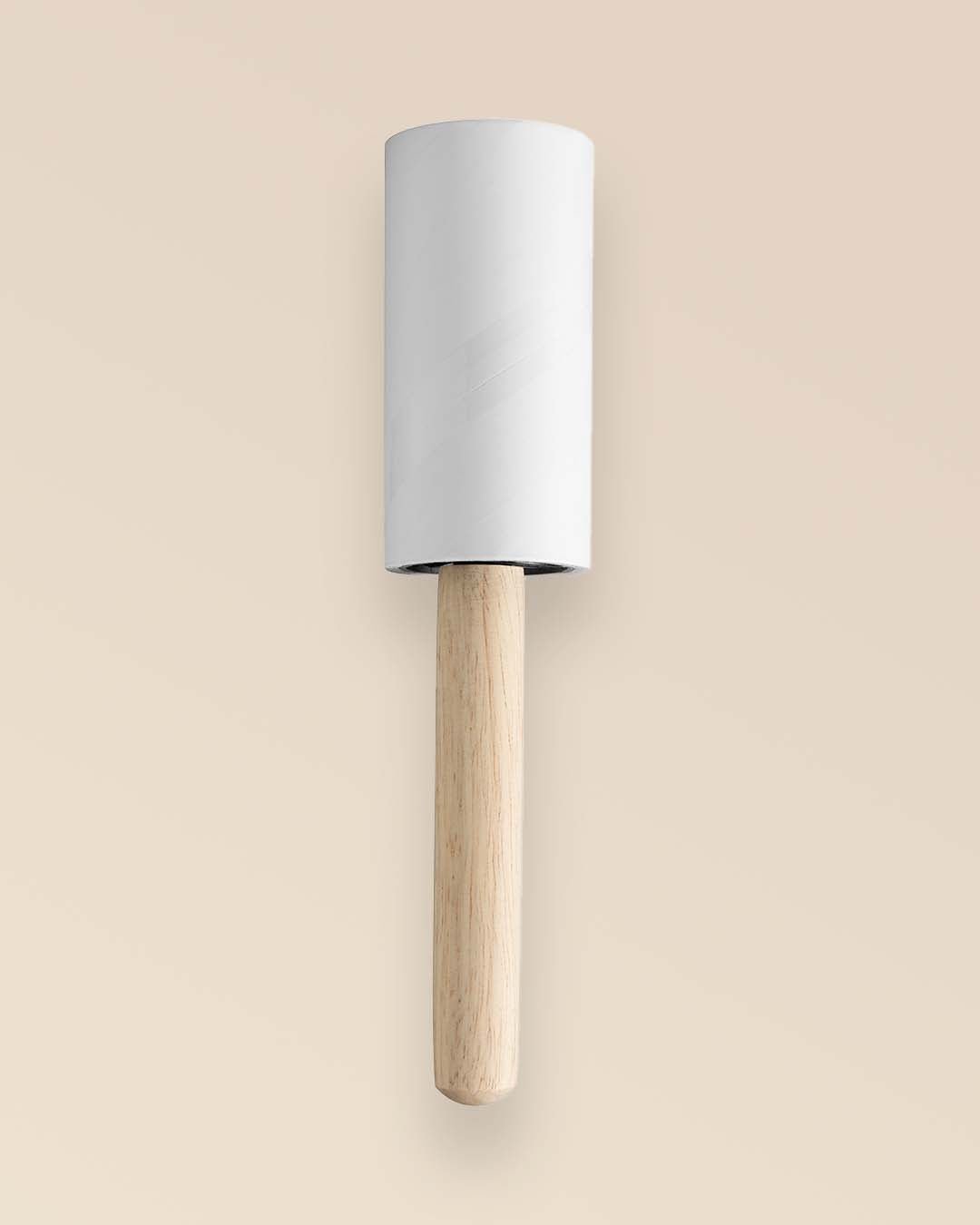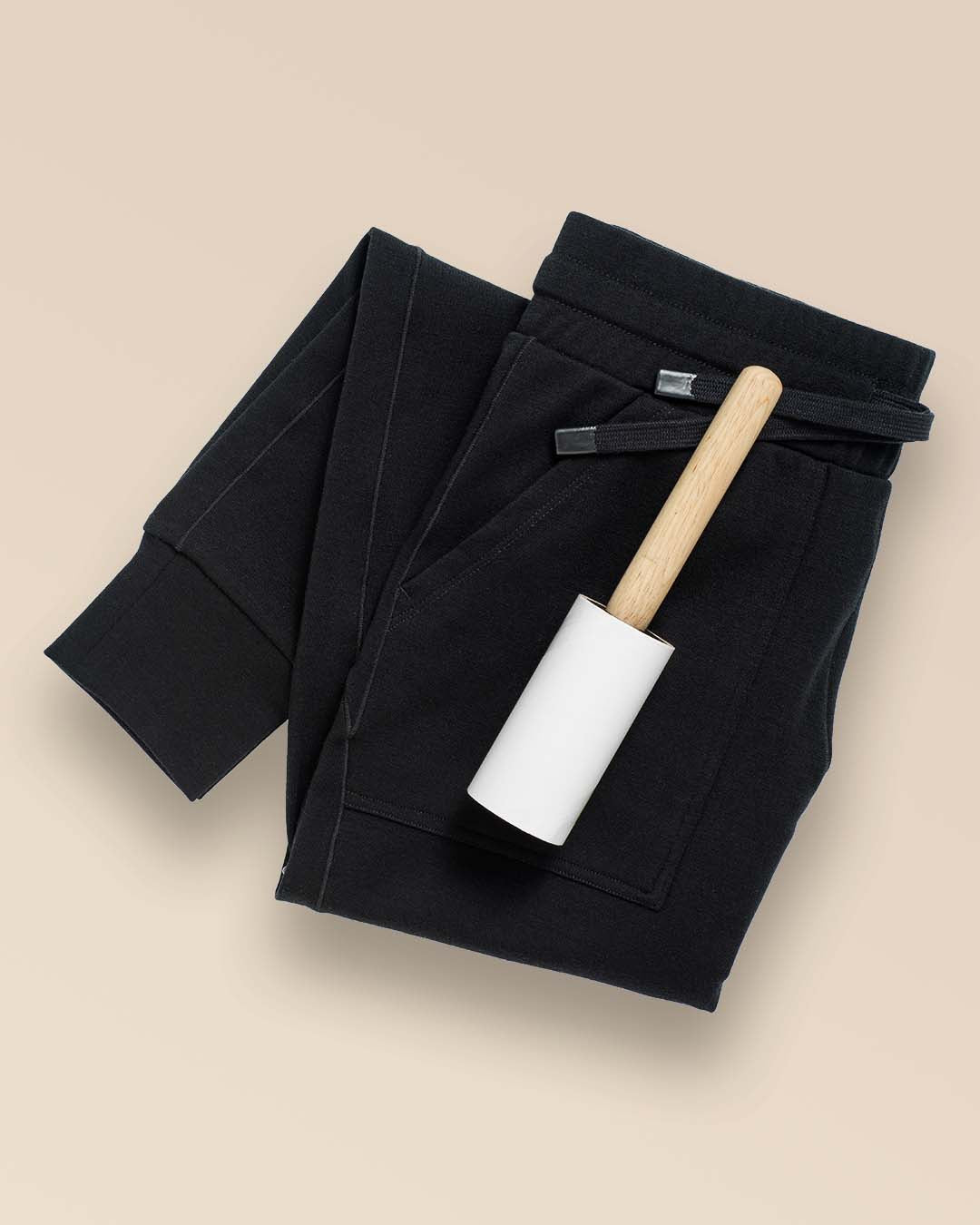Worried about BPA and PFAS? While forever chemicals are an unfortunate reality of our modern world, BRANWYN is proud to offer a sanctuary. It’s true BPA (bisphenol A) and PFAS (per- and poly-fluoroalkyl substances) are used in the production of everything from canned food to water bottles — but you can rest assured there’s one place you will never find these hormone-disrupting chemicals: your BRANWYN Merino Performance Innerwear.
We take the health of the Earth and the health of our bodies with the utmost seriousness. After all, sustainability and women’s wellness were the two central reasons BRANWYN was created in the first place. We pride ourselves on the very best naturally sustainable Merino bras, underwear, and apparel.
That’s why when we saw the Center for Environmental Health’s report that BPA had been found in a wide array of sports bras, we knew we had to put our money where our mouth is. We partnered with the third-party testing company Intertek to conduct an audit of our apparel to be 100-percent certain that no dangerous chemicals —including BPA,PFAS, and Phthalat— could be detected.
Last year in 2024, we passed with flying colors—but we knew we needed to retest every single year to ensure full protection from these harmful chemicals. We’re thrilled to announce that the results from 2025 are in and the third-party testing found zero trace of BPA, PFAS, or Phthlat. Once again, we met the highest standards. Here’s why that matters…

What’s the big deal with BPA and PFAS?
BPA and PFAS are chemicals used in the manufacturing of various consumer goods. Think food packaging, car parts, and clothing.
Despite their ubiquity, these chemicals are known hormone disruptors and have been associated with several health problems and diseases that are on the rise in the United States. According to the Environmental Working Group, exposure to BPA is linked to breast and prostate cancer, spontaneous miscarriage, birth defects, obesity, and Type II diabetes. Similarly, the United States Environmental Protection Agency has reported connections between PFAS and developmental delays in children, increased risk of kidney cancer, reduced immunity, and increased cholesterol levels. Studies have also found phthalate exposure can increase the risk of infertility and pregnancy loss in women, as well as chronic conditions like type 2 diabetes, obesity, asthma, and thyroid dysfunction.
Despite these potentially dangerous health outcomes, BPA and PFAS face very light restrictions in the United States—unlike Europe which polices these chemicals much more stringently.

Why are these chemicals in some activewear?
BPA and PFAs are sometimes used to make clothing—especially activewear—as they may increase durability and prevent static. A 2022 report from the Center for Environmental Health (CEH) discovered sports bras and other athletic apparel from some of the world’s most widely worn brands were exposing the wearer to up to 22 times the legal limit of BPA.
As these chemicals are hormone disruptors, it may be especially hazardous to have them near your most sensitive areas. In fact, in a recent report from National Geographic, Dr. Jimena Díaz Leiva, science director with CEH recommended removing standard-issue workout gear as quickly as possible to minimize skin contact.

How can you be sure they aren’t in BRANWYN Performance Innerwear?
All of this adds up to why BRANWYN invested—and will continue to invest—in third-party audits to be completely confident that everything we create is completely free of forever chemicals. Recently, we partnered with Intertek, a globally recognized inspection agency with a 130-year history of the most scrutinous product testing.
We sent multiple samples of our fabrics, trim, and fasteners—everything that goes into our Innerwear—out for testing. After careful evaluation, we received the report that zero forever chemicals were detected (you can see the report at the end of the article, or by clicking here). This means you can have true peace of mind that you’re not only honoring your body with garments that feel amazing and support your lifestyle, but also actively limit your exposure to harmful chemicals every time you put them on.

What other standards does BRANWYN uphold?
Ensuring our garments are free of forever chemicals is only one of the ways BRANWYN regularly audits our apparel and our practices. We also use third-party auditing to make sure we uphold all of the following:
ZQ: wool certification standard that ensures that companies, farmers, and manufacturers are following sustainable and ethical practices.
OEKO-TEX® STANDARD 100: certified yarn has been tested for harmful substances, and is fround harmless for human health
Responsible Wool Standard: requires all sites, from wool farmers to the seller, to be certified to protect the well-being of sheep and the land they graze on. RWS farmers and ranchers must meet animal welfare, land management, and social requirements.
Woolmark: certification program that tests and provides assurance of the quality of wool apparel, wool yarn and fabric, wool care product and wool processing technology
In an era rife with green-washing, it’s critical to BRANWYN that we have true integrity behind our claims. You don’t have to simply take our word for it, but we are committed to making the best and healthiest solutions that are always as good for the planet as they are for your privates. Mad love.
Editor’s note: This blog was updated from the original article published in February 2024 to reflect the most current testing.

